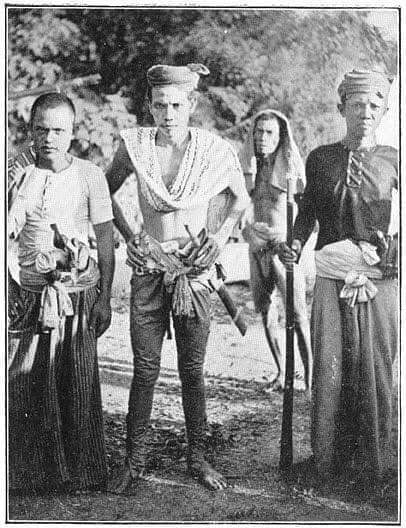Bangsamoro
Historical Timeline
BC
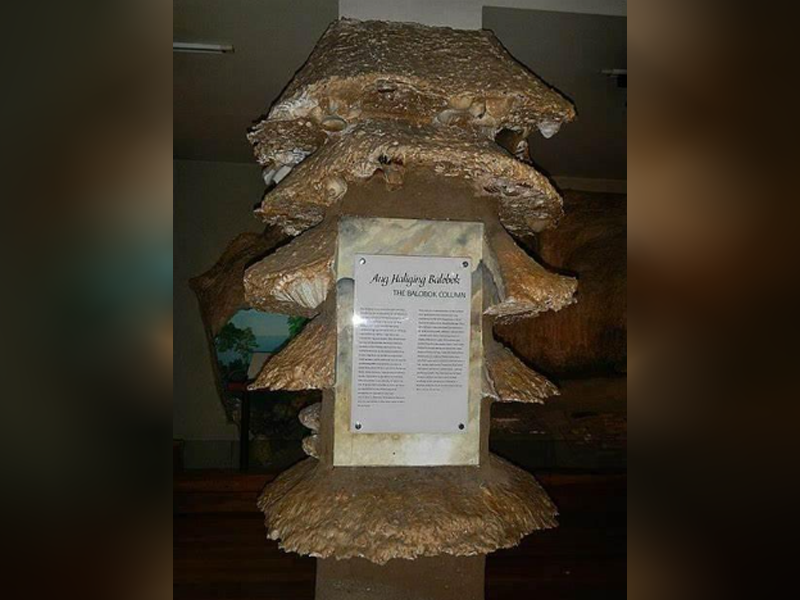
6810
Early Civilization 6810 - 3190 B.C.
AD
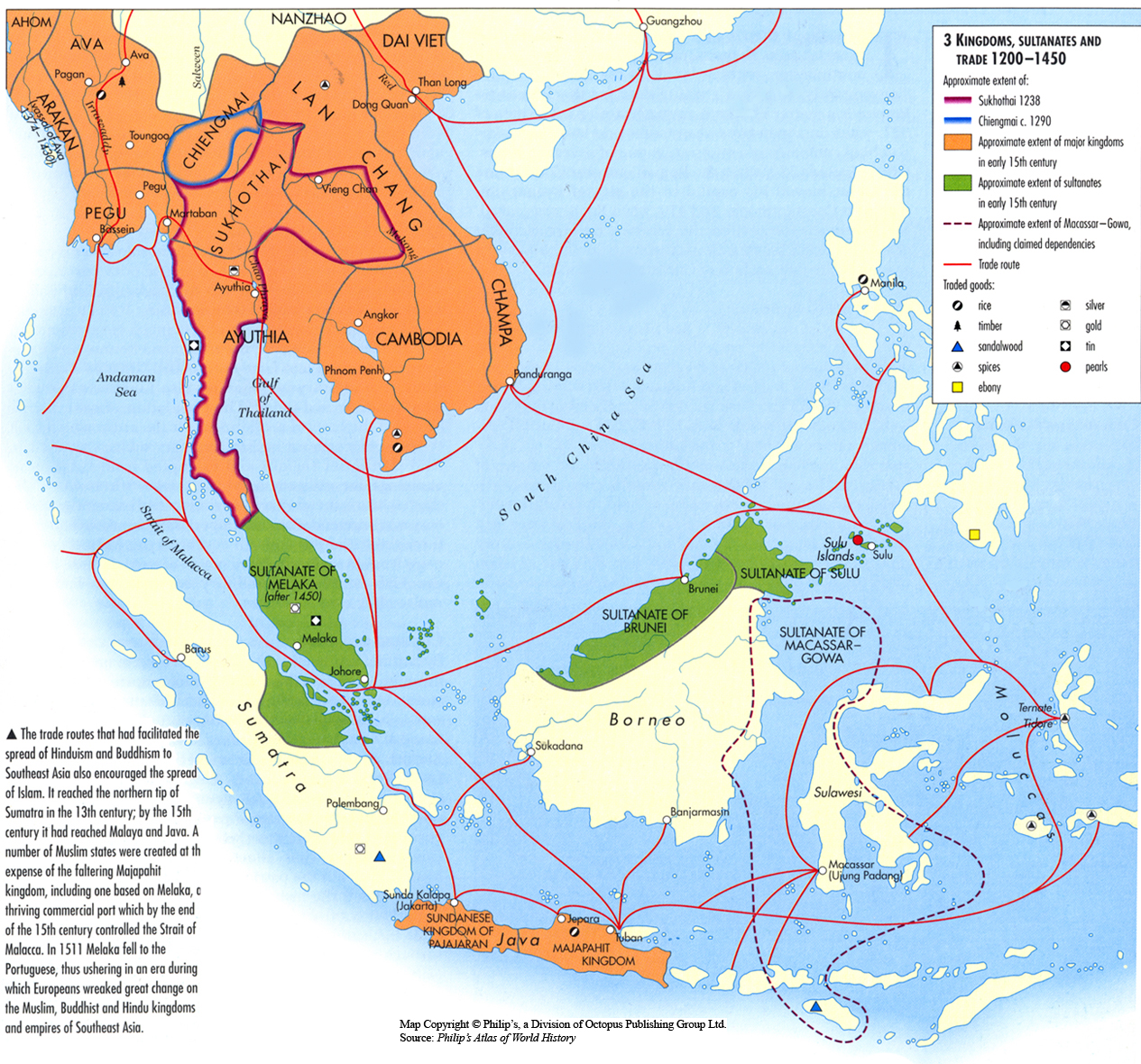
800AD - 1365
Indian Link and Influences

800 - 1365
What the Muslims Learned from Their Long Interaction with the Chinese
Further Spread to Luzon and Visayas
982

1270-1275
Arrival and Spread of Islam in the Sulu Archipelago 1270-1275
1300

AD 1370
Map of Mindanao in Asia
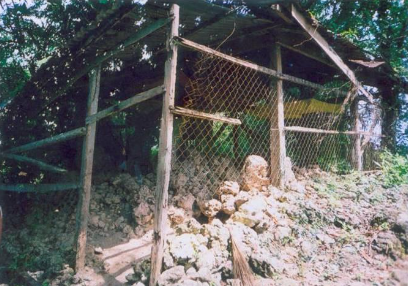
1300
Islam’s Further Spread to Maguindanao and Lanao Areas
1400
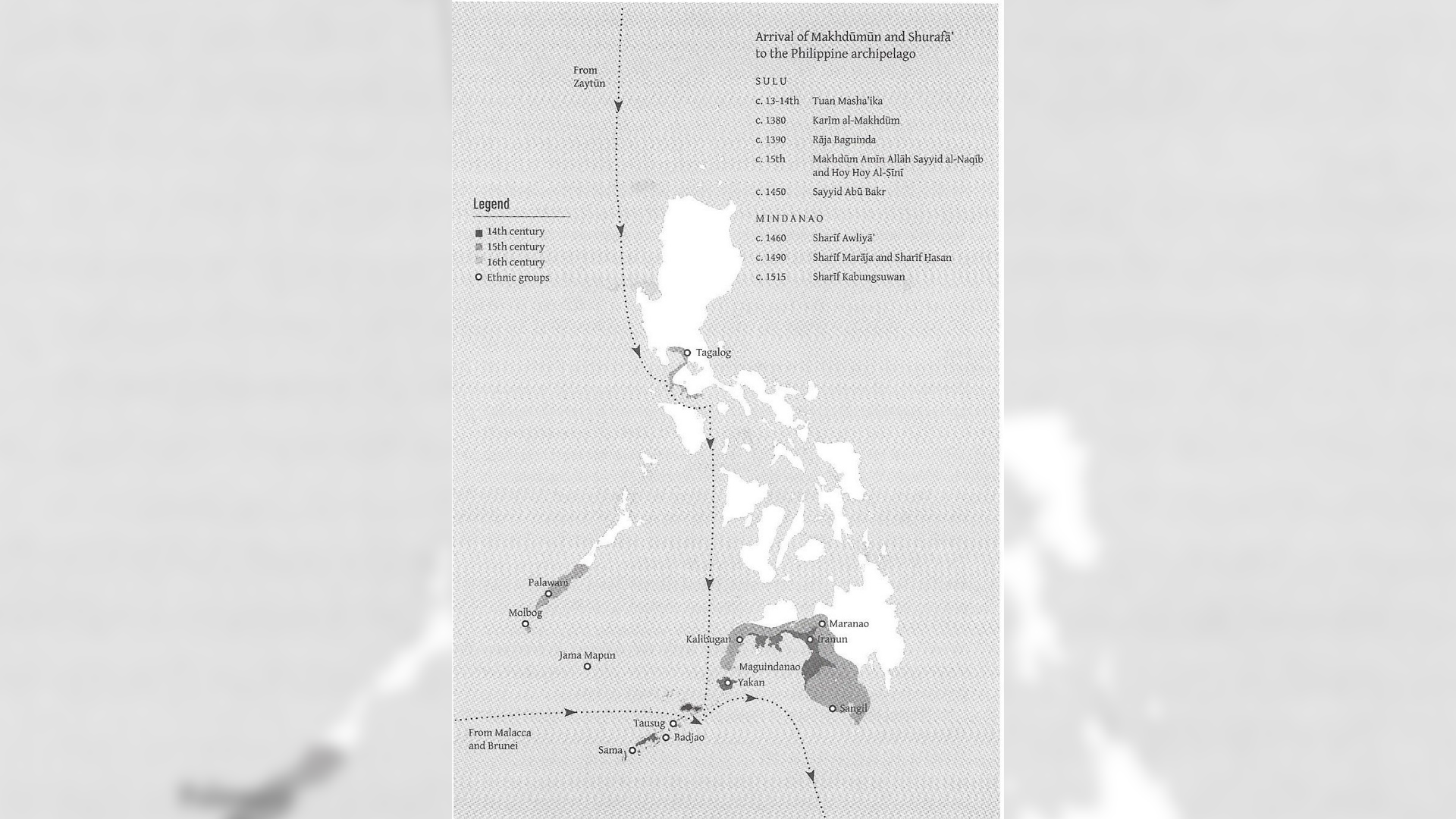
1405
Islam Moves North
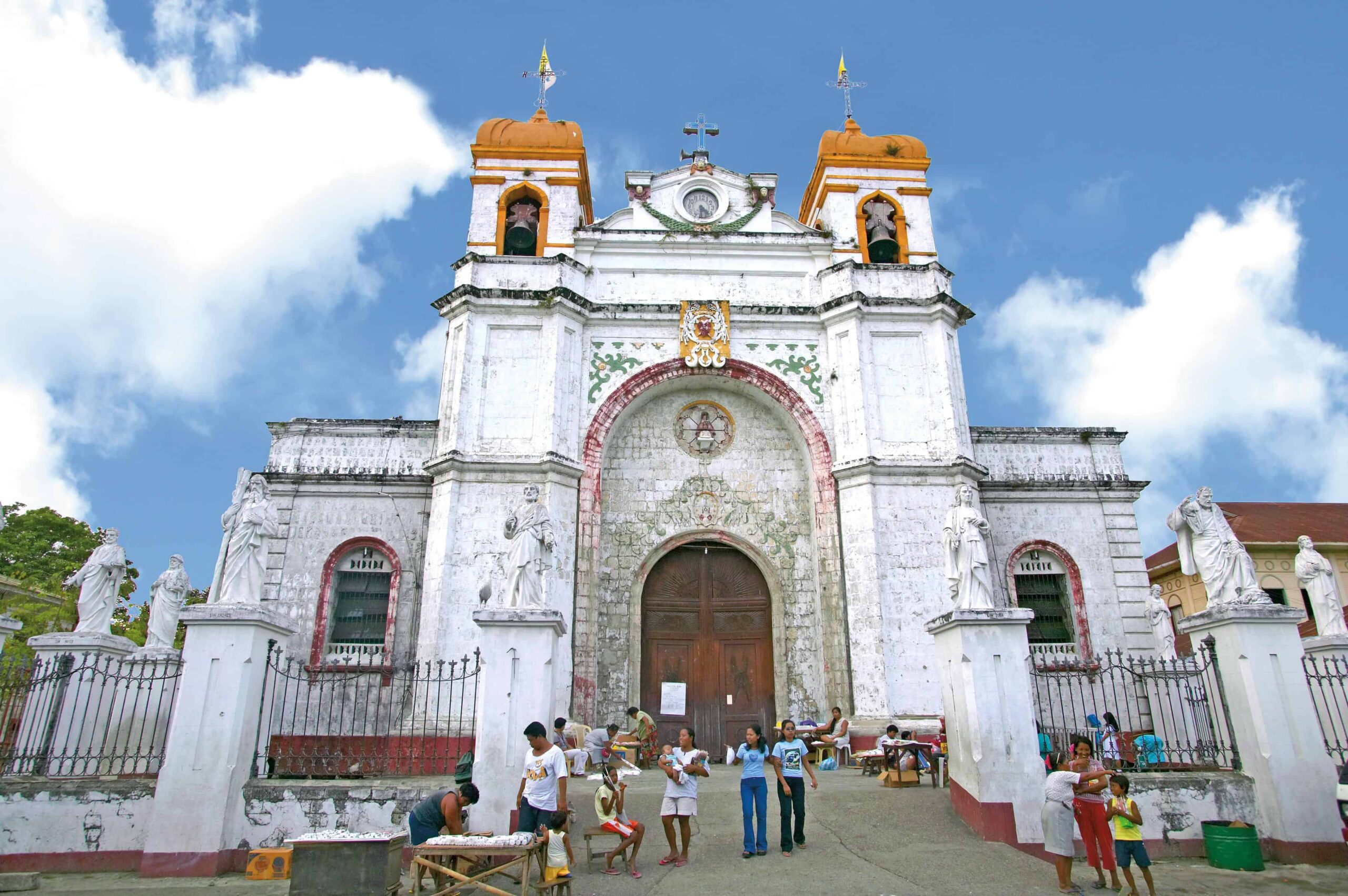
1450
Legacy of Islam in Luzon and the Visayas

The Papal Bull of 1493 issued by Pope Alexander VI was a document that authorized the Spanish government to colonize, enslave and spread Catholicism using force if necessary. It was here when the Philippines was subjugated and brought under Spanish Crown, while the Muslims in the south fought to remain free.
The Papal Bull of 1493
1500

1543
First military victory of Buayan’n in Sarangani against the Villalobos Expedition of imperial Spain

June 1572
The Battle of Bangkusay between the young Macabebe Chief Tariq Sulayman and Miguel Lopez de Legazpi in June 1572. (by Dan H. Dizon in Center for Kampampangan Studies, Holy Angel University. Photo was provided by Ian Alfonso)

1578
Governor Francisco de Sande sent invasion troops in Brunei in and in Jolo and Magindanaw (Maguindanao), all but doomed into oblivion except for Brunei were de Sande occupied the Sultanate for a few months only after his Spanish and Indio (later Filipino) colonial troops were decimated by an herb-borne plague.

MAY 23, 1578
1578-1596 Second Stage of the Moro War
1578-1596
Expedition headed by Captain Gabriel de Ribera
1579
Invasion of the Rajahnate (Kerajaan) of Bwayan
April 25, 1596
1600
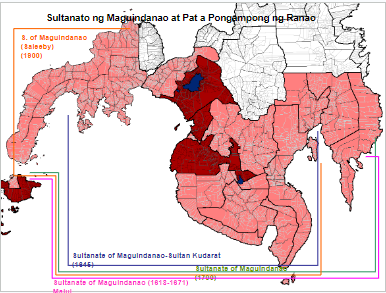
1600 - 1900
Sultanato ng Maguindanao at Pat a Pongampong ng Ranao
Maguindanao Treaty
September 8, 1605
Buayan-Spanish Treaty
March 1, 1609
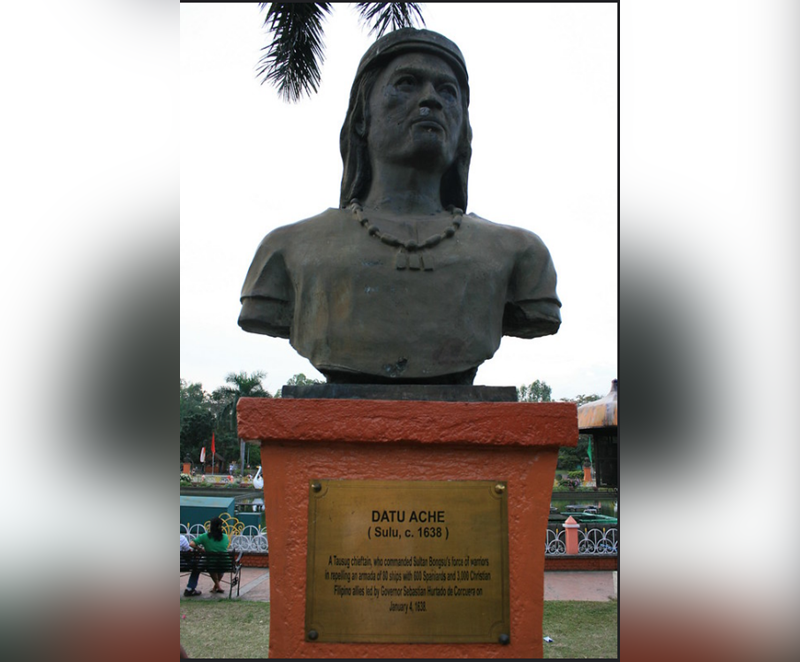
1617
Datu Aceh: The Famed Warrior Earning the Wrath of Spanish Conquistadores
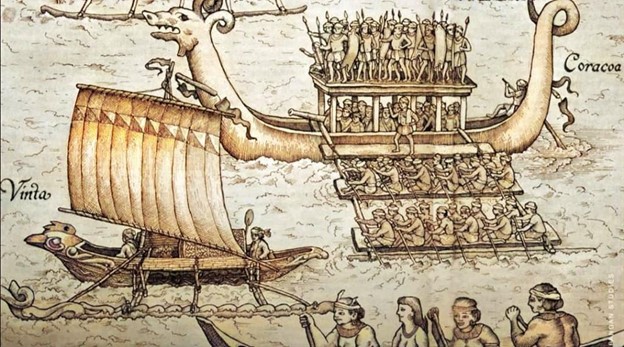
1627
Raja Bongsu: The Beginning of an Epic Battle
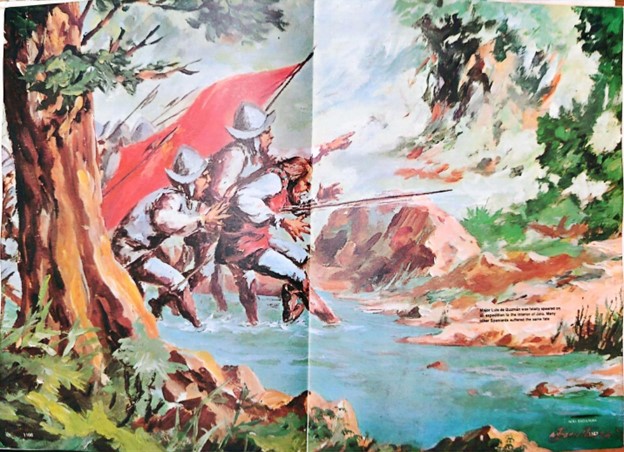
1638
The Epic Battle: Four-Month Siege of Jolo
Maguindanao Second Treaty
March 1639
Qudarat-Lopez Treaty
June 24, 1645
Bongsu-Lopez Treaty
April 14, 1646
Death of Qudarat
1671
The Capture of Lamitan Town
March 13, 1637
1700
The Sultan of Borneo made a cession of the north part of Borneo from Keemanees northward, with the island of Palawan, Banguey, Balambangan, etc to the Sooloos (Sulu).
1704
Cession of Balabak area in Palawan
1705
Sultan Bayan ul-Anwar capitulations of 1719
1719
Sultan Pakir Maulana Kamza Treaty
1734
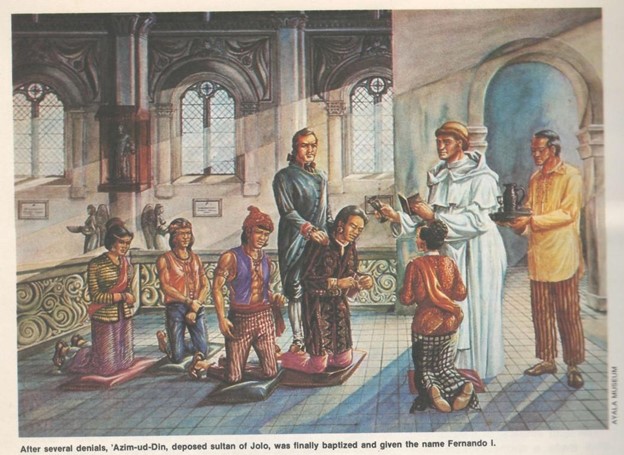
1735-1775
The Intriguing Story of Sulu Sultan ‘Azim ud-Din

1753
Sultan Mu‘izz ud-Din Sought Support from Chinese Emperor Against Spaniards
1775 Trade Agreement
1775
1789 and 1794 Treaties
1789 and 1794
1800
1805 Treaty of Alliance
November 4, 1805
Sultan Maitum Resuscitated the 212 Years (1619-1831) Eclipsed of the Rajahnate of Buayan
1831
1837 Treaty
1837
Treaty of Datu Dakula
May 20, 1843
Treaty Amity and Commerce
May 15, 1845
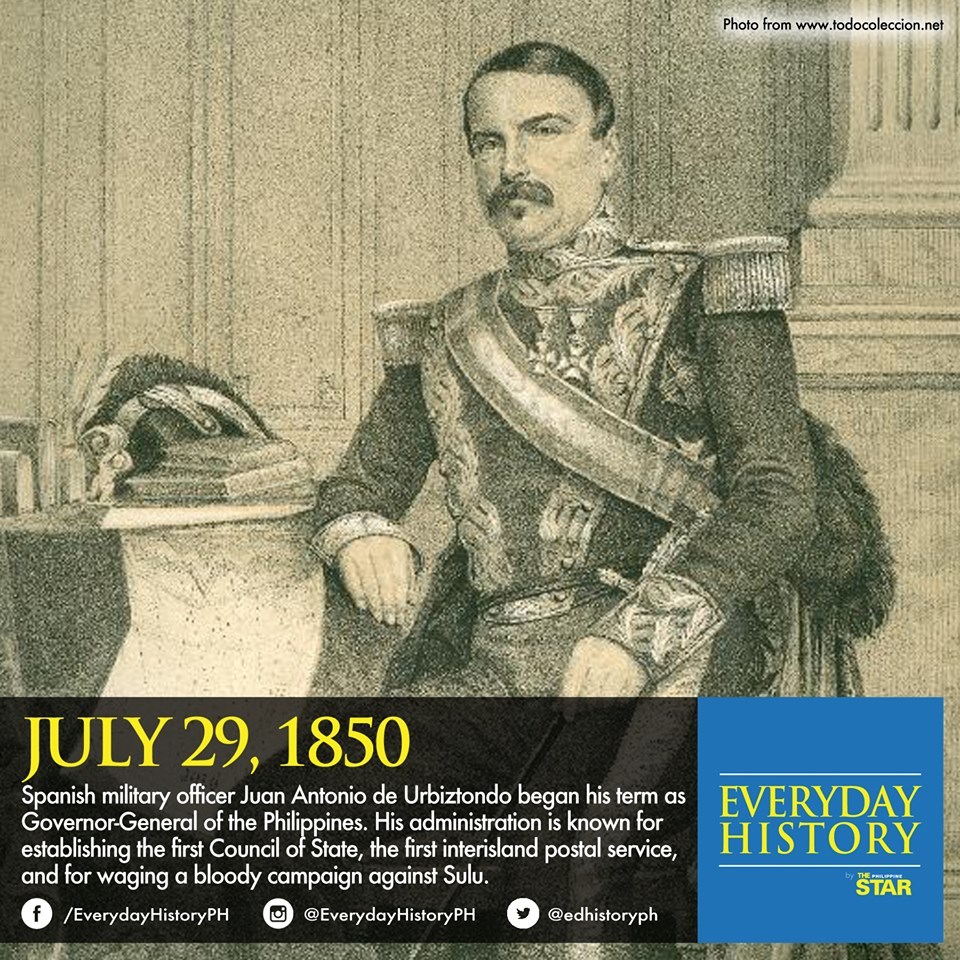
1850
Urbiztondo and the Friendship Treaty With Sulu
1861 Capitulations
1861
Peace Treaty 1875
1875
Treaty of Friendship
June 14, 1875
Buayan Capitulations
1887
Act of Adhesion
1888
Act of Conciliation
1888
Invasion of Maguindanao
January 1889
Invasion of Marawi
1895
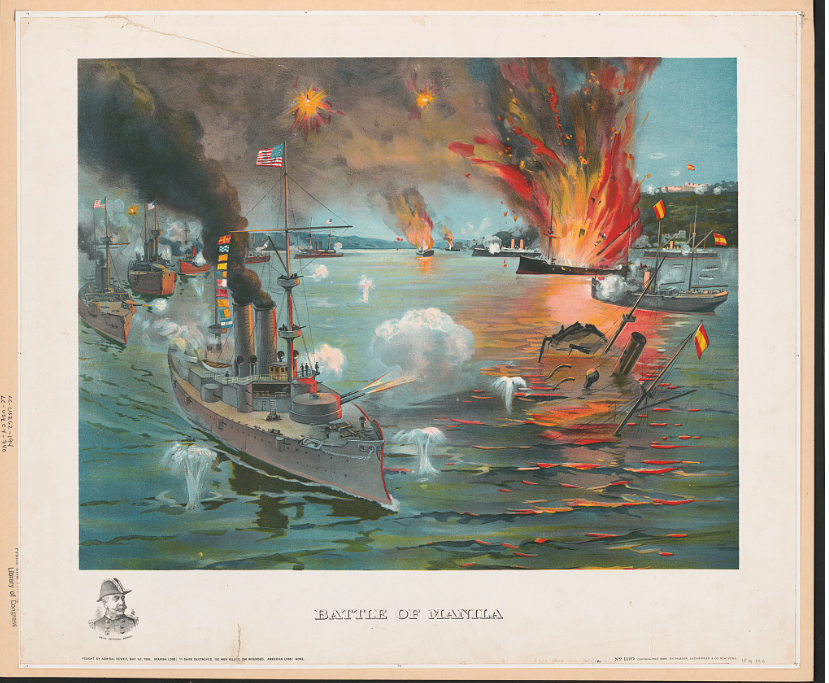
June 12, 1898
America’s Manifest Destiny and the 1898 Mock Battle of Manila Bay
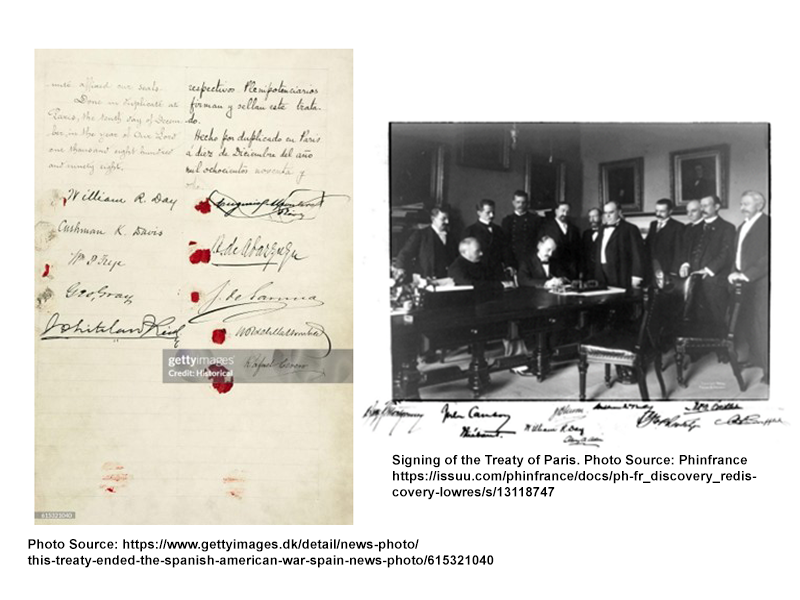
December 10, 1898
Treaty of Paris and the American Occupation of the Philippines

1899
The 1899 Kiram-Bates Agreement
1900
LUMAD ETHNOLINGUISTIC GROUPS, TRADITIONAL GEOGRAPHICAL LOCATIONS IN MINDANAO, CIRCA 1900
1900
Meranaw-American War 1902-1916
1902-1916

1901
Western Secular Education: America’s Tool for Colonization
Bangsamoro (Moro) lands were opened to settlers
1902
Creation of the MORO PROVINCE (1903-1913): The U.S. Instrument of Direct Rule
June 1, 1903
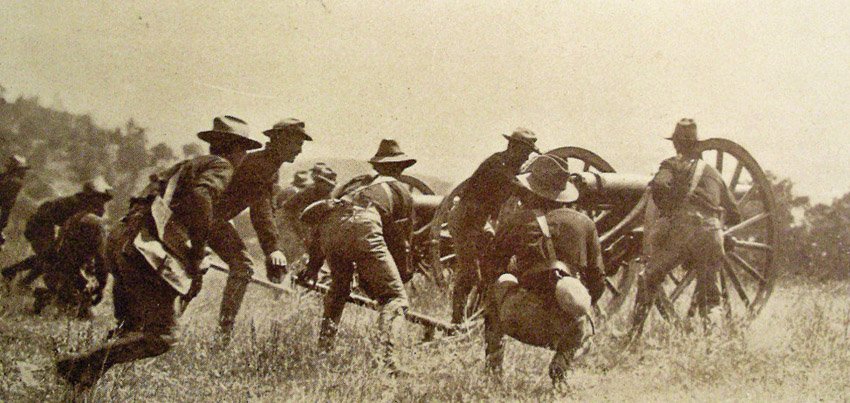
1903 - 1906
Panglima Hassan Uprising and the Battle of Bud Dahu
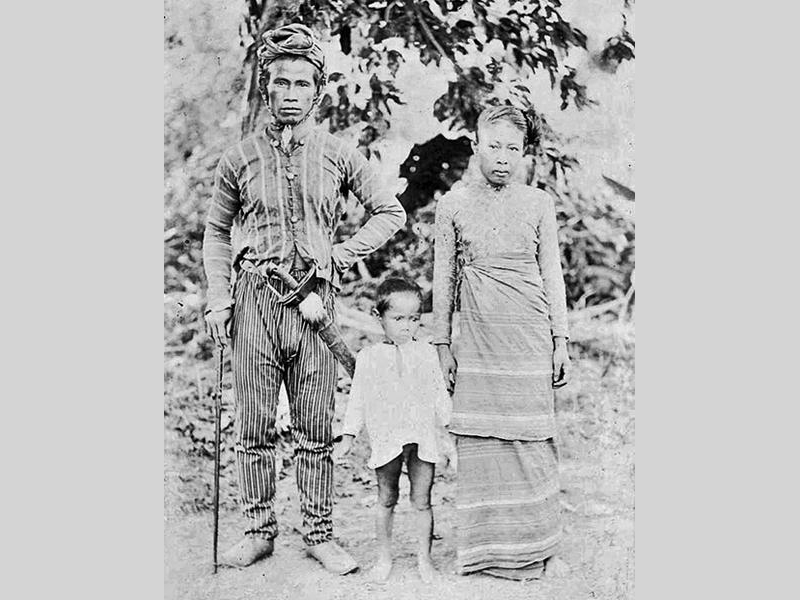
1903-1905
The Pursuit of Datu Ali in Cotabato
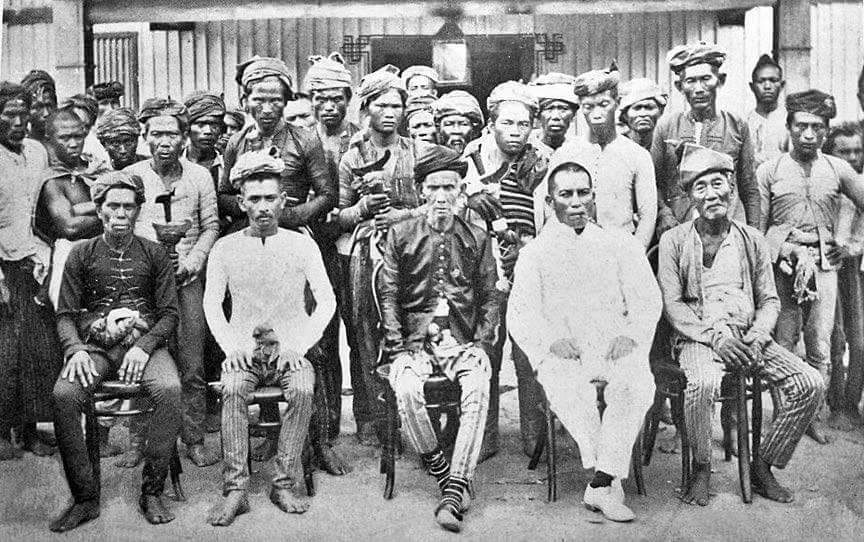
1910
Protestest Against Americans
Creation of Colonies
1912
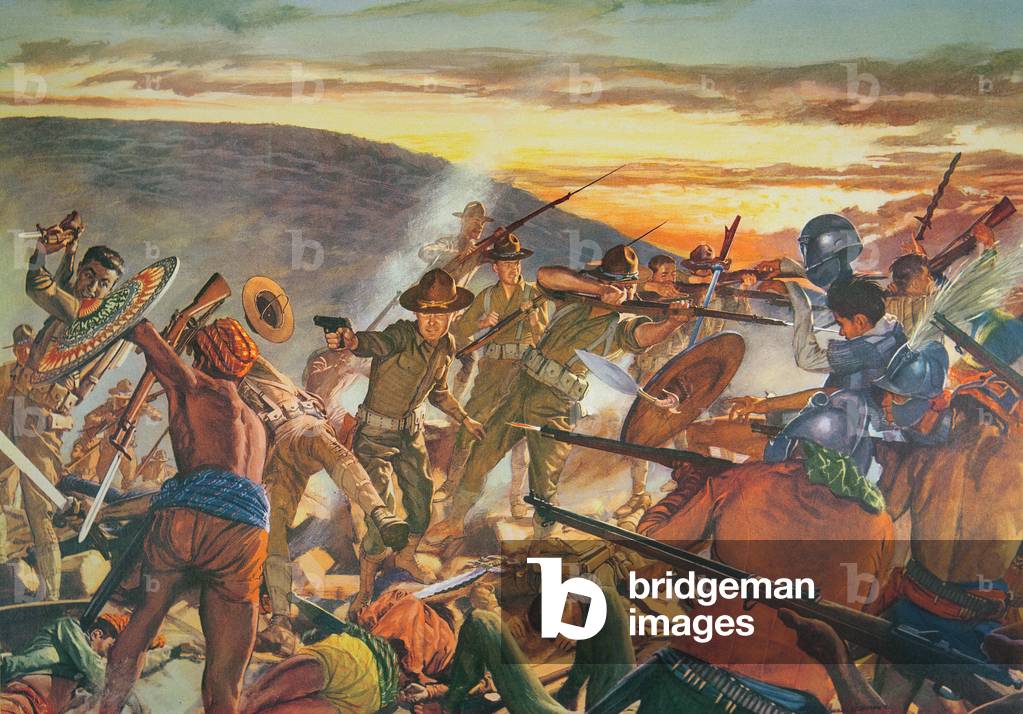
1913
Battle of Bud Bagsak
DEPARTMENT OF MINDANAO SULU
MARCH 13, 1914 - FEBRUARY 5, 1920
Sulu Petition to U.S. Government
1921

1933
The Sultan of Sulu Has His Own Flag
Dansalan Declaration
1935
Japanese Imperial Army Invasion of Mindanao
December 8, 1941

July 04, 1946
1946 Philippine Independenc: A Separate People in a New Nation

1948
1948 Kamlun Uprising
Resettlement - Republic of the Philippines
1949-1954
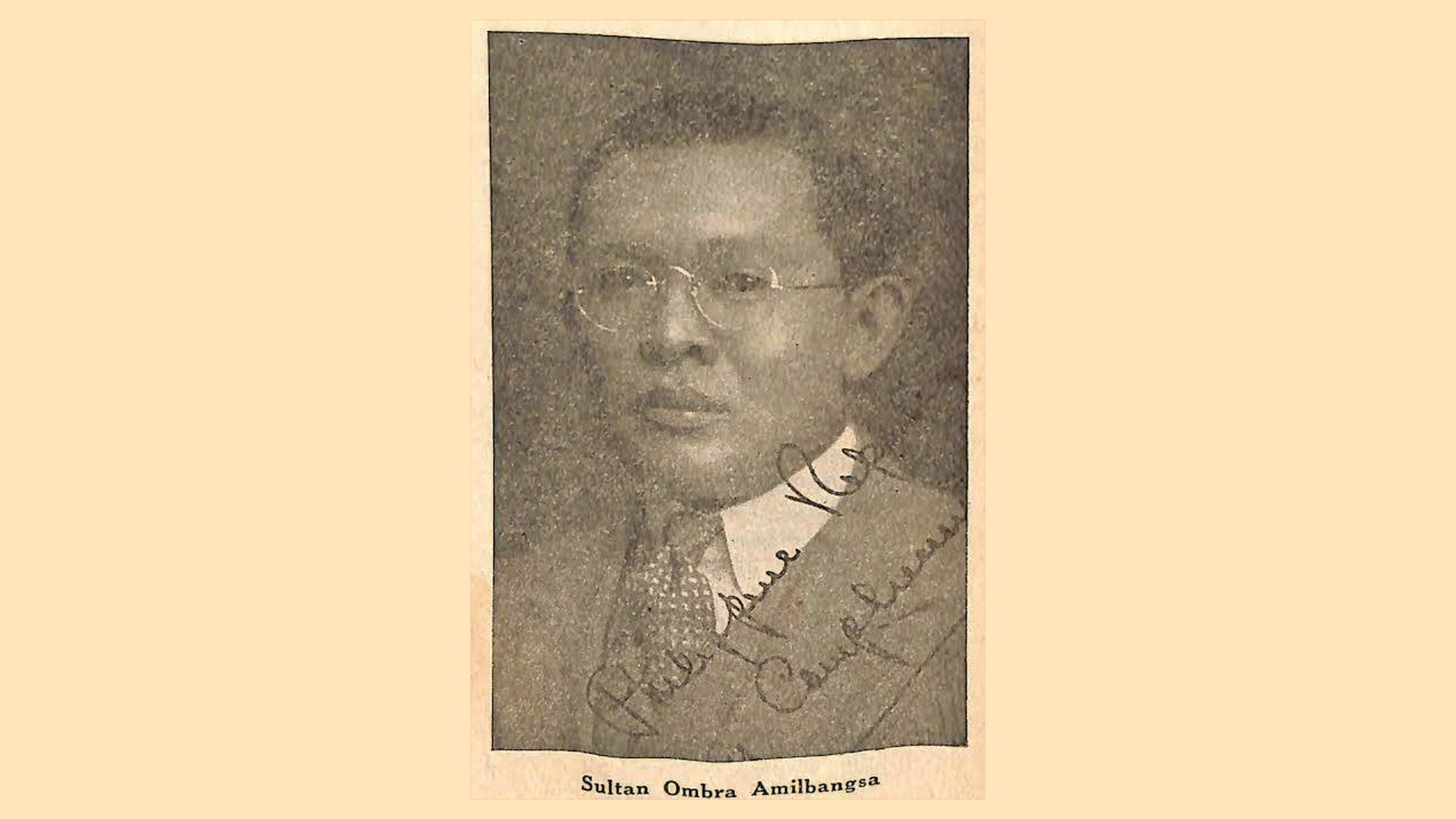
1961
Congress Bill for Sulu Independence
Resettlement - Part of RP Land Reform
1963-1971
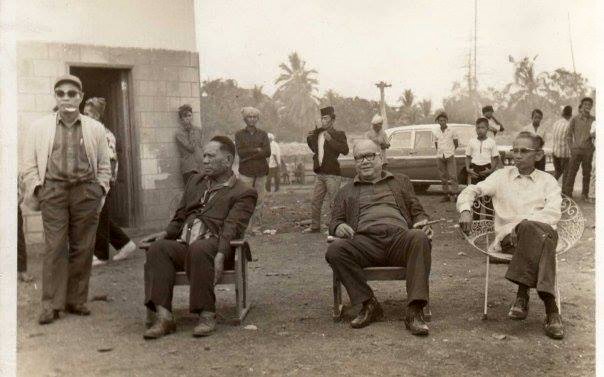
1968
The 1968 Mindanao Independence Movement (MIM)

1972
JABIDAH, MISUARI, AND THE MORO NATIONAL LIBERATION FRONT (MNLF)

September 24, 1972
The Martial Law and All Out War in Mindanao and Sulu
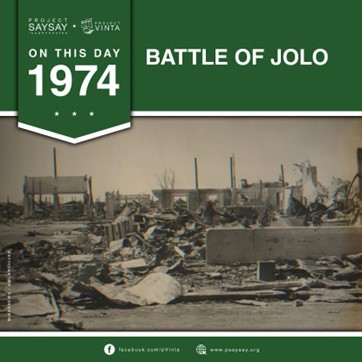
February 07, 1974
Battle of Jolo
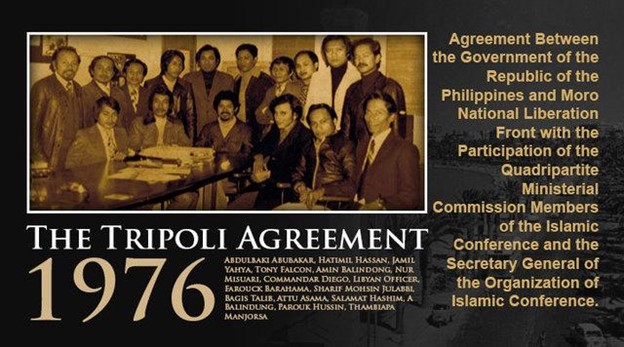
December 23, 1976
The Tripoli Agreement
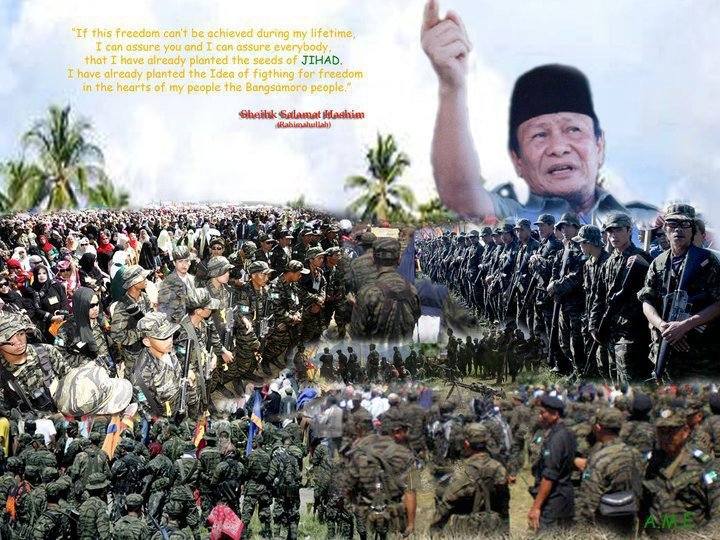
1976
Ustadz Salamat Hashim and the Moro Islamic Liberation Front (MILF)
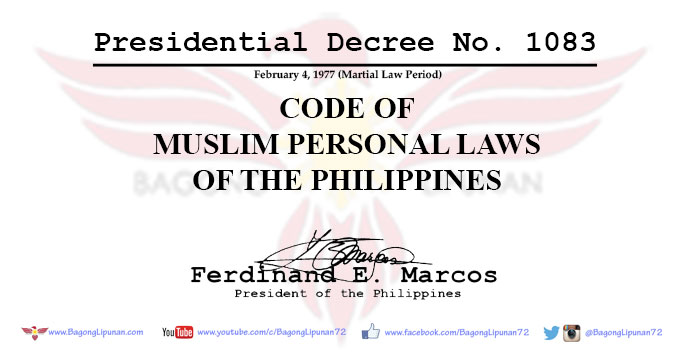
February 4, 1977
President Marcos’ Reconstruction and Reforms
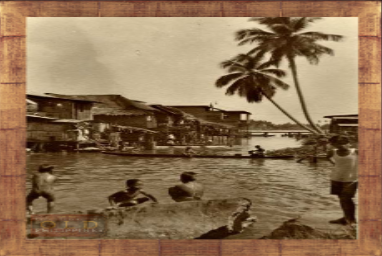
1984
The Pat a Pengampong ko Ranaw

February 25, 1986
President Corazon Aquino and the Autonomous Region for Muslim Mindanao
The Rise of the Abu Sayyaf Group (ASG)
1991

September 02, 1996
The 1996 Final Peace Agreement
2000

March 21, 2000
Estrada’s All Out War Against MILF
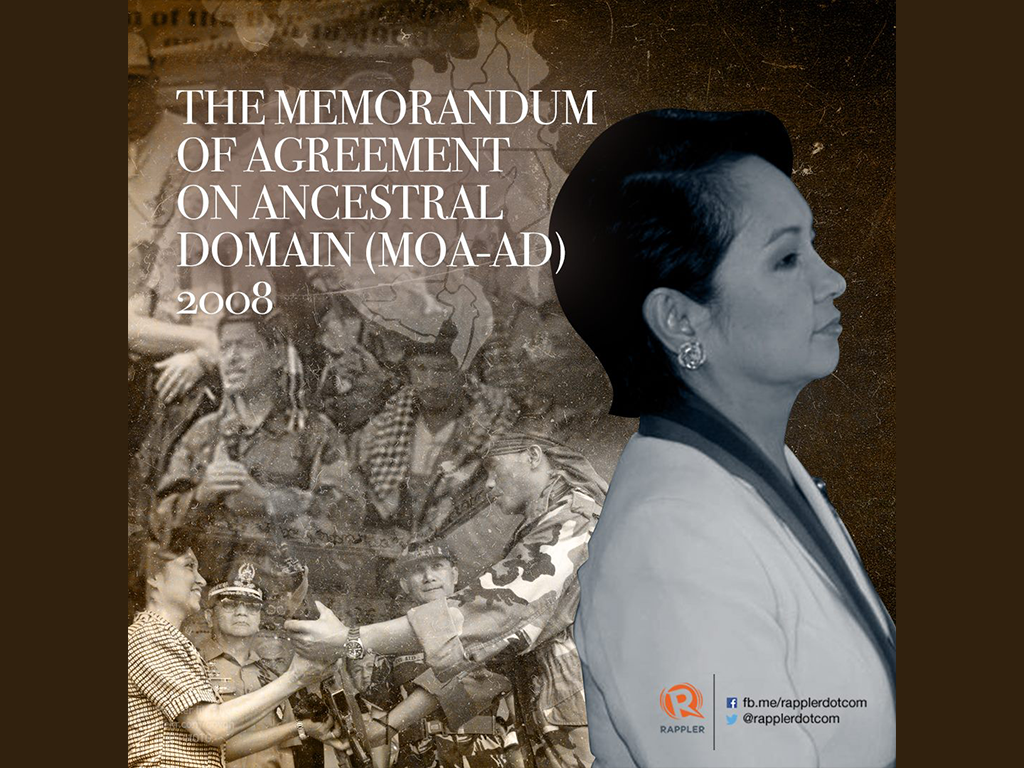
2001
ARROYO’S ALL OUT PEACE
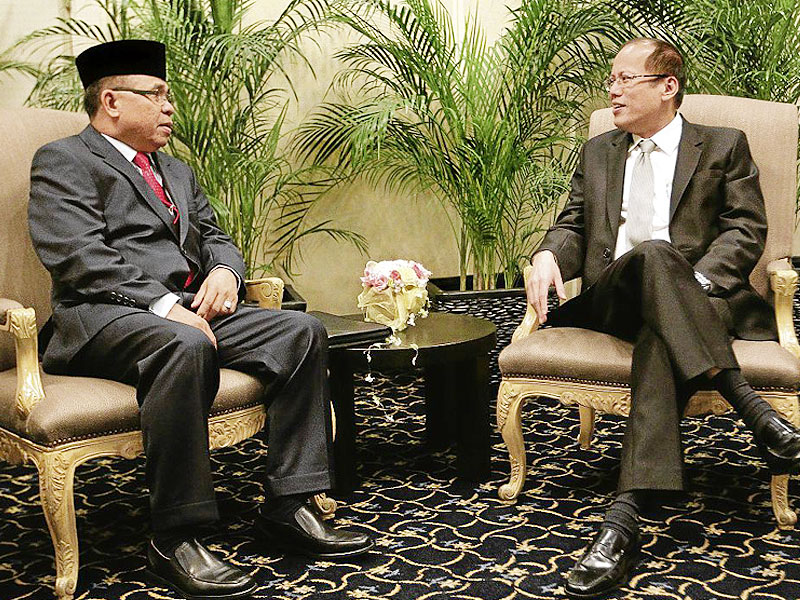
2011
President Aquino’s Bangsamoro Basic Law and the Crises of Peace Talks
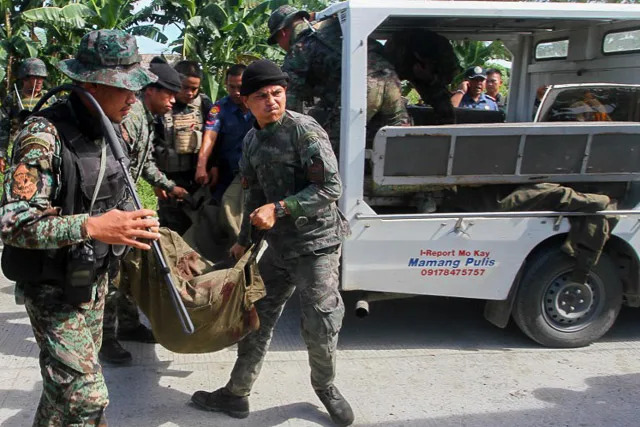
2015
MAMASAPANO INCIDENT – BBL Died with SAF 44

2016
President Duterte’s War and Peace Efforts
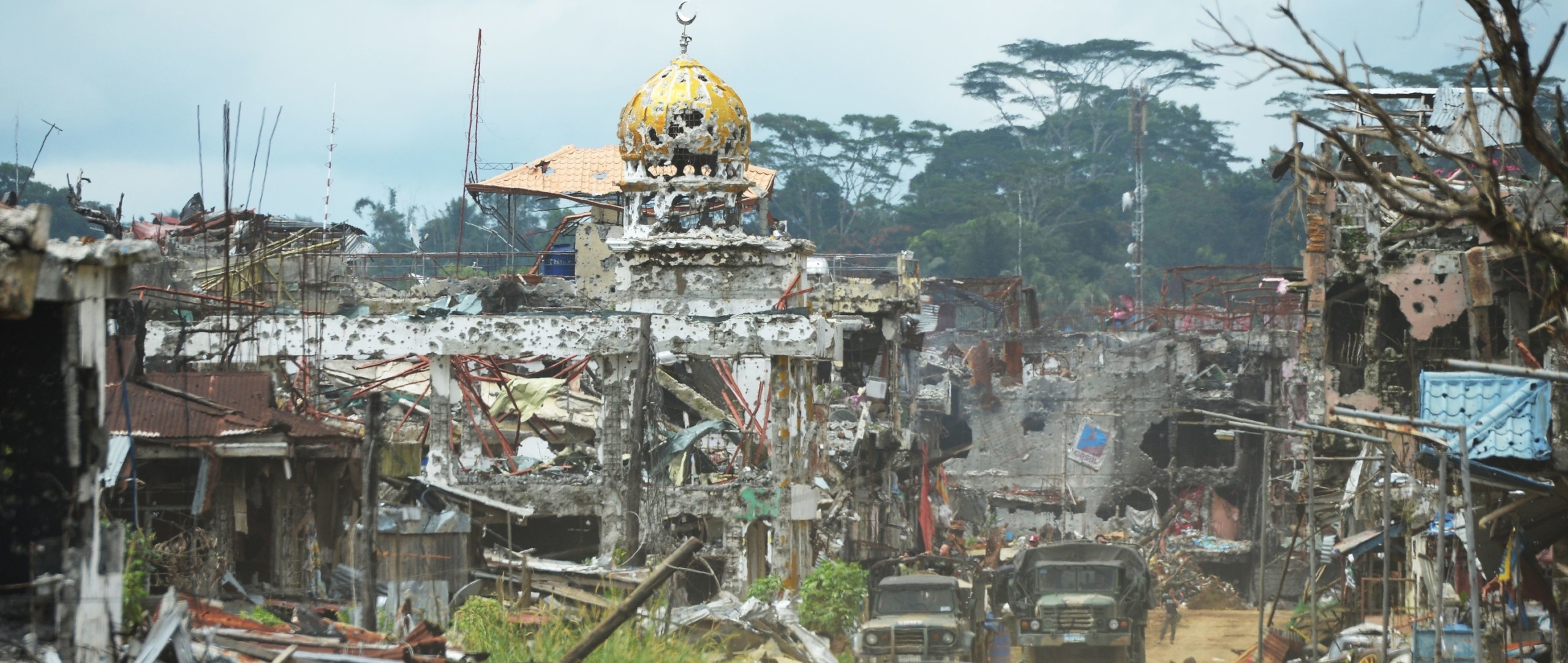
2017
The Birth of Maute-ASG Alliance and the 2017 Marawi Siege

July 26, 2018
President Duterte and the Bangsamoro Autonomous Region for Muslim Mindanao (BARMM)
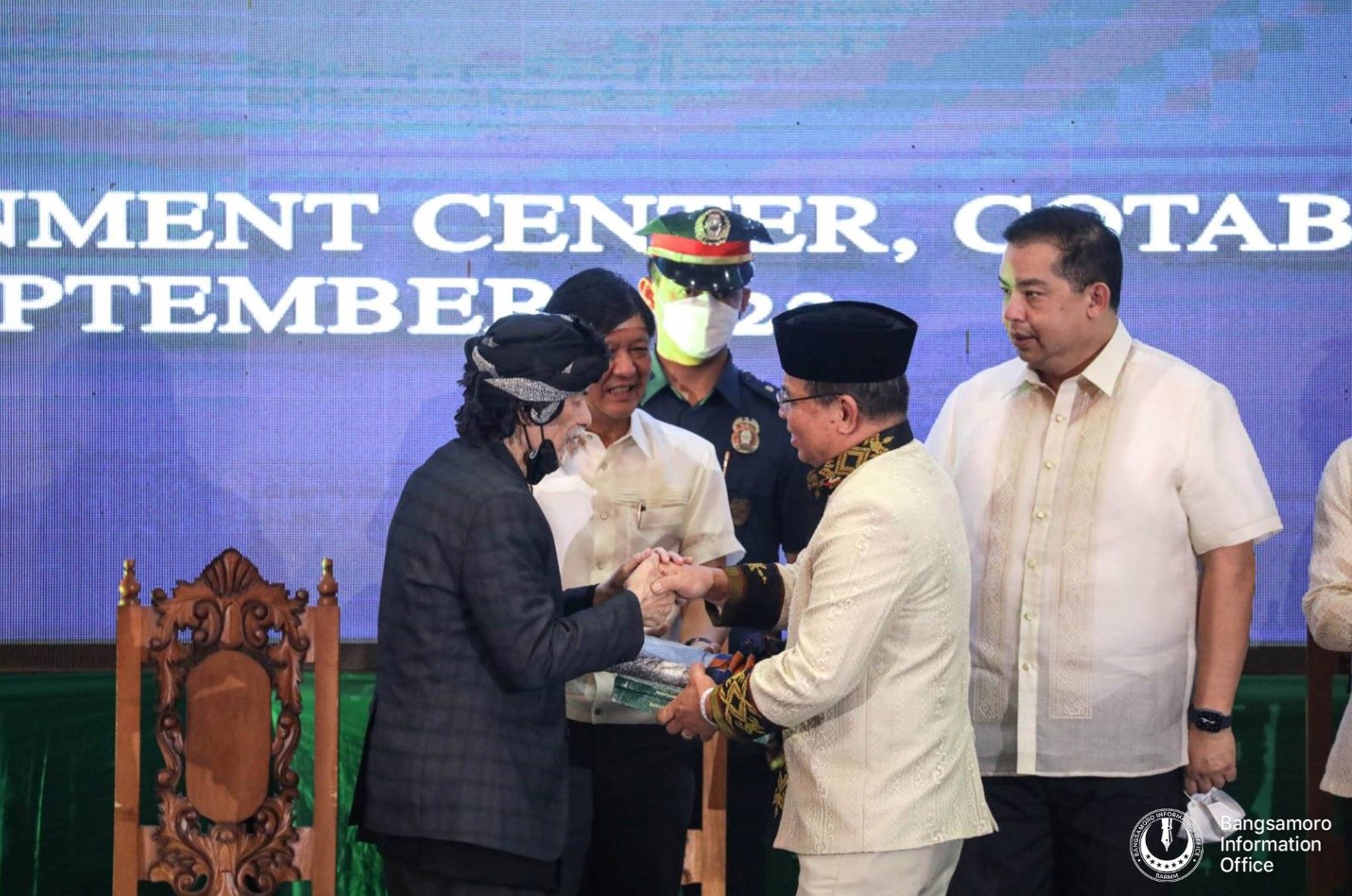
September 15, 2022
BBM UNITY

Early Civilization 6810 - 3190 B.C.
6810
Prehistoric Period
Introduction Mindanao and Sulu had undeniably a flourishing civilization before the arrival of Islam. It was characterized by intricate social structures, vibrant cultures, and extensive trade with neighboring islands and distant lands that defined these ancient societies. The people of Mindanao and Sulu excelled in developing advanced agricultural practices, crafting remarkable artifacts, and constructing impressive megalithic structures that epitomized their ingenuity and resourcefulness. Their lives were deeply intertwined with the natural environment and were already exposed to a universalistic religion by the Indian sages and Chinese monks. The impact of Islam’s arrival in the twelfth century on early civilization was...Introduction
Mindanao and Sulu had undeniably a flourishing civilization before the arrival of Islam. It was characterized by intricate social structures, vibrant cultures, and extensive trade with neighboring islands and distant lands that defined these ancient societies. The people of Mindanao and Sulu excelled in developing advanced agricultural practices, crafting remarkable artifacts, and constructing impressive megalithic structures that epitomized their ingenuity and resourcefulness. Their lives were deeply intertwined with the natural environment and were already exposed to a universalistic religion by the Indian sages and Chinese monks.
The impact of Islam’s arrival in the twelfth century on early civilization was undeniable. Islam introduced monotheism as a religious belief, social structure, and political system, establishing the sultanates of Sulu and Maguindanao. These sultanates bolstered trade with neighboring Muslim regions, facilitating the exchange of goods, ideas, and culture, thus enriching the civilization in Mindanao and the entire Sulu archipelago. This exchange led to the development of written language and literature, as Arabic script was adopted for local languages, enriching the cultural landscape and preserving historical records and religious texts. The introduction of Islamic education systems, including madrasahs, promoted literacy and scholarly pursuits, further propelling the intellectual development of Mindanao and Sulu.
In summary, gaining insight into the early civilization of Mindanao and Sulu is crucial for understanding the rich reservoir of history of the Bangsamoro people, showcasing the depth and diversity of its pre-Islamic heritage. On the contrary, Islam significantly impacted early civilization in Mindanao through political centralization, heightened trade, cultural enrichment, and educational advancement, laying a sturdy foundation for the region’s subsequent historical and cultural identity.
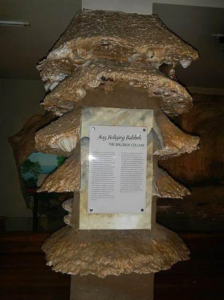
(A reconstruction of the cultural and geological layers found within the Balobok Rock shelter. Original photo to be obtained from the National Museum of the Philippines)
Balobok Archeological Site or Balobok Rock Shelter in Tawi-Tawi, a location of prehistoric habitation around 6810-3190 BCE (5760-5140 years ago), was considered one of the earliest human settlement zones in Southeast Asia which yielded early evidence of human presence in Mindanao.
The existence of the Balobok Rock Shelter in Bongao, Tawi-Tawi, Philippines, was reported in 1966. The initial excavation activity followed this discovery in late 1966 up to 1969, and a re-excavation in 1992 and 2007. Here, archeologists found polished shell adzes made from Tridacna gigas, flaked tools, polished stones, earthenware sherds with lime-impressed designs, and bone tools, demonstrating humans’ ability to create and use tools during that era. The recovery of these materials suggests that the site may have played a significant role in early people’s movements into the Southwest Pacific and to the Pacific World. In the 1970s, during the war participated by the Moro National Liberation Front (MNLF), the cave also served as the combatants’ natural shelter.
Due to its historical relevance, Bangsamoro lawmakers lodged a bill declaring the Balobok Cave in Bongao, Tawi-Tawi as a heritage zone through the Bangsamoro Transition Authority Bill No. 197, also known as the “Balobok Cave Preservation Act of 2020”. With this, the Bangsamoro Commission for the Preservation of Cultural Heritage (BCPCH) and the Environment Ministry would be responsible for administering the protection, development, and promotion of the Balobok Cave.
Sources:
Cayon, Manuel. 2023. “Bangsamoro Parliament bill declares Balobok Cave in Bongao, Tawi-Tawi, a heritage site.” businessmirror.com.ph. https://businessmirror.com.ph/2023/01/06/bangsamoro-parliament-bill-declares-balobok-cave-in-bongao-tawi-tawi-a-heritage-site/.
HistoryLearning.com. 2024. History Learning Balobok Archeological Site. https://historylearning.com/history-of-the-philippines/pre-history/balobok-archaeological-site/.
National Museum of the Philippines. 2022. Balobok Rockshelter. https://www.nationalmuseum.gov.ph/2022/06/28/balobok-rockshelter/.

(Ventral and Dorsal surfaces of Obsidian collected during the archeological survey at Kuta Tuka Inudaran in Lanao del Sur. Photo by: University of the Philippines School of Archaeology)
Caption: Obsidian, used as stone tools during the Terminal Pleistocene in Ille Cave (Palawan) and Bubog I (Ilin Island, Mindoro) discovered in Lanao del Sur, highlights the advanced maritime trade and mobility of the “Celebes Seafaring People” around 6000-5000 BP.
Short Narrative: The obsidian found in Lanao del Sur is evidence of the active trade and mobility of ancient peoples, known as the “Celebes Seafaring People,” around the Celebes region circa 6000-5000 BP. These people had advanced boat-building and navigational skills, facilitating a vast maritime trading network. Chemical analysis indicates that obsidian in Lanao del Sur originated from Bukidnon, supporting the hypothesis of this maritime network during the Neolithic Period. This period (6000-4000 BP) saw significant movement, agriculture, and pottery introduction, suggesting a shared cultural affiliation among island Southeast Asian communities. The “Celebes Seafaring People” hypothesis aligns with historical theories by Francisco Combes and Fay-Cooper Cole about migration patterns from Indonesia to Mindanao, suggesting a complex maritime exchange and migration network that needs further investigation.
Sources: Neri, Lee Anthony M, Juvanni A Caballero, Rona Catherin R Repancol, Ruben Claro A Reyes, and Jay Rone F Acasio. The Archaeology of Lanao del Sur: Probing the M’ranao-Chinese Relations Before 1898. Quezon City: University of the Philippines School of Archeology, 2023.
Read More

Indian Link and Influences
800AD - 1365
Indian Link and Influences
Before Islam arrived, Sulu and Mindanao were actively involved in the international sea trade, which facilitated the entry of Indian and Chinese traders and sages, who brought with them their culture, system of government, and religious ideas. More information: “The first Indian immigrants into the region seem to have been chiefly of the old Vedic faith, mixed with primitive nature and sun worship, although Buddhistic ideas became dominant in the early centuries of the Christian era. Indian traders and colonizers of these types seem to have entered the Philippines through Eastern and Northern Borneo. They continued to drift from...Before Islam arrived, Sulu and Mindanao were actively involved in the international sea trade, which facilitated the entry of Indian and Chinese traders and sages, who brought with them their culture, system of government, and religious ideas.
More information:
“The first Indian immigrants into the region seem to have been chiefly of the old Vedic faith, mixed with primitive nature and sun worship, although Buddhistic ideas became dominant in the early centuries of the Christian era. Indian traders and colonizers of these types seem to have entered the Philippines through Eastern and Northern Borneo. They continued to drift from about the twelfth and thirteenth century. The second wave of Indian influences with Brahmanic character entered the Philippines at the height of the Madjapahit Empire in the fourteenth century.”
Sources: Beyer, Henry Otley. 1948. “Early History of Philippine Relations with Foreign Countries, Especially China,” Historical Introduction to E. Arsenio Manuel, Chinese Elements in the Tagalog Language. Manila: Filipiniana Publications.
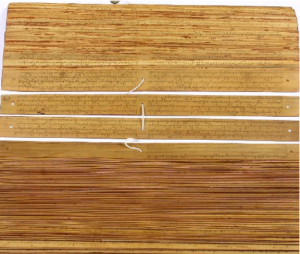
The 1365 Negarakretagama Manuscript listed Sulu as part of the Madjapahit spheres of influence. From Sulu, Indians managed to penetrate mainland Mindanao.
Source: National Library of Indonesia.
More information:
The Negarakertagama is an Old Javanese eulogy written by a Buddhist monk, Empu Prapanca, around 1350-1389 for Hayam Wuruk, a Javanese king of the Majapahit. The manuscript talks about the history of the Hindu Empire, Majapahit (1293-1527 AD) and its dominion where Sulu was included. Based in Sumatra, the empire was founded by Kerjarajasa Jayawarddhana, locally known as Raden Wijawa, in 1293. Its peak of influence was reached during the reign of Hayam Wuruk.
Negarakertaga was named The Memory of the World by UNESCO in May 2008 and registered as a World Heritage in 2013.
Sources: Prapanca,Mpu. 2017. Negarakertagama Kawi: In Kawi Script. USA: CreateSpace Independent Publishing Platform.
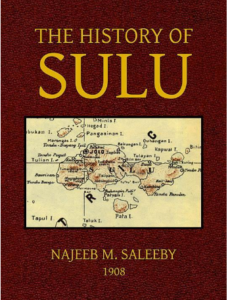
The first book on the History of Sulu, written by a Lebanese American scholar Najeeb Saleeby whom the American government commissioned to study the Muslims in Sulu and Mindanao. He wrote that the names of Sulu’s ancient rulers, Jaimun Kulisa (God of Vedic Pantheon) and Indira (Goddess of Rain) Suga, were of Sanskrit origin.
Source: Saleeby, Najeeb M. 1908. The History of Sulu. Manila Bureau of Printing.
More information:
Prior to this, at the height of the Srivijaya Empire in the ninth century, with Banjarmasin as its seat of power, they sent a colony to Sulu to drive out the Orang Dampuans (Champs) so they could control the pearl industry. To gain the trust of the Tausugs, they offered their princess to the local chief for marriage. The rajas (pre-Islamic rulers of Sulu) descended from this marriage alliance. According to the Sama people in this area, there was also a kingdom on a hill located on the eastern plains of Bud Tua in Dungan in Tawi-Tawi. Before the end of the tenth century, Buddhist Banjars introduced kingdoms under rajaship and datuship in Sulu and the Philippines.
Srivijaya was a Buddhist thalassocrat empire based in Sumatra that reigned from the seventh to the eleventh century.
Sources:
Ututalum, Sururul-Ain and Abdul-Karim Hedjazi. 2002. The Rise and Fall of the Sulu Islamic Empire (1675-1919). USA: Professional Press.
Kurais II, Muhammad. The History of Tawi-Tawi and Its People. 1979. Tawi-Tawi: Mindanao State University Sulu-College of Technology and Oceanography.
Hunt, J. 1967. Some Particulars Relating to Sulo in the Archipelago of Felicia. In Notices, of the Indian Archipelago and Adjacent Countries, edited by J. H. Moor. London: Cass Publishers.
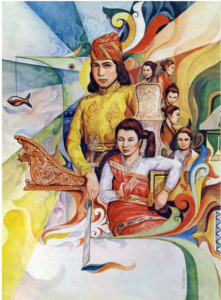
Darangen is an ancient epic song of the Maranaos that reveals the traditional knowledge of Lanao during the pre-Islamic era.
More information:
A total of 72,000 lines in 17 cycles, the Darangen celebrates episodes of M’ranao history, customary law, standards of social and ethical behavior, aesthetic beauty, the tribulations of mythical heroes, and many other themes. In 2005, the National Commission for Culture and the Arts declared it a “Masterpiece of the Oral and Intangible Heritage of Humanity,” They were inscribed on the UNESCO Representative List of the Intangible Cultural Heritage of Humanity 2008. The tales of Maharadia Lawana and Prince Bantugan, as depicted in the famous Singkil dance, are the localized versions of the Ramayana, a popular epic of India. Similar Indian influence can also be found in the Maguindanao folktale Indapatra, Solayman, and the Sagayan Dance.
Sources:
Saber, Mamitua . 1961. Darangen: The Epic of the Maranaws. Philippine Sociological Review, January-April, Vol. 9, No. 1/2 (January- April 1961), pp. 42-46 Published by: Philippine Sociological Society
https://www.jstor.org/stable/43498156
Francisco, Juan. 1977. “Indian Imprint” in Filipino Heritage, vol.3. Quezon City: Lahing Pilipino Publishing Inc. p.576-79.
https://ich.unesco.org/en/RL/darangen-epic-of-the-maranao-people-of-lake-lanao-00159
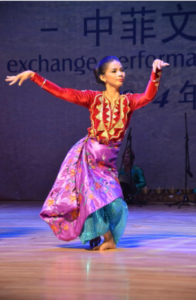
Pangalay and Igal of the Tausug and Sama, Singkil of the M’ranao, and Sagayan of the Maguindanao are celebrated traditional dances of Indian influence via the Malay world.
More information:
The Pangalay dance of the Tausug, which is called Igal among the Sama of Tawi-Tawi, is meditation in motion. The various and endless movements of the hands derived from the stillness of the mind reflect how God created the world of nature in various forms. Singkil of the M’ranao and Sagayan of Maguindanaon are royal dances derived from an episode of the Darangen epic of Bantugan, a M’ranao prince. Singkil was listed as one of the Bayanihan’s Signature Dances of the Philippines. Sagayan dance among the Maguindanaon is also performed to welcome good fortune and drive away bad spirits.
Sources:
Namiki, Kanami. 2011. “Hybridity and National Identity: Different Perspectives of Two National Folk Dance Companies in the Philippines.” Asian Studies: Journal of Critical Perspective on Asia. Vol. 47. https://www.asj.upd.edu.ph/mediabox/archive/ASJ-47-2011/namiki.pdf
Kasim, Osmeña M. (2021. “Appreciation Level on Maguindanaon Dances and their Cultural Presentation.” International Journal of Sciences: Basic and Applied Research (IJSBAR) Volume 59, No 1, pp 188-201.
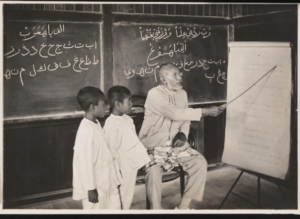
Pandita, a Sanskrit-based word referring to a learned man, especially among the Maguindanaon, was the most important figure in Philippine Muslim Society.
More information:
Indian sages introduced a universalistic tradition that elevated the religious understanding of the natives and prepared them for the arrival of Islam. Some religious words like agama (religion), puasa (abstinence), narka (hell), surga’ (heaven), pahala (reward), bartapa/balatupa (seclusion in the mountain), and many others which are of Sanskrit origin are being used by all Muslims in Mindanao and Sulu until today.
Panditas who were learned in religion and spirituality, were responsible for preserving Islam until the American occupation. American authorities reported that pandita schools operating in Mindanao were a major hindrance to the introduction of Western secular education. The panditas were also military opponents of Western colonial rule since the Spanish period. They not only encouraged the natives to wage jihad against the conquerors but also participated in the military defense of Mindanao and the Sulu Archipelago.
Sources:
Absari, Darwin J. PagTuhan: The Tausug Spiritual Tradition. 2021. Quezon City: University of the Philippines Press.
Baldoza, Jonathan Victor. The Panditas of the Philippines, 17th – Early 20th Centuries. Archipel [Online], 103 | 2022, Online since 30 August 2022, accessed on 12 September 2022. URL: http:// journals.openedition.org/archipel/2969
Gowing, Peter Gordon. 1983. Mandate in Moroland: The American Government of Muslim Filipinos. Quezon City: New Day Publishers.
Milligan, Jeffrey Ayala. 2020. Islamic Identity, Postcoloniality, and Educational Policy: Schooling and Ethno-Religious Conflict in the Southern Philippines. Singapore: Springer Nature.
Read More
What the Muslims Learned from Their Long Interaction with the Chinese
800 - 1365
What the Muslims Learned from Their Long Interaction with the Chinese
Photo cover of the book written (designed?) by Henry William Scott published by De La Salle University in 1989 The book reveals valuable information on the early interactions between China and the Philippines, including the Sulu Archipelago and Mindanao, before 1500. More information: Tang ceramics and dynasty coins found in Sulu and Basilan reveal the possible earliest contact with China during the late Tang Dynasty. However, it was only in the eleventh century that Chinese junkers started to visit Sulu. In 1206, Basilan was already exporting cotton to China. During the Yuan Dynasty, Sulu appeared in official Chinese records....
The book reveals valuable information on the early interactions between China and the Philippines, including the Sulu Archipelago and Mindanao, before 1500.
More information:
Tang ceramics and dynasty coins found in Sulu and Basilan reveal the possible earliest contact with China during the late Tang Dynasty. However, it was only in the eleventh century that Chinese junkers started to visit Sulu. In 1206, Basilan was already exporting cotton to China. During the Yuan Dynasty, Sulu appeared in official Chinese records. This contact with the Chinese was accelerated during the Ming Dynasty with the tribute missions by Sulu and Mindanao rulers at the height of the reign of the sultanates.
Sources:
Scott, William Henry. 1989. Filipinos in China before 1500. China Studies Program. Manila: De La Salle University.
Magdalena, Federico V. The Chinese in Moro Land. Philippine Association for Chinese Studies. https://www.pacs.ph/wp-content/uploads/2021/08/Chapter-2-The-Chinese-in-Moroland-by-Federico-V.-Magdalena.pdf
Ututalum, Sururul-Ain and Abdul-Karim Hedjazi. 2002. The Rise and Fall of the Sulu Islamic Empire (1675-1919). USA: Professional Press,.
Patanne, E. P. 1996. The Philippines in the 6th to 16th Centuries. San Juan, Metro Manila: LSA Press.
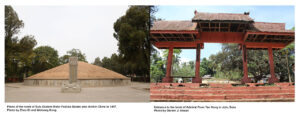
Two important historical landmarks that keep the Sulu and Mindanao link with China alive. The tomb of Sulu ruler Paduka Batara in China and the grave of Poon Tao Kong in Sulu.
More information:
The visit of Admiral Pei Pei Hsien, popularly known as Poon Tao Kong to the Tausug in Sulu sometime in 1410 inspired the three rulers, Paduka Batara, Kamaluddin, and Paduka Brabu to pay tribute to China in 1417. This tribute mission brought Mindanao and Sulu to an intimate and intensive trade with China. In December of the same year, Chinese Emperor Yongle dispatched High Commissioner Chang Ch’ien to the Philippines to bring Kumalalang, Mindanao, into line. In 1420, King Kanlai Ipentun of Kumalalang, Mindanao, paid tribute to China. More and more Chinese came to the Sulu Archipelago and Mindanao to live with the natives and found a second home there. At challenging times, Sulu and Mindanao became their refuge. For example, in 1758, thousands of Chinese fled to Sulu to escape persecution by the Spaniards. Dulawan in Maguindanao was the center of trade from which they penetrated Lanao’s heartland. Chinese artifacts recently found in Lanao suggest their presence in the area.
Chinese long stays in the Sulu Archipelago and Mindanao also resulted in cultural and philosophical exchanges. Many of their legacies, such as dress style, martial arts, culinary habits, and wedding and burial rights, continue to survive among the Muslims in Mindanao and the Sulu Archipelago.
Sources:
Scott, William Henry. 1989. Filipinos in China before 1500. China Studies Program. Manila: De La Salle University.
Absari, Darwin J. 2021. PagTuhan: The Tausug Spiritual Tradition. Quezon City: University of the Philippines Press.
Chu, Richard T. (Ed). 2015. More Tsinoy Than We Admit: Chinese-Filipino Interactions Over the Centuries. Quezon City: Vival Foundation.

Kuntaw is a celebrated martial art practiced by Muslims across Sulu and Mindanao. It is derived from the words Kung (skill) of Kung Fu and Tao (the Way) of Taoism. It is a localized version of the Chinese martial art Tai Chi.
Source: Absari, Darwin J. 2021. PagTuhan: The Tausug Spiritual Tradition. Quezon City: University of the Philippines Press.
Another Chinese influence among the Muslims in the Philippines is their traditional dress style especially the preference for yellow color for the royalty dress of the Tausug, Maguindanaon, and M’ranao. Chinese remains famous in many of the traditional dresses of Muslims. In Sulu, the word Dasu Lannang (Chinese silk) is still used today.
Sources:
Majul, Cesar Adib. 1977. “Celestial Traders in Sulu.” In The Filipino Heritage: The Making of a Nation, vol.3, edited by Alfredo R. Roces, 592. Manila: Lahing Pilipino Publication.
Absari, Darwin J. “Lannang Sug: The Long History of Chinese in Sulu.” Research funded by the Ateneo Confucius Institute. Forthcoming.
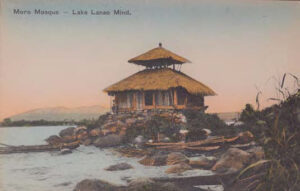
Chinese influence is even visible in the old pagoda-style mosques in Mindanao and Sulu.
More Information:
Chinese has also participated in the spread of Islam to Mindanao and the Sulu Archipelago. In Sulu, a certain Makhdum Aminulla, who possibly arrived after karimul Makhdum, is said to have been accompanied by a Chinese Muslim Huy-Huy (Hue). The design of the original pillars in Tubig Indangan, Simunul in Tawi-Tawi is believed to have been carved by a Chinese Muslim. Design of old mosques in Mindanao and the Sulu archipelago as well as those of other countries in Southeast Asia is inspired by the Chinese pagoda.
Sources:
Majul, César Adib. Muslims in the Philippines. 1999. Quezon City: University of the Philippines Press.
Ta Sen, Tan. 2009. Cheng Ho and Islam in Southeast Asia. Singapore: Institute of Southeast Asian Studies.
Read More
Further Spread to Luzon and Visayas
982
Further Spread to Luzon and Visayas
Description: The earliest presence of Muslims in the country was in 982 AD in Mindoro according to Chinese source. The beginning of spread of Islam to Luzon and Visayas however took place at the height of Sulu Sultanate and was reinforced by Bornean preachers in the 16th century. More information: As early as 982 AD, there was already presence of Islam in Luzon. Chinese document mentions an Arab Ship from Mindoro that went to China. But the initial spread of Islam to Visayas and Luzon took place at the height of Sulu Sultanate in the beginning of 15th Century. Some...Description: The earliest presence of Muslims in the country was in 982 AD in Mindoro according to Chinese source. The beginning of spread of Islam to Luzon and Visayas however took place at the height of Sulu Sultanate and was reinforced by Bornean preachers in the 16th century.
More information: As early as 982 AD, there was already presence of Islam in Luzon. Chinese document mentions an Arab Ship from Mindoro that went to China. But the initial spread of Islam to Visayas and Luzon took place at the height of Sulu Sultanate in the beginning of 15th Century. Some areas in Luzon and Visayas were under the control of Sulu Sultanate.
This initial spread was later reinforced when Brunei Sultan took over Manila and brought in Muslims Missionaries who reached as far Batangas, Cebu, Mindoro, Oton in Iloilo, Bonbon in Butuan. Spanish Historian Antonio Morga wrote, “If the entrance of the Spaniards had been longer delayed, this sect would have extended all over the island, and even throughout the others; and it would have been difficult to have uprooted it from them.”
However, the slow spread of Islam to Luzon and Visayas was halted with the arrival of Spaniards in mid-16th century. However, legacies of Islam continue to survive in language (simba, pangadji, hukum, asal, etc), and psychology (kapwa, ginhawa, saliksik, kasaysayan etc) of the Christianized natives. Even the Spaniards brought with them their Islamic roots as they have been Islamized by the Moors for nearly 800 years. Some Spanish loan words in the Tagalog like Alcalde and many others originated from Arabic.
Sources:
Donoso, Isaac. Islamic Fareast: Ethnogenesis of Philippine Islam. University of the Philippines Press, 2013.
More Islamic Than We Admit. Insights into Philippine Cultural History. Edited by Isaac Donoso. Quezon City: Vival Foundation, Inc. 2018.
Majul, Cesar A. The Muslims in the Philippines. Quezon City: University of the Philippines Press, 1999.
Scott, Henry William. PreHispanic Source Materials for the Study of Philippine History
(Revised Edition). Quezon City: New Day Publishers, 1984.
Read More
Arrival and Spread of Islam in the Sulu Archipelago 1270-1275
1270-1275
Arrival and Spread of Islam in the Sulu Archipelago 1270-1275
Entrance to the shrine of Ahmad Timhar Maqbalu in Bud Datu, Jolo, Sulu. Photo by Nickee Bultangan Tombstone Inscription of Ahmad Timhar Maqbalu in Bud Datu, Jolo, Sulu. Photo by Nickee Bultangan Description: The first preacher to have taught Islam in the Philippines was Ahmad Timhar Magbalu who came from Hadramaut in Yemen to Sulu around 1270-1275. More information: As early as 982 AD, foreign Muslims were already in the Philippines. Chinese account mentions of an Arab ship Mindoro who came to the port of Canton (Guangzhou). But the beginning of spread of Islam took place...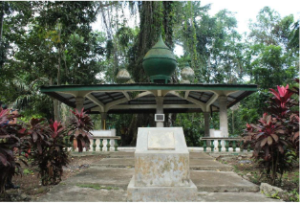
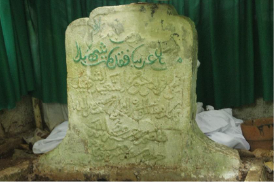
Description: The first preacher to have taught Islam in the Philippines was Ahmad Timhar Magbalu who came from Hadramaut in Yemen to Sulu around 1270-1275.
More information: As early as 982 AD, foreign Muslims were already in the Philippines. Chinese account mentions of an Arab ship Mindoro who came to the port of Canton (Guangzhou). But the beginning of spread of Islam took place in Sulu with the arrival of a Muslim preacher, Ahmad Timhar Maqbalu around 1270-75 AD. He is known in oral history as Tuan Mashaikha, a title indicating that he came from house of Mashā’ikh (learned) who were descendants of Prophet Muhammad through his grandson Husayn.
Because of his superior in knowledge, he acquired respect from the Tausug and married the daughter of the local chief. He died in 710 hijra/1310 leaving some descendants in Sulu. His missionary activity facilitated the slow transition from Hinduism or conversion to Islam of the local inhabitants. His shrine in Bud Datu serves as the oldest physical evidence of Islam in the country.
Sources:
Scott, Henry William. Filipinos in China before 1500. China Studies Program. Manila: De La Salle University, 1989.
Majul, Cesar A. The Muslims in the Philippines. Quezon City: University of the Philippines Press, 1999.
Al-Attas, Syed Muhammad Naguib. Historical Fact and Fiction. Malaysia: UTM Press, 2011.


Description: Karimul Makhdum was a celebrated Muslim Sufi preacher who first taught Islam among the Sama in Tawi-Tawi fifty years after the arrival of Tuan Mashaika in Sulu.
More information: Fifty years the death of Tuan Mashaikha, the celebrated Sufi preacher from Qadiri order, Ibrāhīm Zayn al-Dīn al-Akbar locally known as Karimul Makhdum (the Noble Master, landed with his men in Tawi-Tawi. He was the seventh generations from Imām Muhammad Sāhib Marbāt, the seventh generation from the Imām Ahmad bin ‘Īsā (d.961) surnamed the Emigrant (al-Muhājir) and the eighth generation from al-Husayn, the grandson of Prophet Muhammad. Karīmul Makhdum most of his life travelling to spread Islam. He taught Islam in East Java and was celebrated as the Sunan (revered person) of Nggesik (Tuban). Many Javanese saints descended from him. He travelled extensively in the Sulu archipelago to teach Islam.
Karimul Makhdum and his men must have arrived first in Sibutu island, South of Tawi-Tawi, built a mosque in Simunul and visited many islands of Sulu. He has been attributed with spiritual powers like walking on water.
Sources:
Majul, Cesar A. The Muslims in the Philippines. Quezon City: University of the Philippines Press, 1999.
Al-Attas, Syed Muhammad Naguib. Historical Fact and Fiction. Malaysia: UTM Press, 2011. Kurais II, Muhammad. The History of Tawi-Tawi and its People. Tawi-Tawi: Mindanao State University Sulu College of Technology and Oceanography, 1979.
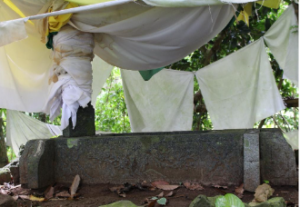
Grave of Sultan Shariful Hashim in Mount Tumatangis, Jolo, Sulu. Photo by Darwin J. Absari
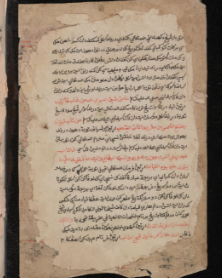
A digitalized manuscript by Princeton University of a book brought by Shariful Hashim to Sulu
Description: Sayyid Abukar, a Malay-Arab Prince came Basilan and later proceeded to Sulu to teach Islam and established the Sulu Sultanate in 1405.
More information: The culmination of the spread of Islam in Sulu was reached with the arrival of Sayyid Abubakar or locally known as Shariful Hashim. He belonged to the Bani Hāshim, the most noble line of Quraysh from which Prophet Muhammad was descended. He was the son of Sayyid ‘Ali Zayn al-‘Abidin al-‘Alawi al-Husayni to a Malaccan Princess, daughter of Sultan Iskandar. His father, Sayyid ‘Ali Zayn al-‘Abidin was the fifth in line of descent from Sharif ‘Abd Allāh, son of Sharif ‘Alawī bin Muhammad Sāhib Marbāt from whom both Tuan Masha’ika and Karīmuk Makhdum descended from.
After studying Islam in Mecca, he came back to Malacca with a book Durr al-Manzum (The Strung Pearls) which he personally taught to the Malaccan Sultan who then ordered the book be translated to Malay.
He first stayed among the Yakan in Basilan. Later, he proceeded to Sulu upon the invitation of the Tausug. He arrived Sulu around 1395 and married the daughter of Raja Baginda, a prince from Menangkabaw who was the ruler of the coastal areas in Sulu. After the death of Raja Baguinda, Shariful Hashim consolidated the population, converted the remaining non-Muslims and established the Sulu sultanate in 1405 and became the first Sultan. He also built madrasa and organized the teaching of Qur’an and Hadith.
Sources:
Majul, Cesar A. The Muslims in the Philippines. Quezon City: University of the Philippines Press, 1999.
Al-Attas, Syed Muhammad Naguib. Historical Fact and Fiction. Malaysia: UTM Press, 2011.
Kurais II, Muhammad. The History of Tawi-Tawi and its People. Tawi-Tawi: Mindanao State University Sulu College of Technology and Oceanography, 1979.
Absari, Darwin J. PagTuhan: The Tausug Spiritual Tradition. Quezon City: University of the Philippines Press, 2021.
Read More

Map of Mindanao in Asia
AD 1370
Map of Mindanao in Asia, AD 1370 (Luzon and Visayas is not yet visible on this Map)
In traversing and up-streaming the saga of the Bangsamoro encounters against the Spanish colonial expansion in Mindanao and Sulu, as elsewhere in the Philippines, it is important to remember two common elements which provided Spanish pretext for intervention. The first was the natural consequence of the reconquista—pacification. This was often followed by a process of reduccion by which the Spanish missionaries sought to convert some of the native population into Christianity. The idea was to bring them under civil administration as well as under the Catholic Church. The conduct of Spain in dealing with the Magindanao (Maguindanao) and Sulu Sultans...In traversing and up-streaming the saga of the Bangsamoro encounters against the Spanish colonial expansion in Mindanao and Sulu, as elsewhere in the Philippines, it is important to remember two common elements which provided Spanish pretext for intervention. The first was the natural consequence of the reconquista—pacification. This was often followed by a process of reduccion by which the Spanish missionaries sought to convert some of the native population into Christianity. The idea was to bring them under civil administration as well as under the Catholic Church.
The conduct of Spain in dealing with the Magindanao (Maguindanao) and Sulu Sultans under treaty relations on the pretext of policy of attraction was actually part of the pacification strategy which is part of the topics in the succeeding slides. These treaties, were mostly defensive-offensive, alliance, political, commercial and military for these related to peaceful co-existence, commerce, armistice, and settlement of territorial disputes and delimitation of boundaries between Magindanaw (Maguindanao) and Filipinas, as well as commercial activities with Great Britain (Abdulhaq, 2011: p. 50).
Nua’ain Bin Abdulhaq (2011). Bangsamoro Dossier: Historical notes on the status of the Bangsamoro Homeland under Moro treaties with foreign powers. Agency of Youth Affairs-MILF.
Read More
Islam’s Further Spread to Maguindanao and Lanao Areas
1300
Islam’s Further Spread to Maguindanao and Lanao Areas
Grave of Sharif Awliya’s eldest son Sharif Shaikh Sagulandang in Tawan- Tawan, Maguindanao. Photo by Darwin Absari. Description: Karimul Makhdum proceeded to Mindanao to teach Islam among the Maguindanaon. He was the first Muslim missionary popularly called Sharif Awliya by the natives. More information: After teaching Islam in Sulu, Karimul Makhdum proceeded to Maguindanao via Zamboanga Peninsula. He arrived around 1365 and was known as Sharif Awliya since many of the saints in Java descended from him. He married the local princess and taught Islam before returning back to Java. He left a daughter named Paramisuli and three sons...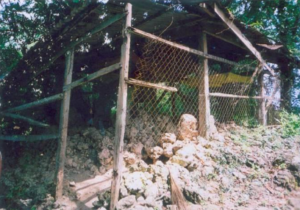
Grave of Sharif Awliya’s eldest son Sharif Shaikh Sagulandang in Tawan- Tawan, Maguindanao. Photo by Darwin Absari.
Description: Karimul Makhdum proceeded to Mindanao to teach Islam among the Maguindanaon. He was the first Muslim missionary popularly called Sharif Awliya by the natives.
More information: After teaching Islam in Sulu, Karimul Makhdum proceeded to Maguindanao via Zamboanga Peninsula. He arrived around 1365 and was known as Sharif Awliya since many of the saints in Java descended from him. He married the local princess and taught Islam before returning back to Java. He left a daughter named Paramisuli and three sons in Maguindanao.
Sources:
Majul, Cesar A. The Muslims in the Philippines. Quezon City: University of the Philippines Press, 1999.
Al-Attas, Syed Muhammad Naguib. Historical Fact and Fiction. Malaysia: UTM Press, 2011.
My interview with Sultan Sharif Kaharodin. February 28, 2006. Dulawan, Maguindanao.

The spread of Islam in Maguindanao culminated with the arrival of Sharif Kabungsuwan, who established the Maguindanao Sultanate in 1440. He is believed to be the younger brother of Sultan Shariful Hashim.
More Information:
Islam’s further spread in Maguindanao was accomplished by Sharif Muhammad Kabungsuwan, who was, accordingly, Shariful Hashim’s younger brother. He arrived in Maguindanao with his men and the seafaring people (Sama Dilaut) around 1440. He was met by the local chiefs Tabunaway and Mamalu, who were descendants of his uncle Sharif Maharaja.
Sharif Maharaja was another Muslim preacher who followed Sharif Awliya to Maguindanao to continue missionary work. His daughter was married to Sharif Maharaja, from whom Tabunaway and Mamalu descended. With the assistance of the two local chiefs, Sharif Kabungsuwan was able to consolidate the natives and establish the Sultanate of Maguindanao. He reigned for more than 20 years before returning home.
Sources:
Saleeby Najeeb M. 1905. Studies in Moro History, Law, and Religion. Manila: Bureau of Printing.
Majul, Cesar A. 1999. The Muslims in the Philippines. Quezon City: University of the Philippines Press.
Al-Attas, Syed Muhammad Naguib. 2011. Historical Fact and Fiction. Malaysia: UTM Press.
Sultan’s Palace or Grave of Sultan Sharif Kabunguwan in Indonesia/Malacca
The culmination of the spread of Islam in Maguindanao was reached with the arrival of Sharif Kabungsuwan who established the Maguindanao Sultanate in 1440. He is believed to be the younger brother of Sultan Shariful Hashim.
More Information:
Islam’s further spread in Maguindanao was accomplished by Sharif Muhammad Kabungsuwan who was accordingly Shariful Hashim’s younger brother. He arrived Maguindanao with his men and the seafaring people (Sama Dilaut) around 1440. He was met by the local chiefs Tabunaway and Mamalu who were descendants of his uncle Sharif Maharaja.
Sharif Maharaja was another Muslim preacher who followed Sharif Awliya to Maguindanao to continue his missionary works. His daughter was married to Sharif Maharaja from where Tabunaway and Mamalu descended. With the assistance of the two local chiefs, Sharif Kabungsuwan was able to consolidate the natives and established the Sultanate of Maguindanao. He reigned for more than 20 years before returning home.
Sources:
Saleeby Najeeb M. Studies in Moro History, Law, and Religion. Manila: Bureau of Printing, 1905.
Majul, Cesar A. The Muslims in the Philippines. Quezon City: University of the Philippines Press, 1999.
Al-Attas, Syed Muhammad Naguib. Historical Fact and Fiction. Malaysia: UTM Press, 2011.
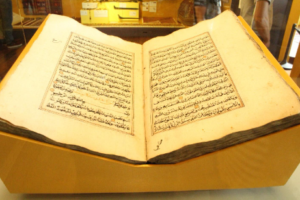
The old Qur’an of Bayang, Lanao del Sur displayed at the National Museum in Manila. Photo by Darwin J. Absari
Description: Lanao areas were also Islamized by a certain Muslim preacher Sharif ‘Alawi and from the intermarriages between the Maguindanao rulers and Maranao datus.
More information: From Maguindanao, Islam slowly spread to some parts of Sarangani and Davao in the first half of the 17th century. With the same political and marriage alliances with the Maranao datus, Islam entered Lanao.
Local traditions also mention the coming of Sharif ‘Alawi who became chief of Misamis Oriental and whose preaching reached Lanao and Bukidnon. He is also believed to have left descendants in the area.
Source:
Majul, Cesar A. The Muslims in the Philippines. Quezon City: University of the Philippines Press, 1999.
Read More
Islam Moves North
1405
Islam Moves North
Introduction The flourishing interisland trade that has been taking place since the pre-Islamic era facilitated the further expansion of Islam to Visayas and Luzon by the people in Mindanao and Sulu who have now become Muslims. After the establishment of the Sulu Sultanate in 1405, Sulu’s power as a sovereign state was felt all over Luzon and the Visayas islands, Celebes Sea, Palawan, North Borneo, and the China Sea, and their trade extended from China and Japan, at the one extreme, and to Malacca, Sumatra, and Java at the other (Saleeby 1908). Some areas in the Philippines such as...

Introduction
The flourishing interisland trade that has been taking place since the pre-Islamic era facilitated the further expansion of Islam to Visayas and Luzon by the people in Mindanao and Sulu who have now become Muslims.
After the establishment of the Sulu Sultanate in 1405, Sulu’s power as a sovereign state was felt all over Luzon and the Visayas islands, Celebes Sea, Palawan, North Borneo, and the China Sea, and their trade extended from China and Japan, at the one extreme, and to Malacca, Sumatra, and Java at the other (Saleeby 1908). Some areas in the Philippines such as Mindoro and Calamianes remained to be tributary states of the Sulu Sultanate until the coming of the Spaniards. (Majul 1999)
The Maguindanao Sultanate ruled over the whole southern coast of Mindanao from Point Tugubum, east of Mati, to Zamboanga, and beyond this latter point to the outskirts of Dapitan. All the non-Muslim tribes living around the Gulf of Davao and in the Sarangani country, and all the Subanons west of Tukurun and Dapitan submitted to its power and paid tribute to the sultanate. In the upper Rio Grande (Pulangi) Valley the power of the rajas of Bwayan was felt and respected as far as the watershed of the Cagayan Valley on the north and the inaccessible slopes of Mount Apo on the east. The M’ranaos controlled the whole of Lanao and the seacoast west of Cagayan de Misamis and north of the Illana Bay. During this period, traders as well as spiritual sages from Sulu and Mindanao visited the places of their trading partners in the country, and to some extent, were leading in the interisland as well as the overseas trade of their non-Muslim brethren.
Sources:
Majul, Cesar A. 1999. The Muslims in the Philippines. Quezon City: University of the Philippines Press.
Saleeby, Najeeb M. 1905. Studies in Moro History, Law, and Religion. Manila: Bureau of Public Printing,.
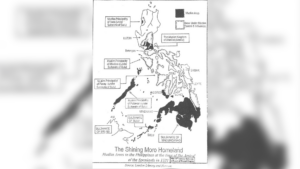
According to Chinese sources, the earliest presence of Muslims in the country was in 982 AD in Mindoro. However, the beginning of Islam’s spread to Luzon and the Visayas took place at the height of the Sulu Sultanate and was reinforced by Bornean preachers in the sixteenth century.
More information:
Islam was present in Luzon as early as 982 AD. A Chinese document mentions an Arab ship from Mindoro that went to China. However, the initial spread of Islam to the Visayas and Luzon took place at the height of the Sulu Sultanate at the beginning of the fifteenth Century. Some areas in Luzon and the Visayas were under the influence of the Sulu Sultanate.
This initial spread was later reinforced when the Brunei sultan took over Manila and brought in Muslim missionaries who reached as far as Batangas, Cebu, Mindoro, Oton in Iloilo, and Bonbon in Butuan. Spanish Historian Antonio Morga wrote, “If the entrance of the Spaniards had been longer delayed, this sect would have extended all over the island, and even throughout the others; and it would have been difficult to have uprooted it from them.”
However, the slow spread of Islam to Luzon and the Visayas was halted with the arrival of Spaniards in the mid-sixteenth century. But legacies of Islam continue to survive in the language, psychology, and way of life of the Christianized natives.
Sources:
Donoso, Isaac. 2013. Islamic Fareast: Ethnogenesis of Philippine Islam. University of the Philippines Press.
Majul, Cesar A. 1999. The Muslims in the Philippines. Quezon City: University of the Philippines Press.
Read More
Legacy of Islam in Luzon and the Visayas
1450
Legacy of Islam in Luzon and the Visayas
Islamic legacies can be seen even in the architectural design of churches built by the Spaniards especially in Cebu and Bohol. More Information: The long Spanish evangelization in Luzon and the Visayas did not entirely erase Islam’s legacies among the Christianized natives. These legacies came via the Tausug of Sulu, Malay, and even the Spaniards. Kapwa (fellow human being), according to the Filipino indigenous concept, is a shared identity. The unity of the self and others reflects the Islamic concept of Tawhid that Filipino Muslims apply in their interpersonal relationships. Henry William Scott’s Prehispanic Source Materials for the Study of...Islamic legacies can be seen even in the architectural design of churches built by the Spaniards especially in Cebu and Bohol.
More Information:
The long Spanish evangelization in Luzon and the Visayas did not entirely erase Islam’s legacies among the Christianized natives. These legacies came via the Tausug of Sulu, Malay, and even the Spaniards. Kapwa (fellow human being), according to the Filipino indigenous concept, is a shared identity. The unity of the self and others reflects the Islamic concept of Tawhid that Filipino Muslims apply in their interpersonal relationships.
Henry William Scott’s Prehispanic Source Materials for the Study of Philippine History (1984) and John Wolff’s Malay Borrowings in Tagalog (1976) reveal some relevant Tagalog words borrowed from Malay and Arabic. One of the most important words is simbahan (house of worship or church), derived from the root word simba (worship). Simba, as revealed by the works of Scott and Wolff, is derived from the Malay word sumba (worship), which originally came from the Arabic term subha (praise).
Interesting to note that the old simbahan (churches) in the Philippines, especially those in Cebu and Bohol, also reveal Islamic influence, particularly from mosques in Spain. Spaniards brought with them their Islamic roots, as the Moors had Islamized them for nearly 800 years. Alicia Coseteng, in her Spanish Churches in the Philippines (1972), wrote:
Muslim influence is much more pervasive in the southern
regions, especially in Bohol and Cebu. Churches in these regions
carry elements and motifs which are reminiscent of the Mudejar
in Spain and Mexico. Minaret-like bell towers with their onion-shaped
domes or four-cornered hat roofs, like those of the
Church in Carcar, and the highly stylized design of the façade
of the church in Naga, Cebu, indicates strong Muslim influence.
Floral and geometric patterns—delicate, flat, stylized—on the
facades and in the interior of churches in these two provinces
reveal distinctly Moorish origins. Lattice work, inlays, carved
woodwork, blind balustrades, trilobular and ogee arches, spiral
columns, all these are charming evidence of Muslim art on
colonial religious architecture.
Even some Spanish loan words in Tagalog originated from Arabic, such as alcalde (mayor) from the Arabic term al-Qadi (judge), barrio/baryo (district) from barrī (less urbanized parts of the city), and many others.
Sources:
Scott, Henry William. 1984. PreHispanic Source Materials for the Study of Philippine History(Revised Edition). Quezon City: New Day Publishers.
Donoso, Isaac. ed. 2018. More Islamic Than We Admit. Insights into Philippine Cultural History. Quezon City: Vival Foundation, Inc.
Absari, Darwin J. 2021. PagTuhan: The Tausug Spiritual Tradition. Quezon City: University of the Philippines Press.
Coseteng, Alicia M. L. 1972. Spanish Churches in the Philippines. New Mercury Printing Press, Quezon City, Philippines.
Summary:
The arrival of various eastern civilizations (Indian, Chinese, and Islam) to Mindanao and the Sulu Archipelago via sea trade before the advent of western colonial invaders nurtured the growth of the Bangsamoro civilization. The Indians, Chinese, and Muslims who came to trade with the natives of Mindanao and Sulu brought with them their culture and religious traditions that exposed the native inhabitants to a universalistic religion with a sophisticated intellectual tradition. This confluence of tradition was achieved due to the tolerance of these Indians, Chinese, and Muslims who did not attempt to conquer the native, and the natives’ openness to receiving people of different religions. Each eastern civilization left a legacy harmoniously integrated in the culture, language, and religious tradition of the people of Mindanao and the Sulu Archipelago. Islam being the last carrier of eastern civilization has brought Mindanao and Sulu civilization to its peak when Muslim preachers established the sultanates whose power and dominion did not only reach almost the entire country but also neighboring Southeast Asian countries.
By the mid-sixteenth century, the Muslims’ power and prosperity began to be challenged by Western colonizers, first by the Spaniards and later the Americans whose agenda was to control and monopolize the rich economic activities under the guise of religious evangelization and democratization. For more than three hundred years, the Muslims resisted the protracted war that has affected their political, economic, and religious life.
Read More
The Papal Bull of 1493
The Papal Bull of 1493 issued by Pope Alexander VI was a document that authorized the Spanish government to colonize, enslave and spread Catholicism using force if necessary. It was here when the Philippines was subjugated and brought under Spanish Crown, while the Muslims in the south fought to remain free.
The Papal Bull of 1493
Excerpt from the English Translation of the 1493 Papal Bull Wherefore, as becomes Catholic kings and princes, after earnest consideration of all matters, especially of the rise and spread of the Catholic faith, as was the fashion of your ancestors, kings of renowned memory, you have purposed with the favor of divine clemency to bring under your sway the said mainlands and islands with their residents and inhabitants and to bring them to the Catholic faith. Hence, heartily commending in the Lord this your holy and praiseworthy purpose, and desirous that it be duly accomplished, and that the name of...Excerpt from the English Translation of the 1493 Papal Bull
Wherefore, as becomes Catholic kings and princes, after earnest consideration of all matters, especially of the rise and spread of the Catholic faith, as was the fashion of your ancestors, kings of renowned memory, you have purposed with the favor of divine clemency to bring under your sway the said mainlands and islands with their residents and inhabitants and to bring them to the Catholic faith. Hence, heartily commending in the Lord this your holy and praiseworthy purpose, and desirous that it be duly accomplished, and that the name of our Savior be carried into those regions, we exhort you very earnestly in the Lord and by your reception of holy baptism, whereby you are bound to our apostolic commands, and by the bowels of the mercy of our Lord Jesus Christ, enjoy strictly, that inasmuch as with eager zeal for the true faith you design to equip and despatch this expedition, you purpose also, as is your duty, to lead the peoples dwelling in those islands and countries to embrace the Christian religion; nor at any time let dangers or hardships deter you therefrom, with the stout hope and trust in your hearts that Almighty God will further your undertakings. And, in order that you may enter upon so great an undertaking with greater readiness and heartiness endowed with benefit of our apostolic favor, we, of our own accord, not at your instance nor the request of anyone else in your regard, but out of our own sole largess and certain knowledge and out of the fullness of our apostolic power, by the authority of Almighty God conferred upon us in blessed Peter and of the vicarship of Jesus Christ, which we hold on earth, do by tenor of these presents, should any of said islands have been found by your envoys and captains, give, grant, and assign to you and your heirs and successors, kings of Castile and Leon, forever, together with all their dominions, cities, camps, places, and villages, and all rights, jurisdictions, and appurtenances, all islands and mainlands found and to be found, discovered and to be discovered towards the west and south, by drawing and establishing a line from the Arctic pole, namely the north, to the Antarctic pole, namely the south, no matter whether the said mainlands and islands are found and to be found in the direction of India or towards any other quarter, the said line to be distant one hundred leagues towards the west and south from any of the islands commonly known as the Azores and Cape Verde. With this proviso however that none of the islands and mainlands, found and to be found, discovered and to be discovered, beyond that said line towards the west and south, be in the actual possession of any Christian king or prince up to the birthday of our Lord Jesus Christ just past from which the present year one thousand four hundred ninety-three begins. And we make, appoint, and depute you and your said heirs and successors lords of them with full and free power, authority, and jurisdiction of every kind; with this proviso however, that by this our gift, grant, and assignment no right acquired by any Christian prince, who may be in actual possession of said islands and mainlands prior to the said birthday of our Lord Jesus Christ, is hereby to be understood to be withdrawn or taking away. Moreover we command you in virtue of holy obedience that, employing all due diligence in the premises, as you also promise—nor do we doubt your compliance therein in accordance with your loyalty and royal greatness of spirit—you should appoint to the aforesaid mainlands and islands worthy, God-fearing, learned, skilled, and experienced men, in order to instruct the aforesaid inhabitants and residents in the Catholic faith and train them in good morals. Furthermore, under penalty of excommunication “late sententie” to be incurred “ipso facto,” should anyone thus contravene, we strictly forbid all persons of whatsoever rank, even imperial and royal, or of whatsoever estate, degree, order, or condition, to dare without your special permit or that of your aforesaid heirs and successors, to go for the purpose of trade or any other reason to the islands or mainlands, found and to be found, discovered and to be discovered, towards the west and south, by drawing and establishing a line from the Arctic pole to the Antarctic pole, no matter whether the mainlands and islands, found and to be found, lie in the direction of India or toward any other quarter whatsoever, the said line to be distant one hundred leagues towards the west and south, as is aforesaid, from any of the islands commonly known as the Azores and Cape Verde; apostolic constitutions and ordinances and other decrees whatsoever to the contrary notwithstanding. We trust in Him from whom empires and governments and all good things proceed, that, should you, with the Lord’s guidance, pursue this holy and praiseworthy undertaking, in a short while your hardships and endeavors will attain the most felicitous result, to the happiness and glory of all Christendom.
Source: https://www.gilderlehrman.org/history-resources/spotlight-primary-source/doctrine-discovery-1493
Read More
First military victory of Buayan’n in Sarangani against the Villalobos Expedition of imperial Spain
1543
Rajah Silongan military defense system is well organized based on the standard of the era. The first recorded military defeat suffered by the Spanish colonizer against Buwayan people (Buwayan’n) was happened in 1543. Headed by Captain Bernardo de la Torre of the Villalobos Expedition, the Captain with his 200 men landed in Sarangani Island (Sugod a Buwayan). “Disheartened by the hostility of the Buwayan people in Sarangani Bay and haunted by the shortage of provisions due to food blockade, the Villalobos Expedition was forced to withdraw and sailed to the Moluccas” (see: Carta Escrita por Fray Geronimo de Santisteban. Also...Rajah Silongan military defense system is well organized based on the standard of the era. The first recorded military defeat suffered by the Spanish colonizer against Buwayan people (Buwayan’n) was happened in 1543. Headed by Captain Bernardo de la Torre of the Villalobos Expedition, the Captain with his 200 men landed in Sarangani Island (Sugod a Buwayan). “Disheartened by the hostility of the Buwayan people in Sarangani Bay and haunted by the shortage of provisions due to food blockade, the Villalobos Expedition was forced to withdraw and sailed to the Moluccas” (see: Carta Escrita por Fray Geronimo de Santisteban. Also in Zaide, 1949. The Philippine Since Pre-Spanish Time). Like Loaisa and Saavedra Expeditions, Villalobos failed to colonize, the now Philippine Islands. But this time, the successful defense was entirely credited to the military mettle of Buwayan.
“For good sources on the expedition of Villalobos, see Fr. Geronimo de San Esteban, “Carta escrita for Fray Geronimo de Santisteban a Don Antonio Mendoza, Virey de Nueva Espana, relacionando la perida de la Armada que salio en 1543, para las Islas Poniente, al cargo de Ruy Lopez de Villalobos. Cochin, India de Portugar, 22 de Enero, 1547.”

The Battle of Bangkusay between the young Macabebe Chief Tariq Sulayman and Miguel Lopez de Legazpi in June 1572. (by Dan H. Dizon in Center for Kampampangan Studies, Holy Angel University. Photo was provided by Ian Alfonso)
June 1572
The Fall of Islamic Manila to Legazpi and the Birth of Moro Identity
Spanish’s attempt to colonize Manila was met with fierce resistance by Muslim leaders: Raja Sulayman in May 1570 and Tariq Sulayman from Pampanga in June 1571 whom the Spaniards called Moros. But with the help of Christianized natives from Visayas, both resistances fell, and Catholicism rapidly spread to almost entire Luzon and Visayas areas. More Information: The first Spanish expedition sent to the Fareast was led by a Portuguese, Ferdinand Magellan who arrived Visayas area in 1521. Although he successfully converted the natives to Catholicism, he was killed in Mactan by Lapu Lapu’s men who were believed to be Muslims....Spanish’s attempt to colonize Manila was met with fierce resistance by Muslim leaders: Raja Sulayman in May 1570 and Tariq Sulayman from Pampanga in June 1571 whom the Spaniards called Moros. But with the help of Christianized natives from Visayas, both resistances fell, and Catholicism rapidly spread to almost entire Luzon and Visayas areas.
More Information: The first Spanish expedition sent to the Fareast was led by a Portuguese, Ferdinand Magellan who arrived Visayas area in 1521. Although he successfully converted the natives to Catholicism, he was killed in Mactan by Lapu Lapu’s men who were believed to be Muslims.
After Magellan, King Charles sent three more expeditions; in 1525, 1526 and 1527 but all ended in failure. Frustrated and bankrupt, he agreed to sign the Treaty of Zaragosa with Portugal in 1529 which defined the areas of influence of both countries in Asia. A demarcation line at 297.5 leagues east of the Moluccas was drawn. All lands west of the line including Moluccas and Philippines belonged to Portugal. To east were for Spain.
Despite of the treaty, in 1542, King Charles I sent an expedition headed by Lopez de Villalobos to establish a permanent settlement in the Philippines. After a year, the expedition arrived in the island of Sarangani, south of Mindanao. But hunger and stiff hostilities of the Moros forced Villalobos to abandon the expedition. On their way to Moluccas where they were imprisoned by the Portuguese, they passed by Samar-Leyte. Bernard de la Torre, one of the crews, named the island Las Islas Filipinas or the Philippine Islands in honor of the Spanish Crowned, Prince Philip II. The name was later applied to the entire archipelago and was anglicized by the Americans to its present name, Philippines (Jubair, 1999).
In 1556, Philip II ascended to the throne and made it an official policy to colonize the Philippines. On April 27, 1565, Spanish expedition under Miguel Lopez de Legazpi arrived in Panay. In five years, Legazpi have subjugated Panay and areas near Cebu, and destroyed Muslim fortified outpost in Mindoro. Bearing the hatred against their Muslim enemies in Spain and the same people who stood as the main obstacle to their economic ambition in the Philippines, King Phillip II affirmed this policy in his written instruction to Miguel Lopez de Legazpi in 1566, which partly reads, “We give you permission to make such Moros slaves and to seize their property.” After acquiring the help of Visayan natives, Legazpi sent Martin de Goiti with 120 Spanish soldiers and hundreds of Visayan natives in early May of 1570 to deal with Raja Sulayman in Manila.
After the siege of Manila, Goiti returned to Panay with some booties. A year later, on May 03, 1571, Spaniards led by Legazpi himself, with 250 harquebusiers and 600 Visayan natives, returned to finally take Manila permanently for their economic ambition in the country. But another organized resistance was launched by a young Macabebe chief from Pampanga, Tariq Sulayman. His death however led to the defeat of his entire 2,000 warriors against 80 Spaniards and some 500 native Visayan allies.
With the defeat of Raja Sulayman and the young Macabebe chief, all resistance to Spanish rule in Luzon and Visayas including the aborted Magat Salamat Conspiracy in Tondo in 1578 were suppressed by the Spaniards. In a span of eleven years, almost the entire Luzon and Visayas were reduced into vassalage to Spanish crown and subjected to Spanish control. But the Moros in Sulu and Mindanao remain free, and the Spaniards will have yet to deal with them.
Sources:
Jubair, Salah. Bangsamoro: A Nation Under Endless Tyranny. Kuala Lumpur: IQ Marin, 1999.
Alfonso, Ian Christopher B. The Nameless Hero. Pampanga: Holy Angels University Press, 2016.
Majul, Cesar A. The Muslims in the Philippines. Quezon City: University of the Philippines Press, 1999.
Wadi, Julkipli M. Rajah Sulayman, Spain and the transformation of the Islamic Manila. Quezon City: RAIS Publication, 2009.
Read More
Governor Francisco de Sande sent invasion troops in Brunei in and in Jolo and Magindanaw (Maguindanao), all but doomed into oblivion except for Brunei were de Sande occupied the Sultanate for a few months only after his Spanish and Indio (later Filipino) colonial troops were decimated by an herb-borne plague.
1578
Governor Francisco de Sande sent invasion troops in Brunei in and in Jolo and Magindanaw (Maguindanao), all but doomed into oblivion except for Brunei were de Sande occupied the Sultanate for a few months only after his Spanish and Indio (later Filipino) colonial troops were decimated by an herb-borne plague. The Spaniard’s seizure of Paduka Sri Sultan Saiful Rijal Nurul ‘Alam’s Fort, Kota Batu, at the city of Brunei Darussalam during the Brunei-Spanish War of April 1578 wherein the famous Istana and Jami’ Brunei of Sultan Saiful Rijal were ransacked of its belongings by Governor Francisco de Sande which included...Governor Francisco de Sande sent invasion troops in Brunei in and in Jolo and Magindanaw (Maguindanao), all but doomed into oblivion except for Brunei were de Sande occupied the Sultanate for a few months only after his Spanish and Indio (later Filipino) colonial troops were decimated by an herb-borne plague.
The Spaniard’s seizure of Paduka Sri Sultan Saiful Rijal Nurul ‘Alam’s Fort, Kota Batu, at the city of Brunei Darussalam during the Brunei-Spanish War of April 1578 wherein the famous Istana and Jami’ Brunei of Sultan Saiful Rijal were ransacked of its belongings by Governor Francisco de Sande which included a large beautiful mimbar, a block of marble, and through which the Bruneians claimed contained water wherein whoever bathed went stright to heaven at his death. It was said that the famous Jami’ Brunei was a world-famous architectural wonder of the age (Cited in http://www.4wnet/royalark/Brunei/brunei4.htm.).
Emma, Blair and Robertsons. The Philippine Islands. Vol 17, p. 286.
Read More
MAY 23, 1578
Governor Francisco de Sande gave instructions to Captain Estevan Roriguez de Figueroa to conquer the Moros, as follows: Conquer the Moros of the Sultanate of Sulu and reduce them to Spanish vassalage and exact tribute from them; Let the Moros trade with the Spaniards as far as Manila and the present day Brunei Darussalam; Recover the two galleys, three small vessels, artilleries and ammunition seized by the Sulu Moros from the Spaniards; Find out the artilleries and anchors of a Spanish ship lost in Sulu waters in 1575; Prevent the Moros from attacking the Spanish held territories in the Pintados...Governor Francisco de Sande gave instructions to Captain Estevan Roriguez de Figueroa to conquer the Moros, as follows:
- Conquer the Moros of the Sultanate of Sulu and reduce them to Spanish vassalage and exact tribute from them;
- Let the Moros trade with the Spaniards as far as Manila and the present day Brunei Darussalam;
- Recover the two galleys, three small vessels, artilleries and ammunition seized by the Sulu Moros from the Spaniards;
- Find out the artilleries and anchors of a Spanish ship lost in Sulu waters in 1575;
- Prevent the Moros from attacking the Spanish held territories in the Pintados Island, i.e. Visayas and Luzon by commanding the Moros to stay on land, sow, cultivate and develop the pearl industry for Spanish commercial purposes;
Emma, Blair and Robertsons. “Expedition to Borneo, Jolo and Mindanao, Vol. 3, pp. 105- 107.
6. Put an end to Moro attacks against Spanish vessels;
- Put an end to the preaching of Islam especially those missionaries coming from Brunei Darussalam because, in the words of de Sande, the doctrine of Mahoma is evil and false, and that the Christian alone is good”, burn and destroy the homes of the Islamic missionaries and see to it these are not rebuilt;
- Convert the Sultan of Magindanaw and his people to Christianity;
- Destroy the Moros and their generations in retaliation for the killing of Villalobos and his men on February 8, 1546 by the Portuguese in Ambon (part of Indonesia); and
- Conquer the Moros everywhere, exact tribute from them, and divide their lands into encomiendas for Figueroa’s soldier.
Gregorio F Zaide and Sonia M. Zaide. Documentary Sources of Philippine History. Manila: National Book Store, 1990 (12 volumes).
Read More1578-1596 Second Stage of the Moro War
1578-1596
Second Stage of the Moro War
The 2nd Stage of the Moro Wars covering about two decades (1578-1596), was marked by Spanish attempts at establishing a colony in Mindanao, reducing a the Muslim rulers there and in Sulu to vassalage, and expelling the foreign preachers of Islam while encouraging the introduction of Christian missionaries. In 1596, the designated Spanish governor for Mindanao, Captain Esteban Rodriguez de Figueroa was slain by Maguindana Moro named Datu Mangubal (a.k.a.Ubal). It is significant that in this stage the Sultan of Ternate came to aid of the Sultan of Mindanao against the Spaniards (Gowing, 1979: p. 32). Gowing, Peter G. (1979)....The 2nd Stage of the Moro Wars covering about two decades (1578-1596), was marked by Spanish attempts at establishing a colony in Mindanao, reducing a the Muslim rulers there and in Sulu to vassalage, and expelling the foreign preachers of Islam while encouraging the introduction of Christian missionaries. In 1596, the designated Spanish governor for Mindanao, Captain Esteban Rodriguez de Figueroa was slain by Maguindana Moro named Datu Mangubal (a.k.a.Ubal). It is significant that in this stage the Sultan of Ternate came to aid of the Sultan of Mindanao against the Spaniards
(Gowing, 1979: p. 32).
Gowing, Peter G. (1979). Muslim Filipinos – Heritage and Horizon. Quezon City: New Day Publisher.
Expedition headed by Captain Gabriel de Ribera
1579
Expedition headed by Captain Gabriel de Ribera
An expedition headed by Captain Gabriel de Ribera was sent by Governor Francisco de Sande to Mindanao and Jolo, to secure Moro submission to Spanish authority. He went to Rio Grande de Mindanao but failed to conquer the place due to the strong military defense of the Confederacy of Magindanao, Tamontaka and Bwayan under the leadership of Rajah Buayan Silongan (see Ileto, 1971). According to Montero y Vidal (1888), the Rajah of Buayan (Sultan de Buhayen) is demonstrating a fierce military characteristic with strong military command. Ileto, Reynaldo C. 1971. Maguindanao, 1860-1888: The Career of Dato Utto of Buayan. Data...An expedition headed by Captain Gabriel de Ribera was sent by Governor Francisco de Sande to Mindanao and Jolo, to secure Moro submission to Spanish authority. He went to Rio Grande de Mindanao but failed to conquer the place due to the strong military defense of the Confederacy of Magindanao, Tamontaka and Bwayan under the leadership of Rajah Buayan Silongan (see Ileto, 1971). According to Montero y Vidal (1888), the Rajah of Buayan (Sultan de Buhayen) is demonstrating a fierce military characteristic with strong military command.
Ileto, Reynaldo C. 1971. Maguindanao, 1860-1888: The Career of Dato Utto of Buayan. Data Paper No. 32. Cornell University.Montero, Jose Y. Vidal. 1888. Historia de la Pirateria Malayo-Mohametana en Mindanao,jolo y Borneo (Tomo II). Madrid Imprenta y Fundicion de Manuel Tello.
Read MoreInvasion of the Rajahnate (Kerajaan) of Bwayan
April 25, 1596
Invasion of the Rajahnate (Kerajaan) of Bwayan
The Spanish government gave Captain Rodriguez de Figueroa the sole right to colonize Mindanao. On April 1, 1596 Figueroa left for Mindanao with the force of 50 war vessels, 214 Spaniards and 1,500 native allies (Indios). On April 25, 1596, after three (3) weeks of sea voyage, the fleet reached the mouth of the Pulangi or what the Spaniards called Rio Grande de Mindanao and started cruising upstream which was tough and exhausting. The river current was swift. They landed in Tampakan and immediately Figueroa lined up his troops in battle array and delivered the following stirring speech: “Soldiers of...The Spanish government gave Captain Rodriguez de Figueroa the sole right to colonize Mindanao. On April 1, 1596 Figueroa left for Mindanao with the force of 50 war vessels, 214 Spaniards and 1,500 native allies (Indios). On April 25, 1596, after three (3) weeks of sea voyage, the fleet reached the mouth of the Pulangi or what the Spaniards called Rio Grande de Mindanao and started cruising upstream which was tough and exhausting. The river current was swift. They landed in Tampakan and immediately Figueroa lined up his troops in battle array and delivered the following stirring speech:
“Soldiers of Felipe! We stand upon the newest soil of Spain. To subdue this dark forest and rid the soil of the infidel Moslem is our aim. They submit as vassals and converts or fall before Spanish blades. Forward to our duty for King and country.” (Hurley, 1936)
On the same date, Figueroa met with crushing defeat in Bwayan and was killed in an ambush by a Rajah Buwayan warriors (Buhahayen) named Datu Mangubal a.k.a. “Datu Ubal” in their fierce battle at Da-ubab (now Barangays Semba, Capiton in Datu Odin Sinsuat, Maguindanao del Norte; and part of Barangay Tamontaka Mother in Cotabato City). His forces retreated to La Caldera, at the southern tip of the Zamboanga peninsula, leaving the prestige of Buayan intact. Anticipating a second invasion, Rajah Sirongan and the other Buayans sent Datu Buisan to Ternate to ask for help. Morga (1609), has the following narration:
. . . whereupon the King of Ternate sent Mindanao a fleet of many caracoas or rowing-barges and other vessels commanded by cachils with selected soldiers numbering over one thousand (1,000) warriors and a number of light artillery pieces with which to compel the Spaniards to break their camp near the mouth of the Pulangi and go away. . . (p.57).
When, by 1599, the Spanish contingent had to withdraw from the area altogether owing to the lack of funds and supplies, it was with Buayan that Sulu joined in a confederacy which fitted out a fleet of fifty vintas bearing over three thousand well-armed warriors. Under the leadership of the “Pilots of the Mindanao River,” Sali and Sirongan, the join fleets headed north to ravage Oton and Panay Islands.
Hurley, Vic. 1936. Swiss of the Kris: The Story of the Moro. Original Publication. E. P. Dutton & Co. Inc. Filipiniana Reprint Series. 1985 Cacho Hermanos, Inc.
Morga, Antonio de. Sucesos de las Islas Filipinas. Jose Rizal, ed., 1890 (first published in Mexico, 1609). Translated into English (Rizal ed.) by Encarnacion Alzona, Manila, 1962.
Read More
Sultanato ng Maguindanao at Pat a Pongampong ng Ranao
1600 - 1900
Sultanato ng Maguindanao at Pat a Pongampong ng Ranao from 1600 - 1900
“In the fullness of its glory, the sultan of Maguindanao ruled over the whole southern coast of Mindanao from Point Tugubum (Tagum?), east of Mati, to Zamboanga, and beyond this latter point to the outskirts of Dapitan. All the pagan tribes living around the Gulf of Davao and in the Sarangani country, and all the Subanos west of Tukuran and Dapitan submitted to his power and paid him tribute. In the Upper Rio Grande Valley the power of the rajas of Bwayan was felt and respected as far as the watershed of the Cagayan Valley on the north and the...“In the fullness of its glory, the sultan of Maguindanao ruled over the whole southern coast of Mindanao from Point Tugubum (Tagum?), east of Mati, to Zamboanga, and beyond this latter point to the outskirts of Dapitan. All the pagan tribes living around the Gulf of Davao and in the Sarangani country, and all the Subanos west of Tukuran and Dapitan submitted to his power and paid him tribute. In the Upper Rio Grande Valley the power of the rajas of Bwayan was felt and respected as far as the watershed of the Cagayan Valley on the north and the inaccessible slopes of Mount Apo on the east. The Ranao Moros control the whole country and the seacoast west of Cagayan de Misamis and north of the Illana Bay.”
“The large majority of the Moro sultanates are, however, small, and have never been fully numbered or described. They generally represent small divisions of territory and subdivisions of tribes, each under one chief who calls himself sultan or datu. Nevertheless, tribal relations and language group (categorize) these petty divisions into two large distinct groups, the Magindanao and the Iranun. The Magindanao group includes the majority of the tribes. The Iranun group is restricted to the tribes living along the eastern coast of the Bay Illana from the point of Polloc to the neighborhood of Tukuran, and the whole Ranao region lying between the line and the Bay of Iligan.“
Saleeby, Najeeb M. 1975. “Studies in Moro History, Law, and Religion” in The Notre Dame Journal, Volume 6, No. 1 April. P. 32.
Read More
Maguindanao Treaty
September 8, 1605
Maguindanao Treaty
On September 8, 1605, an agreement was concluded between the Spanish Ambassadors and the Rajah of Buayan in which the Spaniards promised to recognize Rajah Sirungan/Sirongan ( head of Confederacy) as the paramount chief of Maguindanao in return for his allegiance to Spain. Sirungan must stop all incursions into Spanish territories, return all captives, give up all church ornaments taken, and allow the preaching of Christianity in his dominions (Mastura, 2023). The pact however needed to be ratified by Spanish authorities in Manila. As observed by Majul (1973: p. 134), this agreement represented a shrewd move on the part of...On September 8, 1605, an agreement was concluded between the Spanish Ambassadors and the Rajah of Buayan in which the Spaniards promised to recognize Rajah Sirungan/Sirongan ( head of Confederacy) as the paramount chief of Maguindanao in return for his allegiance to Spain. Sirungan must stop all incursions into Spanish territories, return all captives, give up all church ornaments taken, and allow the preaching of Christianity in his dominions (Mastura, 2023). The pact however needed to be ratified by Spanish authorities in Manila. As observed by Majul (1973: p. 134), this agreement represented a shrewd move on the part of the Spaniards, for in so dealing with Rajah Buayan as the paramount chief of Maguindanao, they were creating dissensions between him and his rival Buisan the Kapitan-Laut of the Maguindanao fleet, over the control of the entire Pulangi. But based on the opinion of De la Costa, as noted by Ileto (1971), this treaty was never ratified by Spain for unknown reasons.
Ileto, Reynaldo C. 1971. Maguindanao, 1860-1888: The Career of Dato Utto of Buayan. Data Paper No. 32. Cornell University.
De la Costa, Horacio S.J. 1961. The Jesuits in the Philippines (1581-1768). Harvard University Press.
Majul, Cesar Adib. 1973. Muslims in the Philippines. University of the Philippines Press for the Asian Center.
Mastura, Michel O. 2023. The Rulers of Maguindanao in Modern History, 1515-1903: Continuity and Change in a Traditional Realm in the Southern Philippines. Quezon City: Philippine Social Science Council – Modern Historical Program.
The pact however needed to be ratified by Spanish authorities in Manila. This agreement can be clearly seen, represented a shrewd move on the part of the Spaniards, for in so dealing with the Rajah of Buayan as the paramount chief of Maguindanao, they were creating dessensions between him and his rival Buisan, the Kapitan-Laut of the Maguindanao fleet, over the control of the entire Pulangi (de la Costa, 1961: p.33).
De la Costa, Horacio S.J. 1961. The Jesuits in the Philippines (1581-1768). Harvard University Press.
Reynaldo C. Ileto (1971) believed that the treaty was never ratified by Spain for unknown reason. This treaty was negotiated by and between the colonial government of Spain under Governor-General Rodrigo de Vivero and Rajah Sirongan(Silongan), Kapitan Laut Buisan and Rajah Muda Jukulano for a cessation hostilities and the Maguindanao, Rajahnate of Buayan and Tamontaka Confederacy which paved the way for peace to Visayas for the period of two years.
However, “with the death of Governor Acuna, the Chiefs of Bwayan (Buayan) and Maguindanao again resumed their raids. The Royal Audiencia failed to ratify an agreement negotiated by Father Hurtado to establish a Spanish foothold in Maguindanao. The Muslim began to think that their enemies began to lost the will to fight (Angeles, 1964).
On the other hand, “Rajah Silongan made peace with the Spaniards in 1605 and, as a result, the Spaniards gifted Buisan with a swivel gun to get his adhesion to peace treaty that year (Mahombsalic, 2001).
Ref:
Ileto, Reynaldo C. 1971. Maguindanao, 1860-1888: The Career of Dato Utto of Buayan. Data Paper No. 32. Cornell University.
Angeles, F. Delor. 1964. Mindanao: The Story of an Island (A Preliminary Study). Manila: GIC Enterprises Co., Inc.
Marohomsalic, Nasser A. 2001. Aristocrats of the Malay Race: A History of the Bangsamoro in the Philippines. Quezon City.
Read More
Buayan-Spanish Treaty
March 1, 1609
Buayan-Spanish Treaty
According to Combes (1897), this peace treaty was an option made by General Juan Xuarez Gallinato, head of the Spanish Armada due to his fear of the impending attack of Magindanawn forces led by Rajah Silongan, Datu Buisan, and the Raja Muda. Apparently, General Gallinato was in Dapitan where he was holding camp preparation for the war against Rajah Silongan and Datu Buisan who were then already plying on the shores of Pangil Bay and banks of its river on March 1, 1609. On that same day a bloody, naval fight ensued. Gallinato opted to sign a peace...According to Combes (1897), this peace treaty was an option made by General Juan Xuarez Gallinato, head of the Spanish Armada due to his fear of the impending attack of Magindanawn forces led by Rajah Silongan, Datu Buisan, and the Raja Muda. Apparently, General Gallinato was in Dapitan where he was holding camp preparation for the war against Rajah Silongan and Datu Buisan who were then already plying on the shores of Pangil Bay and banks of its river on March 1, 1609. On that same day a bloody, naval fight ensued. Gallinato opted to sign a peace pact with Datu Silongan, Buisan and Rajah Muda to arrest an impending full blown war against the Spanish settlements in the Visayas. As a consequence of this peace treaty, the 2,000-strong Maguindanawn forces left the Visayas in peace and tranquility. Afterwards, the Mindanao warriors sailed with 60 caracoas towards Borneo but no further authoritative information was known on this matters.
Combes, Francisco. 1897. Historia de la Islas Mindanao, Jolo Y sus adyacentes. Edited by Wenceslao Retana. Madrid. Translation in BRPI, XI, 99-132.
Read More

Datu Aceh: The Famed Warrior Earning the Wrath of Spanish Conquistadores
1617
Datu Aceh: The Famed Warrior Earning the Wrath of Spanish Conquistadores
Datu Ache was a mentor of Sulu’s Sultan Raja Bongsu and the defender of Sulu. His bravery compelled the Spanish government to bring upon its wrath to destroy Sulu. More information: Datu Aceh was an experienced fighter in Brunei when he was assigned as a mentor and guide by the Brunei Sultan to the young ruler of Sulu, Raja Bongsu. His political career began when he attacked Camarines. In 1614, Datu Aceh and Raja Bongsu met with Dutch Admiral Laurens Reael to make a pact against the Spaniards. The Dutch Admiral viewed this as a peculiar negotiation from the young...Datu Ache was a mentor of Sulu’s Sultan Raja Bongsu and the defender of Sulu. His bravery compelled the Spanish government to bring upon its wrath to destroy Sulu.
More information:
Datu Aceh was an experienced fighter in Brunei when he was assigned as a mentor and guide by the Brunei Sultan to the young ruler of Sulu, Raja Bongsu. His political career began when he attacked Camarines.
In 1614, Datu Aceh and Raja Bongsu met with Dutch Admiral Laurens Reael to make a pact against the Spaniards. The Dutch Admiral viewed this as a peculiar negotiation from the young “King of Sulu” since it did not agree with the Twelve-Year Truce. At first, this negotiation did not materialize until 1616.
On the 1st of November 1616, a fleet of 10 Dutch galleons sailed to Manila Bay and remained in the region until it was defeated and destroyed by the Spanish fleet in April 1617. While the Spaniards were preoccupied with the attacks of the Dutch, Datu Aceh took this opportunity to raid the Pantao shipyard in Camarines where several large vessels were being built resulting in thirty Spaniards being killed and others captured as slaves.
After destroying the ships and stripping the vessel’s weapons, they over-ran several of the Visayan islands on their way home. In Leyte, he captured the widely known holy man, Fr. Juan Domingo Vilancia S.J.. He brought Fr. Juan to Jolo and treated him well. The Jesuits tried to ransom their kin, but he died and was buried in Jolo as he was already old and frail. After this, the Spaniards regarded the Tausugs as the “most dangerous of enemies.”
In 1624, Raja Bongsu sent Datu Aceh to Manila to negotiate a truce with the Spaniards to protect the wealthy trade in Sulu. However, on his return journey to Sulu the following year, a Spanish patrol seized Datu Aceh’s ship, imprisoned him in Manila, and confiscated his goods. When the news reached the authorities, they immediately released Datu Aceh with profuse apologies and his goods restored. The Datu claimed that three large pearls of great value were not returned to him, thus, he left resentfully. He even returned to Manila to secure his pearls but was unsuccessful.
There were other Tausug traders who robbed a Spanish patrol. Fray Medina even concluded the incident as injustice committed by the Tausug. Raja Bongsu did not like what happened and plotted a revenge attack on the Spaniards.
Sources:
Majul, Cesar A. Muslims in the Philippines. Quezon City: University of the Philippines Press, 1999.
Nicholl, Robert. Raja Bongsu of Sulu – A Brunei Hero in His Times. Council of the Malaysian Branch of Royal Asiatic Society, 1991.
Read More
Raja Bongsu: The Beginning of an Epic Battle
1627
Raja Bongsu: The Beginning of an Epic Battle
To answer the Spaniards’ maltreatment and robbery of Datu Ache, Raja Bongsu in 1627 destroyed the Spanish shipyard in Camarines and took away slaves including the Governor’s daughter. in 1627 as retribution for the maltreatment and robbery of the Spaniards to Datu Aceh in 1624. The following years, the Spaniards responded by attacking Jolo and desecrated the tomb of Sultan Sharif Ali. The long and epic battle between the Tausugs led by Raja Bongsu and the Spaniards had been ignited. More information: In 1627, Raja Bongsu assembled 2,000 men and more than 30 caracoas to attack the new shipyard...To answer the Spaniards’ maltreatment and robbery of Datu Ache, Raja Bongsu in 1627 destroyed the Spanish shipyard in Camarines and took away slaves including the Governor’s daughter. in 1627 as retribution for the maltreatment and robbery of the Spaniards to Datu Aceh in 1624. The following years, the Spaniards responded by attacking Jolo and desecrated the tomb of Sultan Sharif Ali. The long and epic battle between the Tausugs led by Raja Bongsu and the Spaniards had been ignited.
More information:
In 1627, Raja Bongsu assembled 2,000 men and more than 30 caracoas to attack the new shipyard in Camarines. They attacked just before dawn which took the Spaniards by surprise. There were only fourteen Spanish guards, two were killed immediately, and the remaining twelve fortified themselves in a store located at the riverbank. They held out until midday together with the women, children, and the wounded. While the Tausug were busy loading an enormous amount of booty, the Spaniards escaped through a large boat at the back of the store.
Before leaving, Raja Bonsu left a letter for the Governor, stating that his attack was just a retribution for the treatment experienced by his ambassador and emissary, Datu Aceh. They left with 300 people captured as slaves and among them was a Spanish lady named Doña Lucia who happened to be the daughter of the Governor. Doña Lucia became the private secretary of Raja Bongsu later. On their way home, they took more captives from the island of Bantayan and some three hundred more from Ormoc, Leyte. When the news reached Manila, the Spanish government organized an expedition composed of 200 Spaniards and 1,500 native allies led by Don Cristobal de Lugo.
Don Cristobal attacked Jolo on the afternoon of the 22nd of April, 1628. The Tausug were surprised and unprepared since they were busy harvesting. Raja Bongsu and some followers succeeded in reaching the hill front. The town fell to the Spaniards with little resistance. The Spaniards have taken the most luxurious booty that they never had before. Everything of value that could be carried away was taken, and the rest, including the town itself, was burned. Great quantities of food and warlike stores were destroyed. Most of all, the entire Tausug fleet was set on fire.
The devastation of Jolo did not stop there for Governor Don Nino de Tabora gave a mission to Don Cristobal to burn the tomb of Sultan Sharif Ali. Muslims from the whole region embark on a pilgrimage to the tomb of Sultan Sharif Ali, one of the early Muslim missionaries who came to Sulu. Don Cristobal found the tomb without difficulty and burned it to the foundations. The troops also gained a booty worth 30,000 pesos without having suffered a single fatality. They offered the Sultan 600 pesos ransom for Doña Lucia which the Sultan refused. He instead demanded the return of some captured artillery.
The following year in 1629, Datu Aceh attacked Leyte. The Spaniards again responded by attacking Jolo in 1630. The expedition however failed as the Tausug were well-prepared. The following year, the Tausug attacked Leyte again and took many captives for the slave market in Makassar.
Raja Bongsu’s daughter from his wife in Basilan was married to Sultan Kudarat of Maguindanao. In 1634, the combined forces of Maguindanao and Sulu attacked Dapitan, Bohol, and Leyte.
Sources:
Majul, Cesar A. 1999. Muslims in the Philippines. Quezon City: University of the Philippines Press.
Nicholl, Robert. 1991. Raja Bongsu of Sulu – A Brunei Hero in His Times. Council of the Malaysian Branch of Royal Asiatic Society.
Read More
The Epic Battle: Four-Month Siege of Jolo
1638
The Epic Battle: Four-Month Siege of Jolo
Description: After defeating Sultan Qudarat of Maguindanao in 1637, Don Sebastian Hurtado de Corquera pursued his plan to bring down Jolo and defeat Raja Bongsu and Datu Aceh. An epic battle that lasted four months with numerous attacks and negotiations. The outbreak of an epidemic contributed to the success of the Spaniards. More information: After the defeat of Sultan Qudarat, Raja Bongsu and Datu Aceh knew that Don Sebastian Corcuera would attack them next. They started preparing for their defense. They sold in Macassar the gold and silver looted from the mission churches over the last 10...Description: After defeating Sultan Qudarat of Maguindanao in 1637, Don Sebastian Hurtado de Corquera pursued his plan to bring down Jolo and defeat Raja Bongsu and Datu Aceh. An epic battle that lasted four months with numerous attacks and negotiations. The outbreak of an epidemic contributed to the success of the Spaniards.
More information:
After the defeat of Sultan Qudarat, Raja Bongsu and Datu Aceh knew that Don Sebastian Corcuera would attack them next. They started preparing for their defense. They sold in Macassar the gold and silver looted from the mission churches over the last 10 years to buy arms and munitions, and hire mercenaries. Apart from the four great guns captured from the Camarines shipyard, the Tausug also acquired seven large and 10 smaller bronze cannons, 7 cast irons, 21 spare breech chambers, and uncountable arquebuses. Aside from the steep slope that adds to their advantage, Datu Aceh also installed torches of tow around the defensive which could be lit and would last several months. He also excavated underground chambers where the women and children could take shelter during the bombardments. It was the most formidable cotta ever built against the Spaniards. The Yakans, Makassars, and Malay warriors.
On January 4, 1638, Don Sebastian Corcuera finally commenced his mission and landed in Jolo with 600 Spaniards, 1,000 Filipinos, and a large supply of stores and munitions in 80 vessels. Their initial attempts to infiltrate were unsuccessful. They could not cover their assault with artillery because none of their guns had the high elevation to reach the fort. Don Sebastian Corcuera decided to mine the hillside and blow it to compromise the fortification above. While the mining was ongoing, Don Sebastian Corcuera also surrounded the fort with a ring fence 6 miles long, with a trench set with sharp spikes, and watch towers at frequent intervals. There were also six barracks containing troops reserved for any attempt to break out in force.
On March 24, Don Sebastian Corcuera exploded the mines which caused part of the defenses to collapse. The Tausug were taken completely by surprise but the Spaniards had withdrawn back to avoid the blast and falling debris which allowed the Tausug to thrust back. 50 Tausug had been instantly killed and Datu Aceh had been blown up and buried in debris. Fortunately, he managed to thrust out a hand, and his men recognized him and immediately dug him out. Although he was seriously injured, he is very much alive.
On March 28, Don Sebastian Corcuera detonated another mine. When they reached the breach, the Tausug were waiting for them. This disappointment was compensated when Don Pedro Almonte succeeded in gun emplacement on higher ground, allowing him to play upon the fort. Don Pedro’s one gun could fire balls weighing 80 lbs. (36.8 kilos) and four would fire balls weighing 45 lbs. (20.3 kilos). During his bombardment, he fired into the fort 80 of the first sort and 200 of the second. Women and children swarmed into the Datu’s underground shelters.
On April 5, two Yakans appeared under a flag of truce, and requested permission to surrender their arms and return home. The reason behind this is the dysentery and smallpox raging within the confined space making the Datu’s underground a death trap. The following day. Tuambaloka sent a letter to Jesuit Fr. Pedro Guttierez and asked for an interview with Don Sebastian Corcuera. However, he responded that he would only negotiate with Raja Bongsu and there are three conditions before any negotiations could commence:
- The four great guns captured at the Camarines shipyard in 1627 must be returned;
- All Christian slaves held within the fort must be released;
- Church ornaments and plates, which had been looted in recent years must be returned.
For the next few days, Raja Bongsu and Datu Aceh were in dispute. With the rampant death within the fort caused by dysentery and smallpox, Raja Bongsu and Tuambaloka are inclined to surrender to the Spaniards for the sake of their people. However, Datu Aceh was adamant with the idea of not surrendering to the Spaniards. In the end, Raja’s decision prevailed.
On April 10, Raja surrendered the guns, released all his Christian slaves, and tried to persuade the other Datus to do the same. The following day, he met with Don Sebastian Corcuera. In this meeting, Don Sebastian demanded that the Tausug must descend and the fort to be surrendered to his soldiers. The Raja agreed but requested for a delay since he still needed to convince the other Datus first.
On April 13, around 90 Yakans descended while the remaining 50 to 60 did not come down because they were sick. This was followed by the Macassarese who descended with a written passport from Don Sebastian Corcuera. In the fort, the Datus were still deeply divided on surrendering, making Don Sebastian impatient and threatening them to renew the bombardment. Tuambaloka met again with Don Sebastian and sought to give them three more days, and together with the young Sultan Bongsu, their people would descend to which Don Sebastian agreed.
On the morning of April 17, Raja Bongsu and Tuambaloka proceeded to lead the descent through the west gate of the fort while Don Pedro and his men entered the east gate. As the Tausug descended, the Spaniards saw only 400 fighting men, while the other 1,500 were composed of old men, women, children, and sick.
Once they reached outside the Spanish camp, Don Pedro de Francia commanded them to surrender their arms, but the Raja stated that they would submit their arms to none other than Don Sebastián. While waiting for Don Sebastian, a blinding and steamy rainstorm poured drenching everything. As the Spaniards ran for cover, the Tausug dropped all and disappeared into the outpour. Thus, those who had come down from the fort escaped into the countryside and safety. Raja Bongsu and Tuambaloka remained in hiding with the Tausug, while Datu Aceh slipped away and made his way to Tawi-Tawi.
On the evening of the surrender, Tuambaloka sent a letter to Don Sebastian through her nephew, Tankun. She expressed her regret stating that neither she nor her husband could avail themselves of his hospitality for the present, as they must stay with their people. She hoped, however, in due course to accept his invitation. As she had left her prized possessions at his quarters, the Don felt sure that she would.
When the Spaniards had occupied the hill fort, they discovered enormous treasure, which the Tausug had buried within its walls. They also found a great accumulation of documents written in Arabic scripts which they all burned. There may have been two copies of the Holy Qur’an in the collection, but the others would have been commercial or administrative documents.
The Spanish triumph over Jolo was due to the intervention of unforeseen factors, the impact of smallpox and dysentery in the garrison. However, later writers tended to understate the epidemic, or even omit it altogether, attributing the victory wholly to the bravery of the Spanish arms.
But while Jolo was defeated, Tausug in the hinterlands remained to oppose the Spaniards. In July 1639, Governor Don Luis de Guzman led a formidable force against them. The fierce battle wounded him where he eventually died.
Several attempts by Raja Bongsu to regain Jolo failed. His impairing health during his twelve months as a fugitive compelled him to negotiate peace. On April 14, 1646, a treaty was signed. Representative of Sultan Quradan, his son-in-law was present during the signing. Datu Aceh who never accepted peace with the Spaniards returned to Brunei.
Sources:
Nicholl, Robert. Raja Bongsu of Sulu – A Brunei Hero in His Times. Council of the Malaysian Branch of Royal Asiatic Society, 1991.
Read MoreMaguindanao Second Treaty
March 1639
Maguindanao Second Treaty
The second treaty was the Sultan Qudarat truce with Governor and Captain General Sebastian Hurtado de Corcuera for recognition of political integrity of Magindanao (Maguindanao) Sultanate and its territorial domain. This treaty was the result of the siege of Sabanilla (Malabang, Lanao del Sur) in March, 1639. Sabanilla and Pollok Harbor in Parang Magindanao was a citadels built by Sultan Qudarat as his capital. These citadels played an important role in the Spanish-Moro Wars as well as Moro unity against their European invaders. Laarhoven, Ruurdje. 1989. Triumph of Moro Diplomacy: The Maguindanao Sultanate in the 17th Century Quezon City: New...The second treaty was the Sultan Qudarat truce with Governor and Captain General Sebastian Hurtado de Corcuera for recognition of political integrity of Magindanao (Maguindanao) Sultanate and its territorial domain. This treaty was the result of the siege of Sabanilla (Malabang, Lanao del Sur) in March, 1639. Sabanilla and Pollok Harbor in Parang Magindanao was a citadels built by Sultan Qudarat as his capital. These citadels played an important role in the Spanish-Moro Wars as well as Moro unity against their European invaders.
Laarhoven, Ruurdje. 1989. Triumph of Moro Diplomacy: The Maguindanao Sultanate in the 17th Century Quezon City: New Day Publishers.
On the first week of March, 1639, Spanish troops commanded by Pedro del Rio attacked the citadels where they were joined later by Admiral Pedro Almonte de Verastegui who was appointed by governor and Captain General Sebastian Hurtado de Corcuera as Supreme commander of the Sulu-Mindanao area before he left Zamboanga for Manila after invading Sulu. Obviously, the aim of the siege was to check the activities of Sultan Qudarat in the Ilanun area and at the same time used Sabanilla as a base for attacks against the Rajah Buayan, the Ilanun Datus loyal to Qudarat, and the Maranaos. By March 21, Almonte pulled out from the citadel with around 120 Spaniards and 600 Indio troops and warriors from Siao in the Moluccas to invade Buwayan under Datu Maputi. The invaders, at this time aided by Manakior, a rival of Datu Maputi reached Buayan and razed it to the ground, including the fort of the Datu Maputi. A new fort was built by the Spaniards and garrisoned by a few invaders. In return for his collaboraton, the Spaniards promised to recognize Manakior as lord of Buayan provided that Datu Maputi was kept out of it. The invasion of Buayan did not prevent Datu Maputi from collecting tribute from his people and from recruiting more warriors to fight the foreign enemies. These events did not prevent the Spaniards to take over Sabanilla.
Blair Emma Helen and James Alexander Robertsons. 1907. The Philippine Islands (1493-1898). 55 Vols. Cleveland: The Arthur H. Clark Company.
Read MoreQudarat-Lopez Treaty
June 24, 1645
Qudarat-Lopez Treaty
This treaty was negotiated by and between Sultan Qudarat and Alejandro Lopez defining territorial boundaries between the Maguindanao and the Spanish Philippine possessions. The treaty was concluded at Simway, Sultan Qudarat’s seat of power on June 24, 1645. De la Costa described it as the “first Lopez Treaty” to distinguish it from the Bongsu-Lopez Treaty of 1646. Laarhoven (1989), called it “Kudarat-Atienza Peace Treaty” Present during the signing and ratification of the treaty were the sons of Qudarat being Rajah Muda Dundang Tidulay and Goadin; Datu Manakior of Tagolanos; Balamana, nephew of Qudarat; Kapitan Laut Ugbo, general of Qudarat’s Naval...This treaty was negotiated by and between Sultan Qudarat and Alejandro Lopez defining territorial boundaries between the Maguindanao and the Spanish Philippine possessions. The treaty was concluded at Simway, Sultan Qudarat’s seat of power on June 24, 1645. De la Costa described it as the “first Lopez Treaty” to distinguish it from the Bongsu-Lopez Treaty of 1646. Laarhoven (1989), called it “Kudarat-Atienza Peace Treaty”
Present during the signing and ratification of the treaty were the sons of Qudarat being Rajah Muda Dundang Tidulay and Goadin; Datu Manakior of Tagolanos; Balamana, nephew of Qudarat; Kapitan Laut Ugbo, general of Qudarat’s Naval Force; Tobinga; Mampanguitomoan; Dumoloon; Matag Patiocan (Cachil Batiocan, nephew of Qudarat); and other principal chiefs and Datus, on the side of Sultan Qudarat (Combes. 1897; Column 699).
On the Spanish side, the delegation officially commissioned by Governor-General Diego Fajardo was composed of Zamboanga governor Don Francisco de Atienza y Vaniez; Jesuit Father Alejandro Lopez, Rector de la Residencia y Misiones de Mindanao, y Jolo and the Spanish colonial government’s ambassador to the Sultanate of Maguindanao; Captain Pedro Duran Monforte; and interpreter Leyba; and a secretary named Juan de Lima.
Combes, Francisco. 1897. Historia de la Islas Mindanao, Jolo Y sus adyacentes. Edited by Wenceslao Retana. Madrid. Translation in BRPI, XI, 99-132.
De la Costa, Horacio S.J. 1961. The Jesuits in the Philippines (1581-1768). Cambridge, Massachusetts: Harvard University Press.
Laarhoven, Ruurdje. 1989. Triumph of Moro Diplomacy: The Maguindanao Sultanate in the 17th Century Quezon City: New Day Publishers.
As to the context of the necessity of signing the 1645 treaty, Laarhoven (1989) has the explanation and pointed out that:
The absence of a Dutch naval fleet from Manila gave the Spaniards space to expand their influence in Mindanao from 1630 to 1640. However, after the fall Malacca in 1641 and the expulsion of the Spaniards from Formosa in 1642, the “fearful” fleets returned to Manila. There were eight (8) fleets that arrived between 1642 and 1648. The Spaniards were not equipped well enough to tackle both the Dutch and Sultan Qudarat, more so if the two joined forces against them. As a precautionary measure, Father Alejandro Lopez, S.J. was sent to sound out Sultan Qudarat on the possibility of a peace treaty between him and the Spaniards. Qudarat favoured the idea. He probably welcomed an opportunity to stabilize trade relations and consolidate his realm after the turbulent 1630s. The Governor of Zamboanga, Francisco de Atienza, went to Simoay to ratify the treaty on June 24, 1645.
Laarhoven, Ruurdje. 1989. Triumph of Moro Diplomacy: The Maguindanao Sultanate in the 17th Century Quezon City: New Day Publishers.
The most significant part of the treaty is the delineation of the territorial boundaries between the Sultanate of Magindanaw and Spanish held territories in Mindanao. In the fourth item of the treaty, Saleeby mentioned that:
In the fullness of his glory, the sultan of Magindanao ruled over the southern coast of Mindanao from point Tugubum (Tagum), east of Mati, to Zamboanga and beyond this latter point to the outskirts of Dapitan. All the pagan tribes living around the Gulf of Davao in the Sarangani country, and all the Subanos west of Tukurun (Tukuran) and Dapitan submitted to his power and him tribute. In the upper Rio Grande Valley the power of the Rajas of Bwayan was felt and respected as far as the watershed was felt and respected as far as the watershed of Cagayan Valley on the North and the inaccessible slopes of Mount Apo on the East. The Ranao Moros controlled the whole country and the seacoast west of Cagayan de Misamis and the north of the Illana Bay.
Najeeb M. Saleeby. 1975. “Studies in Moro History, Law, and Religion” in The Notre Dame Journal, Volume 6, No. 1 April: p.32.
Read More
Bongsu-Lopez Treaty
April 14, 1646
Bongsu-Lopez Treaty
This is a treaty of perpetual friendship and offensive-defensive alliance signed by and between Rajah Bongsu and Alejandro Lopez, recognizing the jurisdiction of the Sulu territorial realm with provision for withdrawal of Spanish garrisons in Jolo. The Sultanates of Magindanaw (Maguindanao) and Sulu, on one hand, and the Sultanate of Brunei Darussalam, on the other hand, had forged a multi-lateral offensive-defensive commercial alliance. Prior to the signing of the treaty, Bongsu solicited the assistance of the Dutch governor of Batavia by sending Pangiran Sarikula, and the Rajah Muda in March 1644. in the last week of June 1645, the Dutch...This is a treaty of perpetual friendship and offensive-defensive alliance signed by and between Rajah Bongsu and Alejandro Lopez, recognizing the jurisdiction of the Sulu territorial realm with provision for withdrawal of Spanish garrisons in Jolo.
The Sultanates of Magindanaw (Maguindanao) and Sulu, on one hand, and the Sultanate of Brunei Darussalam, on the other hand, had forged a multi-lateral offensive-defensive commercial alliance. Prior to the signing of the treaty, Bongsu solicited the assistance of the Dutch governor of Batavia by sending Pangiran Sarikula, and the Rajah Muda in March 1644. in the last week of June 1645, the Dutch forces from Batavia landed in Jolo and bombarded the Spanish position. Though futile, the Dutch reappeared in Zamboanga at the time of peace negotiation on April 14, 1646 which nearly ended in failure had it not been due to the persistence of Lopez.
Mastura, Michel O. 2023. The Rulers of Maguindanao in Modern History, 1515-1903: Continuity and Change in a Traditional Realm in the Southern Philippines. Quezon City: Philippine Social Science Council – Modern Historical Program.
This second Lopez Treaty was substantially the same as that negotiated with Kudrat. It too was a treaty of perpetual friendship and an offensive and defensive alliance. The respective territorial limits of the contracting parties were define: the jurisdiction of Raja Bungsu, designated in this treaty as sultan, was recognize as extending from Tawi-Tawi to Tutup and Bagahak while it was understood that Spain would have a free hand in the Islands of Tapul, Balangingi,Siasi, and Pangutaran. As a token of continuing friendship, the Sultan was to send to Zamboanga every year three joangas, each eight fathoms in length, filled with rice; and the Spaniards, not to be outdone in generosity, were to withdraw their garrisons from Jolo. Arrangement were made for joint expeditions against the camucones of Borneo, in which all booty will be divided equally. Jesuit missionaries could preach Christianity freely anywhere in the Sultan’s dominions and any of his subjects could embrace Christianity without let or hindrance.Spain recognized Prince Pakian Baktial as the legitimate successor to the Sultanate. Bungsu engaged to obtain the consent to treaty both of Prince Pakian and Prince Sarikula.
De la Costa, Horacio S.J. 1961. The Jesuits in the Philippines (1581-1768). Cambridge, Massachusetts: Harvard University Press.
Read More
Death of Qudarat
1671
Death of Qudarat
The end Sultan Qudarat’s term in 1671. “The most extensive sultanate was that under the rule of Qudarat. The coastal area from Zamboanga to the gulf of Davao was tributary to him. He was acknowledged the paramount lord of the Pulangi. His sphere of influence extended to Iranun and Maranao territories and even as far as Bukidnon and Butuan in the north of Mindanao. His rule held sway over Sangil and Sarangani. Except in points like Dapitan, Caraga, and the sites of present day Butuan and Cagayan de Oro cities, and in the almost inaccessible parts of the interior of...The end Sultan Qudarat’s term in 1671. “The most extensive sultanate was that under the rule of Qudarat. The coastal area from Zamboanga to the gulf of Davao was tributary to him. He was acknowledged the paramount lord of the Pulangi. His sphere of influence extended to Iranun and Maranao territories and even as far as Bukidnon and Butuan in the north of Mindanao. His rule held sway over Sangil and Sarangani. Except in points like Dapitan, Caraga, and the sites of present day Butuan and Cagayan de Oro cities, and in the almost inaccessible parts of the interior of the island, practically all the inhabitants of the Island of Mindanao had accepted him as suzerain.”
Majul, Cesar. A. 1973. Muslims in the Philippines (Quezon City: University of the Philippines Press, Second Edition. pp. 172-173.
Read MoreThe Capture of Lamitan Town
March 13, 1637
The Capture of Lamitan Town
Sebastian Hurtado de Corcuera, Governor-General of the Philippine Islands invaded and seized the capital town of Lamitan, Sultan Kudarat’s stronghold in Maguindanao. Obviously, the Lamitan town captured by Corcuera is the present day Ramitan, a village situated near Baras Municipality, contrary to common opinion, not the Lamitan town in Basilan. The expedition left immediately, reached Zamboanga on 22 February, got under way again on 4 March, and reached the mouth of the Great River on 13 March. Kudarat’s defenses consisted of a flotilla of 300 warboats absed on the fortified town of Lamitan. Corcuera swept the warboats off the water...Sebastian Hurtado de Corcuera, Governor-General of the Philippine Islands invaded and seized the capital town of Lamitan, Sultan Kudarat’s stronghold in Maguindanao. Obviously, the Lamitan town captured by Corcuera is the present day Ramitan, a village situated near Baras Municipality, contrary to common opinion, not the Lamitan town in Basilan.
The expedition left immediately, reached Zamboanga on 22 February, got under way again on 4 March, and reached the mouth of the Great River on 13 March. Kudarat’s defenses consisted of a flotilla of 300 warboats absed on the fortified town of Lamitan. Corcuera swept the warboats off the water and captured in the process two large merchant crafts from Java, full of merchandise and slaves. He then effected a landing, stormed Lamitan and took it.
De la Costa, Horacio S.J. 1961. The Jesuits in the Philippines (1581-1768). Harvard University Press.
Read More
The Sultan of Borneo made a cession of the north part of Borneo from Keemanees northward, with the island of Palawan, Banguey, Balambangan, etc to the Sooloos (Sulu).
1704
The Sultan of Borneo made a cession of the north part of Borneo from Keemanees northward, with the island of Palawan, Banguey, Balambangan, etc to the Sooloos (Sulu).
According to Cesar A. Majul (1973). “the Sulu oral traditions agree, in general, that it was the Rajah at Brunei who requested the Sulu Sultan for aid against its rival at Pulao Chermin, and that Sabah was price paid to the Sulu Sultan for his part in the victory. The traditions emphasized also the role and fighting qualities of the Sulu warriors. It is reported that two brothers, Nakoda Sangkalang and Nakoda Angging (Anggil), were the naval commanders who led 600 warriors into the fray. After the victory, some these warriors settled in the coastal areas of the newly acquired...According to Cesar A. Majul (1973). “the Sulu oral traditions agree, in general, that it was the Rajah at Brunei who requested the Sulu Sultan for aid against its rival at Pulao Chermin, and that Sabah was price paid to the Sulu Sultan for his part in the victory. The traditions emphasized also the role and fighting qualities of the Sulu warriors. It is reported that two brothers, Nakoda Sangkalang and Nakoda Angging (Anggil), were the naval commanders who led 600 warriors into the fray. After the victory, some these warriors settled in the coastal areas of the newly acquired territory. The two nakodas were also asserted to have been mantiris.”
According to Hugh Low (1880), as cited by Majul (1973), the tradition in Soolook is that both sides (i.e., warring parties) asked for the assistance of the Soolook fleet, and that the commander sided with the Bruni Sultan because he offered the countries which belonging to his enemies, lay near to Soolook. They say the Soolooks did all the fighting, the Bruni people only looking on.
Although Sooloo was an independent sovereignty so early as the beginning of the sixteenth century, its Dominion was not then so extensive as is above described. Palawan, the North West and Northern parts of Borneo and the intermediate islands were acquired from the King of Borneo in the beginning of the present (18th) century and were the price of the Sooloo aid in a civil war in the present Kingdom. About the year 1704, the Sultan of Borneo made a cession of the North part of Borneo from keemanees northward, with the island of Palawan, Banguey, Balambangan, etc to the Soolos (see also Majul, 1973: pp. 117-182).
Majul, Cesar A. 1973. Muslims in the Philippines. Quezon City: The University of the Philippines Press.
Low, Hugh. 1880. “Selesilah (Book of the Descent) of the Rajahs of Bruni,” Journal of the Straits Branch of the Royal Asiatic Society, No. 5 June. Also cited by Majul.
Read More
Cession of Balabak area in Palawan
1705
Cession of Balabak area in Palawan
Sultan Shahab ud-Din cession of Balabak area in Palawan secured by Juan Morales de Valenzuela through the Sultan of Brunei. The issue of the cession of Balabac began with the formal establishment of diplomatic ties between Spain and Brunei Darussalam on 1682 when both countries exchanged ambassadors. Casimero Diaz described that period Paduka Sri Sultan Muhyiddin (reigned 1673-1690) whom the Bruneians revered as emperor, sent to Manila a “solemn embassy” composed of handful of diplomats. According to Governor and Captain General Salazar: “Palawan was ceded to the crown of Spain by the King of Bruney, and Balabac is likewise ceded...Sultan Shahab ud-Din cession of Balabak area in Palawan secured by Juan Morales de Valenzuela through the Sultan of Brunei. The issue of the cession of Balabac began with the formal establishment of diplomatic ties between Spain and Brunei Darussalam on 1682 when both countries exchanged ambassadors. Casimero Diaz described that period Paduka Sri Sultan Muhyiddin (reigned 1673-1690) whom the Bruneians revered as emperor, sent to Manila a “solemn embassy” composed of handful of diplomats. According to Governor and Captain General Salazar: “Palawan was ceded to the crown of Spain by the King of Bruney, and Balabac is likewise ceded by an instrument brought back by D. Antonio Fabean when he went there as ambassador under the administration of Marquis of Obando, which should be in the archives of the Philippine Government; but since these cessions were made on occasion when the Sultan of Sulu found himself in possession of the lands by virtue of a former cession made in his favor by another King of Bruney, such documentary testimony cannot serve as the basis of our arguments, especially since we did not proceed to found any settlements (see: Saleeby, Appendix XII, pp. 321-322).
Saleeby, Najeeb M. 1963. The History of Sulu (1908). (Reprinted). Manila.
This matter of the cession of Balabac occurred upon the occasion of a visit to Manila of Sultan Mohamed Alimudin (Fernando I) who, asserting his right to the Island, executed and ratified on his part the gift, at least in word, through Manuel Fernandez Toribio, afterward Governor of Zamboanga, and the secretary of the government.
During the period 1596 to 1898 covered in our study, the Sulu Sultanate was in full control of the entire Sulu Archipelago, the Basilan group until more or less the last twenty years of the Spanish regime when the combined forces of local Yakan leadership and Spanish troops challenged Sulu dominance, Samboangan until 1635 when Spanish forces established a fort there and, after them, the Magindanao Sultanate. (We are not including North Borneo and Palawan here).
(see, Saleeby. The History of Sulu).
Saleeby, Najeeb M. 1963. The History of Sulu. (Reprinted). Manila.
Read More
Sultan Bayan ul-Anwar capitulations of 1719
1719
Sultan Bayan ul-Anwar Capitulations of 1719
The Sultan Bayan ul-Anwar capitulations of 1719, negotiated by Governor and Captain General Fernando de Bustamante for compliance of the terms of the 1645 treaty. In this treaty, Majul (1973) revealed among others the motives of the Spaniards that “Besides trying to keep peaceful relations with Sulus, the Spaniards also tried to negotiate with the Sultan of Maguindanao for the compliance and implementation of the 1645 treaty”. However, they wanted the inclusion of one more condition in which: the area of Sibugay close to Zamboanga was to cease to be tributary to Maguindanao. The treaty grossly reduced the territorial domain...The Sultan Bayan ul-Anwar capitulations of 1719, negotiated by Governor and Captain General Fernando de Bustamante for compliance of the terms of the 1645 treaty.
In this treaty, Majul (1973) revealed among others the motives of the Spaniards that “Besides trying to keep peaceful relations with Sulus, the Spaniards also tried to negotiate with the Sultan of Maguindanao for the compliance and implementation of the 1645 treaty”. However, they wanted the inclusion of one more condition in which: the area of Sibugay close to Zamboanga was to cease to be tributary to Maguindanao. The treaty grossly reduced the territorial domain of the sultanate with serious setback to the economy and military spending of the sultan. But it appeared that the envoys of Sultan Jalal ud-Din Bayan ul-Anwar accepted this condition, although it is a matter of conjecture as to whether the Sultan really meant to abide by it. In any case, it did not take long before the Iranuns, Maguindanaos, and the Sulu would present a combined effort to drive the Spaniards out of Zamboanga.
Majul, Cesar A. 1973. Muslims in the Philippines (Quezon City: University of the Philippines Press, Second Edition.
Read More
Sultan Pakir Maulana Kamza Treaty
1734
Sultan Pakir Maulana Kamza Treaty
The fifth (5th) treaty is the Sultan Pakir Maulana Kamza Treaty of 1734 negotiated by Governor and Captain General Valdez Tamon for defensive- offensive alliance and recognition of the sovereignty of Maguindanao. “This mutual defence treaty was forged by and between Kamza and the Spaniards whose ratification, however, was left to the future” (Majul, 1973). Majul, Cesar. A. 1973. Muslims in the Philippines; Quezon City: University of the Philippines Press, Second Edition.The fifth (5th) treaty is the Sultan Pakir Maulana Kamza Treaty of 1734 negotiated by Governor and Captain General Valdez Tamon for defensive- offensive alliance and recognition of the sovereignty of Maguindanao.
“This mutual defence treaty was forged by and between Kamza and the Spaniards whose ratification, however, was left to the future” (Majul, 1973).
Majul, Cesar. A. 1973. Muslims in the Philippines; Quezon City: University of the Philippines Press, Second Edition.
Read More

The Intriguing Story of Sulu Sultan ‘Azim ud-Din
1735-1775
The Intriguing Story of Sulu Sultan ‘Azim ud-Din
Sulu Sultan ‘Azim ud-Udin was a learned Sultan in Islam but converted to Catholicism in Manila after being deposed by his younger brother. His conversion was however questionable as he reverted back to Islam when the British brought him home to Sulu and restored Sultan by his people. More Information: Sultan Azim ud-Din became Sultan of Sulu in 1735, succeeding his father, Badar ud-Din, who spent his last years in Tawi-Tawi. As Sultan, Azim ud-Din ratified the Treaty of 1737 with Spain, which acknowledged Sulu as an independent sovereign power and established peaceful relations between the two entities. However,...Sulu Sultan ‘Azim ud-Udin was a learned Sultan in Islam but converted to Catholicism in Manila after being deposed by his younger brother. His conversion was however questionable as he reverted back to Islam when the British brought him home to Sulu and restored Sultan by his people.
More Information:
Sultan Azim ud-Din became Sultan of Sulu in 1735, succeeding his father, Badar ud-Din, who spent his last years in Tawi-Tawi. As Sultan, Azim ud-Din ratified the Treaty of 1737 with Spain, which acknowledged Sulu as an independent sovereign power and established peaceful relations between the two entities. However, the treaty also obligated Sulu to support Spain in conflicts, as long as they did not involve European powers. This treaty laid the groundwork for Azim ud-Din’s subsequent reliance on Spanish support to maintain his rule and suppress internal rebellions, particularly from his relative Nasar ud-Din, who challenged his authority with the backing of influential leaders including datus and Iranuns.
Throughout his reign, Sultan Azim ud-Din faced significant internal and external challenges. In 1746, he sought to pacify the rebellious Tirun territories, notorious for their slave-hunting raids, by invoking the Treaty of 1737 to secure Spanish military aid. The Spanish responded by sending a fleet to assist him, successfully subduing the region. However, this alliance with the Spaniards alienated many of his subjects, who began to view the Sultan as overly dependent on foreign powers and sympathetic to Christian missionaries, the traditional enemies of the Sulu people. Despite these tensions, Azim ud-Din made efforts to strengthen the Islamic faith within his realm by codifying Sulu laws, introducing a coinage system, and promoting Arabic as the official language.
The complications in Sultan Azim ud-Din’s reign deepened when the Spanish King, influenced by Jesuit missionaries, sought to introduce Catholicism into Sulu and Mindanao. The Spanish King sent a letter requesting permission to preach Christianity and even built a chapel in Sulu, which Azim ud-Din received with apparent sympathy. However, this further eroded his support among the Sulus, including the panditas and ulama, leading to increasing opposition. In 1748, after an assassination attempt orchestrated by his brother, Batu Bantilan, Azim ud-Din was forced to flee to Basilan. His brother then declared himself Sultan under the title Mu’izz ud-Din. Azim ud-Din later sought refuge in Manila, where he requested to convert to Catholicism, a decision that cast further doubt on his loyalty among his people.
Azim ud-Din’s later years were marked by imprisonment, investigation, and eventual return to Jolo. Before leaving Manila, Governor Ovando asked Sultan Azim ud-Din to write a letter to Maguindanao Sultan, Amir ud-Din Hamza, explaining that Spanish support had restored him to the throne and urging Hamza to avoid aiding Spain’s enemies and to accept Christian missionaries. Azim ud-Din complied but sent a personal letter in his dialect expressing that his earlier statements were made under duress. These letters were intercepted and used as evidence of his treason. Following the arrival in Zamboanga of many Tausug and Yakan to pay him their respects, which was seen as a threat, the Governor held an emergency war council and arrested 217 Tausug and Yakan, including Azim ud-Din and several prominent figures.
Because of this, he was held prisoner in Fort Santiago, and undergoing a thorough investigation to determine the sincerity of his conversion to Catholicism, the Sultan was declared a Christian by the theologians of Santo Tomas. Archbishop Rojo planned to send him and his son back to Sulu where his brother, the reigning sultan promised to return the throne. But this was spoiled by the British invasion of Manila who has also plans for Sulu. ‘Azim ud-Din offered help during the British invasion, but he was wounded. He permission to return to Sulu was denied. He contacted the British and told him his situation. The British found him in Pasig, escorted him to Manila where he was treated and given monthly allowance. He then entered into negotiations with the British government and gave them political concessions. The Spaniards tried to talk to him but failed. On May 17, 1764, the British escorted him to Sulu where he was well received. His nephew who succeeded his brother returned the throne to him as if nothing happened in Manila. He resumed his Islamic practices and was honored with the title Amir ul-Mu’minin, a prestigious title once reserved for the caliphs of Islam. In return for the favors which he the British gave him, ceded to them that part of North Borneo lying between Cape Inarstang and the River Frimanis with the adjacent Island of Balambangan and the Island of Tulayan. Balambangan was soon after that occupied and garrisoned by English forces. In 1773, he retired and gave the throne to his son. Two years after, he died in 1775.

Sources:
Majul, Cesar A. 1999. Muslims in the Philippines. Quezon City: The University of the Philippines Press.
Majul, Cesar A. 1978. Sulu Power in Filipino Heritage: The Making of a Nation, Vol.5 p.1332-1336. Lahing Pilipino Publishing, Inc.
Photo Sources:
Filipino Heritage: The Making of the Nation. Vol. 5, p.1334
Sulu coins minted during the reign of Sultan ‘Azim ud-Din. https://kahimyang.com/kauswagan/general-blogs/728/11-pieces-of-history-coins-used-by-filipinos-before-and-during-the-spanish-era
Read More
Sultan Mu‘izz ud-Din Sought Support from Chinese Emperor Against Spaniards
1753
Sultan Mu‘izz ud-Din Sought Support from Chinese Emperor Against Spaniards
While Sultan ‘Azim ud-Din was held in prison, Spanish government attacked Sulu. His brother, Mu‘izz ud-Din, the reigning sultan, fought back and even tried to get the support of China. When peace was negotiated, the M’ranaos, Maguindanaons, and Iranuns attacked Christian settlements. More Information: When Sultan ‘Azim ud-Din along with his family and men were imprisoned in Zamboanga due to his alleged treachery, the Spanish government, with the recommendation of Juan Angles, Jesuit missionary to Jolo, decided to destroy Sulu. At the end of May 1752, a Spanish squadron with about 1,900 men led by commander Antonio Ramon de...While Sultan ‘Azim ud-Din was held in prison, Spanish government attacked Sulu. His brother, Mu‘izz ud-Din, the reigning sultan, fought back and even tried to get the support of China. When peace was negotiated, the M’ranaos, Maguindanaons, and Iranuns attacked Christian settlements.
More Information:
When Sultan ‘Azim ud-Din along with his family and men were imprisoned in Zamboanga due to his alleged treachery, the Spanish government, with the recommendation of Juan Angles, Jesuit missionary to Jolo, decided to destroy Sulu.
At the end of May 1752, a Spanish squadron with about 1,900 men led by commander Antonio Ramon de Abad attacked Jolo. The Tausug counterattack inflicted great losses on the invaders despite the three-day continuous bombardment of Jolo. The Spaniards and their native Christian allies who were interested in the booty had to retire to Zamboanga. The Datus retaliated by raiding and burning towns controlled by the Spaniards. Samar and Panay were their hardest hit. To get more support, Mu‘izz ud-Din, the reigning Sultan of Sulu, sent a letter with a package of soil to the Chinese Emperor expressing his desire for the people of Sulu to be under China.He also sent a letter to the Ottoman Sultan to seek military support.
Sultan ‘Azim ud-Din who was already brought to Manila, proposed that his sister and daughter be brought to Sulu to negotiate peace and the release of Christian captives by his younger brother, Sultan Mu‘izz ud-Din. Only his daughter Fatima was permitted to go to Jolo. On May 12, 1753, she arrived and was well received by his uncle. Fifty slaves were released and sent to Zamboanga.
On December 20, 1753, Fatima with Mu‘izz ud-Din’s ambassador, Muhammad Isma‘il arrived in Manila to negotiate peace. Sultan Mu’izz ud-Din in his letter to the Governor General requested the release of his brother, relatives and followers, and promised that he would punish the Tiruns who were constantly conducting slave raiding. But while peace was being negotiated, the M’ranaos kept on increasing their maritime strength and accelerated their attacks on Leyte, Calamianes, and Albay. They were greatly responsible for the abandonment of many settlements in the Visayas and the dislocation of economic life of thousands of people. They did this since most of the troops used by Spaniards against them were Visayans. The Maguindanaoans and their Iranun allies also captured the Spanish manned Tandag fort in Eastern Mindanao. These attacks led the Spaniards to devise a more elaborate and effective naval system of defense.
Sources:
Majul, Cesar. Muslims in the Philippines. University of the Philippines Asian Center, 1973.
Celestraders of Sulu
Read More1775 Trade Agreement
1775
Trade Agreement of 1775
Forrest opined that: “Fakymolano and the Rajah Moodo were willing to admit as currency, a copper coin of two China mace in weight, with the name of the Sultan on one side, and the English East India Company’s arms on the other; ninety-six of them were to pass for a Spanish dollar: this number was pitched upon as most divisible. At that rate cent, would be gained upon them; which is much about what the Dutch gain on their doits, current all over Java, and wherever they have settlements among Malays. Laarhoven, Ruurdje. 1989. Triumph of Moro Diplomacy: The Maguindanao...Forrest opined that: “Fakymolano and the Rajah Moodo were willing to admit as currency, a copper coin of two China mace in weight, with the name of the Sultan on one side, and the English East India Company’s arms on the other; ninety-six of them were to pass for a Spanish dollar: this number was pitched upon as most divisible. At that rate cent, would be gained upon them; which is much about what the Dutch gain on their doits, current all over Java, and wherever they have settlements among Malays.
Laarhoven, Ruurdje. 1989. Triumph of Moro Diplomacy: The Maguindanao Sultanate in the 17th Century Quezon City: New Day Publishers.
Forest, Thomas. 1971. A Voyage to New Guinea, and Moluccas from Balambangan; including and account of Magindanao, Sooloo, and other Islands (1779). London. Reprinted.
Read More
1789 and 1794 Treaties
1789 and 1794
1789 and 1794 Treaties
In this treaty, Kibad maintained friendly relations with Spain and signed the said treaty in which he promised not to enter into any treaty or agreement with another power (Saleeby, 1908). As a result, the Spaniards increase their political and commercial relations with Sulus, was their slow but sure penetration into the territories of the Maguindanao Sultan, especially in the Sibugay area, east of Zamboanga. In the same agreement, Sultan Kibad Sahriyal also promised to return as many as possible of the sacred vessels and Church ornaments still in the hands of the Maguindanaos (Majul, 1973). Majul, Cesar. A....In this treaty, Kibad maintained friendly relations with Spain and signed the said treaty in which he promised not to enter into any treaty or agreement with another power (Saleeby, 1908). As a result, the Spaniards increase their political and commercial relations with Sulus, was their slow but sure penetration into the territories of the Maguindanao Sultan, especially in the Sibugay area, east of Zamboanga. In the same agreement, Sultan Kibad Sahriyal also promised to return as many as possible of the sacred vessels and Church ornaments still in the hands of the Maguindanaos (Majul, 1973).
Majul, Cesar. A. 1973. Muslims in the Philippines (Quezon City: University of the Philippines Press, Second Edition.
Saleeby, Najeeb M. 1963. The History of Sulu (1908). (Reprinted). Manila.
Read More
1805 Treaty of Alliance
November 4, 1805
1805 Treaty of Alliance
This treaty was signed on November 4, 1805 in which the Sultan Anwar ud-Din promised not to allow any enemy of Spain in his territories (Majul, 1973: p. 320). The material benefits that the Sultan derived from this relationship can be inferred from the first clause in a treaty of 1805 which specified among others that “sacred vessels and jewels of the Church, allegedly bought by the Sultan’s mother from the Illanuns, were to be turned over to the Spaniards in exchange for 15,000 pesos” (Ileto, 1971). Majul, Cesar. A. 1973. Muslims in the Philippines (Quezon City: University of...This treaty was signed on November 4, 1805 in which the Sultan Anwar ud-Din promised not to allow any enemy of Spain in his territories (Majul, 1973: p. 320).
The material benefits that the Sultan derived from this relationship can be inferred from the first clause in a treaty of 1805 which specified among others that “sacred vessels and jewels of the Church, allegedly bought by the Sultan’s mother from the Illanuns, were to be turned over to the Spaniards in exchange for 15,000 pesos” (Ileto, 1971).
Majul, Cesar. A. 1973. Muslims in the Philippines (Quezon City: University of the Philippines Press, Second Edition.
Ileto, Reynaldo C. 1971. Maguindanao, 1860-1888: The Career of Dato Utto of Buayan. Data Paper No. 32. Cornell University.
Read MoreSultan Maitum Resuscitated the 212 Years (1619-1831) Eclipsed of the Rajahnate of Buayan
1831
In upstream Buayan, Sultan Maitum resuscitated the eclipsed of the realm, and opposed the Interino. He (Maitum) threatened to declare himself “Sultan Na Telu ka Inged” or king of three realms, probably referring to Maguindanao, Buayan and Bagu-inged. Sultan Maitum of Buayan was the maternal grandfather of Datu Untong (sometimes called Kudarat II) and actually supported the claim of the latter to the throne of Maguindanao. Finally, in 1837, after about six years of stalemate, Datu Untong was proclaimed Sultan Iskandar Qudratullah Fahar ud- Din Jamal ul-Alam, 18th Sultan of Maguindanao (1837-1854) with the son of Amirul Interinu Musa by...In upstream Buayan, Sultan Maitum resuscitated the eclipsed of the realm, and opposed the Interino. He (Maitum) threatened to declare himself “Sultan Na Telu ka Inged” or king of three realms, probably referring to Maguindanao, Buayan and Bagu-inged. Sultan Maitum of Buayan was the maternal grandfather of Datu Untong (sometimes called Kudarat II) and actually supported the claim of the latter to the throne of Maguindanao. Finally, in 1837, after about six years of stalemate, Datu Untong was proclaimed Sultan Iskandar Qudratullah Fahar ud- Din Jamal ul-Alam, 18th Sultan of Maguindanao (1837-1854) with the son of Amirul Interinu Musa by the name of Datu Makakawa as Rajahmuda.
Ileto, Reynaldo C. 1971. Maguindanao, 1860-1888: The Career of Dato Utto of Buayan. Data Paper No. 32. Cornell University.
Back in time, De la Costa notes that the period from about 1607 to 1635, in which large-scale Magindanao raids were generally absent, was a transition point in Magindanao history. He suspects that, because by 1634 the confederacy headed by Sirongan had disappeared and unified Sultanate had appeared in its wake at Cotabato, during this period “the communities of the Great River were passing through a period of internal reorganization. Indeed, 1638 accounts say that Buisan had come to rule all the coast, while Sirongan was the petty-king (reyezuelo) of the river valley region. By the 1630’s at least, Cotabato had become a coastal power in its own right. It had eclipsed Buayan, though an alliance was still maintained between them.
However, Majul (1966: p. 311) who dates the eclipsed of Buayan at around 1619 sees synchronism between the coming of the Portuguese to the East Indies and the rise of the Magindanao-Cotabato. Specially, he says that military alliances and religious contacts were made between Cotabato and the Macassar and Moluccas kingdoms.
Majul, Cesar A. 1966. The Role of Islam in the History of the Filipino People, AS IV (Aug). p.311.
De la Costa, Horacio S.J. 1961. The Jesuits in the Philippines (1581-1768). Cambridge, Massachusetts: Harvard University Press.
Read More
1837 Treaty
1837
1837 Treaty
In this treaty, Spain recognized Sultan Untong as Rey feudatario del Reino de Tamontaca or “Feudatory King of the Kingdom of Tamontaka” which was in the very words of the Spaniards, an empty title meaning nothing, since he who uses it counted for nothing in regard to the elements which constitute power which is capable of conserving it, and to make respectable the conditions of his existence (Demetrio, 1995: p. 856). For the benefit of peace and commerce, the Sultan allowed the Spaniards to establish a Spanish factory and a market at a place in Boca del Rio Grande (mouth...In this treaty, Spain recognized Sultan Untong as Rey feudatario del Reino de Tamontaca or “Feudatory King of the Kingdom of Tamontaka” which was in the very words of the Spaniards, an empty title meaning nothing, since he who uses it counted for nothing in regard to the elements which constitute power which is capable of conserving it, and to make respectable the conditions of his existence (Demetrio, 1995: p. 856).
For the benefit of peace and commerce, the Sultan allowed the Spaniards to establish a Spanish factory and a market at a place in Boca del Rio Grande (mouth of the Pulangi River near Timaco Hill in Cotabato City). But this treaty virtually blocked the commercial activities of Buayan headed by Datu Utto (Ileto, 1971).
Demetrio, Francisco R., SJ. (1995 ed.). The Local Historical Sources of Northern Mindanao. Cagayan de Oro City: Xavier University.
Ileto, Reynaldo C. 1971. Maguindanao, 1860-1888: The Career of Dato Utto of Buayan. Data Paper No. 32. Cornell University.
Read More
Treaty of Datu Dakula
May 20, 1843
Treaty of Datu Dakula
On May 20, 1843, Governor and Captain General Senor Don Francisco de Paula Alcala de la Torre especially commissioned Lieutenant Colonel Don Manuel Sanz who was then Governor of Plaza de Zamboanga, to confer with Datu Dakula, whom the Spaniards recognized as Princepe de Sibugay, on the possibility of signing a treaty of cooperation. As a consequence of the conference, Governor Sanz, in representation of the Governor and Captain-General, negotiated this 10-article treaty October 21, 1843 at the residence of Datu Dakula in Bancambancan at the Sibugay Bay (Montero: p. 377. also in Olivart, Coleccion Tratados, Vol. 1, p.347). Montero,...On May 20, 1843, Governor and Captain General Senor Don Francisco de Paula Alcala de la Torre especially commissioned Lieutenant Colonel Don Manuel Sanz who was then Governor of Plaza de Zamboanga, to confer with Datu Dakula, whom the Spaniards recognized as Princepe de Sibugay, on the possibility of signing a treaty of cooperation. As a consequence of the conference, Governor Sanz, in representation of the Governor and Captain-General, negotiated this 10-article treaty October 21, 1843 at the residence of Datu Dakula in Bancambancan at the Sibugay Bay (Montero: p. 377. also in Olivart, Coleccion Tratados, Vol. 1, p.347).
Montero, Jose Y. Vidal. 1888. Historia de la Pirateria Malayo-Mohametana en Mindanao,jolo y Borneo (Tomo II). Madrid Imprenta y Fundicion de Manuel Tello.
Read MoreTreaty Amity and Commerce
May 15, 1845
Treaty Amity and Commerce
This treaty was signed at Boca del Rio Grande (Bucana) near the mouth of Rio Grande de Mindanao at its Tamontaka Branch adjacent to Timako Hill (in Cotabato City) on May 15, 1845 (Majul, 1973). As mentioned by Abdulhaq (2011), Sultan Untong (referred to in this treaty as Sultan de Mindanao y Rey feudatario del Reino de Tamontaca), his rajah muda and other datus signed for the Sultanate. Captain General Narciso Claveria accepted and signed this treaty on June 9, 1845 and subsequently approved and ratified by the Spanish government, through Her Majesty Queen Dona Isabel II on January 28,...This treaty was signed at Boca del Rio Grande (Bucana) near the mouth of Rio Grande de Mindanao at its Tamontaka Branch adjacent to Timako Hill (in Cotabato City) on May 15, 1845 (Majul, 1973). As mentioned by Abdulhaq (2011), Sultan Untong (referred to in this treaty as Sultan de Mindanao y Rey feudatario del Reino de Tamontaca), his rajah muda and other datus signed for the Sultanate. Captain General Narciso Claveria accepted and signed this treaty on June 9, 1845 and subsequently approved and ratified by the Spanish government, through Her Majesty Queen Dona Isabel II on January 28, 1846.
Majul, Cesar. A. 1973. Muslims in the Philippines (Quezon City: University of the Philippines Press, Second Edition.
Nua’ain Bin Abdulhaq (2011). Bangsamoro Dossier: Historical notes on the status of the Bangsamoro Homeland under Moro treaties with foreign powers. Agency of Youth Affairs-MILF
Read More

Urbiztondo and the Friendship Treaty With Sulu
1850
Urbiztondo and the Friendship Treaty With Sulu
On July 29, 1850, General Juan Antonio de Urbiztondo attacked Sulu that ended with a Friendship Treaty of two different versions. For the Spaniards, Sulu Sultan acknowledged Spanish Sovereignty. But for the Tausug, the treaty was just an acknowledgement of friendship between the two countries. More Information: General Juan Antonio de Urbiztondo launched a military expedition from Manila to Sulu on December 11, 1850, aiming to punish the Sama Bangingi of Tungkil and their allies, while also seeking to bring the region under Spanish control. Urbiztondo was particularly concerned about the treaty signed by Sir James Brooke and the...On July 29, 1850, General Juan Antonio de Urbiztondo attacked Sulu that ended with a Friendship Treaty of two different versions. For the Spaniards, Sulu Sultan acknowledged Spanish Sovereignty. But for the Tausug, the treaty was just an acknowledgement of friendship between the two countries.
More Information:
General Juan Antonio de Urbiztondo launched a military expedition from Manila to Sulu on December 11, 1850, aiming to punish the Sama Bangingi of Tungkil and their allies, while also seeking to bring the region under Spanish control. Urbiztondo was particularly concerned about the treaty signed by Sir James Brooke and the Sultan of Sulu in 1849, which hindered Spain’s ambitions. The treaty’s seventh article stipulated that the Sultan of Sulu would not cede any territory, recognize the sovereignty of any other nation, or pledge allegiance without the consent of Great Britain.
This prompted Urbiztondo to lead a force that included artillery, infantry, and irregular troops, initially targeting Tonkil to punish the Samals for their raids on Samar and Camiguin. However, due to bad weather, the expedition redirected to Jolo, where they encountered significant fortifications and a well-defended population. Realizing his forces were insufficient, Urbiztondo chose not to engage in combat and withdrew.
Upon leaving Jolo on January 1, 1851, the fleet was attacked by Sulu forces, resulting in casualties and damage to the Spanish vessels. The expedition then returned to Tungkil, where they faced little resistance, burned houses, destroyed boats, and rescued captives before heading back to Zamboanga. There, Urbiztondo reinforced his troops and prepared for a second campaign. In February 1851, he returned to Jolo, where a two-day battle ensued, leading to significant casualties on both sides and the eventual destruction of the town. Despite their victory, the Spanish forces decided to evacuate Jolo, leaving it ungarrisoned.
The events in Jolo led to the negotiation of a treaty between Spain and Sultan Pulalun on April 30, 1851, written in both Spanish and Sulu. it is said that the Sulu translations were made by interpreters not well-versed in the Sulu language. Spanish version emphasized Sulu’s acknowledgment of Spanish sovereignty, while the Sulu or Tausug version merely acknowledged friendly union with Spain. Nevertheless, Sultan and key leaders agreed to accept compensation for the destruction of their property.
National Hero Dr, Jose Rizal, wrote a poem El combate: Urbiztondo, terror de Jolo (The Combat: Urbiztondo, the Terror from Jolo), a commemoration of the campaign led by Spanish Governor-General Antonio Urbiztondo in 1851 against the Sultanate of Sulu
Sources:
Saleeby, Najeeb M. History of Sulu. Manila: Bureau of Public Printing, 1908. https://www.gutenberg.org/files/41771/41771-h/41771-h.htm
Ocampo, Ambeth. (2011). Jose Rizal in Filipino Literature and History. Entre España y Filipinas : Jos Rizal escritor Biblioteca Nacional de Espaa 30 de noviembre de 2011- 12 de febrero de 2012. Madrid: Agencia Española de Cooperación. https://archium.ateneo.edu/cgi/viewcontent.cgi?article=1042&context=history-faculty-pubs
Photo Source: https://www.facebook.com/PhilippineSTAR/photos/everyday-history-on-this-day-in-1850-spanish-military-officer-juan-antonio-de-ur/1415755031911507/
Read More1861 Capitulations
1861
1861 Capitulations
In 1861, Governor Jose Ruiz obtained the capitulations of Sultan Mohammad Makakwa and Amirul Interino (Musa) on behalf of the Politico-Military Government of Mindanao, which recognized Spanish rule over Cotabato and gave the Sultan and Amirul annual pensions. According to Montero y Vidal, the Royal Order of May 3, 1863, which was granted in response to Sultan Muhammad Makakwa’s request, Datu Amirul was granted an annual pension of 1,000 pesos and his son, the Sultan of Mindanao, received an additional 800 pesos as compensation for the sufferings they endured as a result of the Spanish military’s occupation of their territories....In 1861, Governor Jose Ruiz obtained the capitulations of Sultan Mohammad Makakwa and Amirul Interino (Musa) on behalf of the Politico-Military Government of Mindanao, which recognized Spanish rule over Cotabato and gave the Sultan and Amirul annual pensions.
According to Montero y Vidal, the Royal Order of May 3, 1863, which was granted in response to Sultan Muhammad Makakwa’s request, Datu Amirul was granted an annual pension of 1,000 pesos and his son, the Sultan of Mindanao, received an additional 800 pesos as compensation for the sufferings they endured as a result of the Spanish military’s occupation of their territories. However, as condition, the Sultan must continue to submit to Spain in order for the request to be granted by the Spanish government.
Laarhoven, Ruurdje. 1989. Triumph of Moro Diplomacy: The Maguindanao Sultanate in the 17th Century Quezon City: New Day Publishers.
There is a “fresh prospects for the Spaniards to increase their acquisitions surfaced. The Rajah of Buayan, Sultan Marajan ud-Din (Marajanun, Bangun), was prepared to fight Datu Amirul (Intirinu) and his son Muhammad Makakwa, the Maguindanao Sultan, in order to have one of his sons succeed him as the Maguindanao Sultan” (Majul, 1973). By this time, the Maguindanao Sultan was continuously losing lands to members of the Buayan ruling dynasty and had lost control over some of his relatives among the Datus of Sibugay.
As a result, the Maguindanao Sultan granted the Spanish permission to occupy and maintain a garrison in Cotabato in return for Spanish protection from the threat posed by the Buayan Datus. The Maguindanao Sultan received a salary from the Spanish government in May 1863 by royal decree. Saleeby also wrote about the capitulation: “Sultan Muhammad Makakwa, the son of Intrinu, succeeded Qudarat. By this time, he had become exceedingly destitute because the tributes to him had been steadily declining. He was the last Maguindanao Sultan to reside in Cotabato. He received a wage of 70 pesos from the Spanish each month in exchange for their entire authority over him. Modern Cotabato was established during his time, and it was designated as the capital of Mindanao in 1871. The town was destroyed by an earthquake that year, and Zamboangga took its place in 1872.” In addition, Antonio Martel de Gayangos confirmed that Datu Amirul earned a $1,000 annual pension while he was alive, as did his son Sultan Muhammad Makakwa, saying that Muhammad Yalaludin (Jalal-ud-Din) Pablu should continue to receive the same amount of money after their deaths.
Majul, Cesar. A. 1973. Muslims in the Philippines (Quezon City: University of the Philippines Press, Second Edition.
Read More
Peace Treaty 1875
1875
Peace Treaty 1875
With Governor Gregorio de la Torre, Datu Anwar ud-Din Utto of Buayan signed a peace treaty in 1875 that recognized the rajah Buayan realm’s integrity and precluded Datu Uto from going to war with the Datus of the Pulangi Delta. Ileto (1971) made it clear that the Spanish decision to abandon intentions to take Bakat (capital of Buayan Kingdom during Utto’s time) and instead forge cordial ties with Datu Utto through the use of a treaty device led to the negotiation of this treaty right there in Datu Utto’s capital. Earlier, an unsuccessful mission to arrest Datu Utto was headed...With Governor Gregorio de la Torre, Datu Anwar ud-Din Utto of Buayan signed a peace treaty in 1875 that recognized the rajah Buayan realm’s integrity and precluded Datu Uto from going to war with the Datus of the Pulangi Delta.
Ileto (1971) made it clear that the Spanish decision to abandon intentions to take Bakat (capital of Buayan Kingdom during Utto’s time) and instead forge cordial ties with Datu Utto through the use of a treaty device led to the negotiation of this treaty right there in Datu Utto’s capital. Earlier, an unsuccessful mission to arrest Datu Utto was headed by no less than Colonel Ramon de Careaga, the Spanish governor of Mindanao. Buayan was momentarily under Careaga’s control,
but not Datu Utto, who deftly avoided capture. Shortly after, the Spanish colonial authorities determined that giving up on attempts to capture Bakat and beginning cordial relations with Datu Utto was the best course of action moving forward. Anastacio Marques, the acting governor of Mindanao, departed for Buayan on a gunboat in May 1875, mooring in front of Utto’s former residence. The Datu was rather taken aback and declined to board as Marques had proposed. Instead, he sent two Sultans and his chief pandita, who went to considerable lengths to greet their former adversaries after really realizing that the Spaniards desired peace. Someone, possibly Utto, yelled out “Pagari, pagari, amigos, amigos!” as the group safely landed. The estimated 500 warriors who had assembled in a threatening manner immediately laid down their weapons to join the cries of camaraderie. Afterwards, a highly successful conference (bichara) was held in which every Sultan, Datus, and religious dignitary in the region participated. Datu Utto was particularly joyful because he had just welcomed a daughter into the world. The Datu, who was undoubtedly in a very happy mood, wrapped his arm around the Jesuit Father Juanmarti as the group was passing by a brightly decorated raft on which Utto’s daughter was lying surrounded by her entourage as they were leaving the conference venue. “Pagari, saguna pagari; amigos ahora amigos!” were repeated by Juanmarti and Govenor Marques. (Friends, now we are friends!) Both the Spanish and Buayan’ns were delighted with the peace that had been achieved.
Ileto, Reynaldo C. 1971. Maguindanao, 1860-1888: The Career of Dato Utto of Buayan. Data Paper No. 32. Cornell University.
Read More
Treaty of Friendship
June 14, 1875
Treaty of Friendship
In line with this treaty, the Spanish Government and the Sultan of Kabuntalan also referred to as the Sultan of Tumbao signed a treaty of Friendship. In other words, the Sultan of Talakuku, now Tumbao (Kabuntalan) signed a treaty with Spain acknowledging Spanish protection. Iskandar Sul-Karnayn was the Sultan at the time the contract was made. The deal gave the Spanish the ability to move their camp upstream on the Rio Grande. Laarhoven, Ruurdje. 1989. Triumph of Moro Diplomacy: The Maguindanao Sultanate in the 17th Century Quezon City: New Day Publishers. The Spaniards...In line with this treaty, the Spanish Government and the Sultan of Kabuntalan also referred to as the Sultan of Tumbao signed a treaty of Friendship. In other words, the Sultan of Talakuku, now Tumbao (Kabuntalan) signed a treaty with Spain acknowledging Spanish protection. Iskandar Sul-Karnayn was the Sultan at the time the contract was made. The deal gave the Spanish the ability to move their camp upstream on the Rio Grande.
Laarhoven, Ruurdje. 1989. Triumph of Moro Diplomacy: The Maguindanao Sultanate in the 17th Century Quezon City: New Day Publishers.
The Spaniards also attempted to forge friendly ties with the Rajah of Buayan and his close kin. The Sultan of Kabuntalan, who ruled Tumbao at the crucial intersection where the Pulangi split into its two main streams. It should be noted that the Kabuntalan Sultan, who was typically a very close relative of the Sultan of Buayan, was in charge of some of the former realms of the Sultanate of Buayan (Ileto, 1971).
Ileto, Reynaldo C. 1971. Maguindanao, 1860-1888: The Career of Dato Utto of Buayan. Data Paper No. 32. Cornell University.
Read More
Buayan Capitulations
1887
Buayan Capitulations
Governor Emilio Terrero negotiated the surrenders of Datu Utto, Rajah Putri, and the Pro-Utto leading Datus of Buayan in 1887 to put an end to the conflict with the Buayans. This capitulations was entitled, Capitulaciones segun las cuales el Sultan de Bohayan y Kudaranga, el Datto Utto, su mujer Radja Putri y todos los Demas principales de Bohayan y Bacat, han afrecido someterse a S. M. La Reina Regente in the Name of S. M. el Rey D. Alfonso III was the name given to this capitulation.. Montero y Vidal’s book Historia de la pirateria Malayo-Mahometana en Mindanao, Jolo y...Governor Emilio Terrero negotiated the surrenders of Datu Utto, Rajah Putri, and the Pro-Utto leading Datus of Buayan in 1887 to put an end to the conflict with the Buayans. This capitulations was entitled, Capitulaciones segun las cuales el Sultan de Bohayan y Kudaranga, el Datto Utto, su mujer Radja Putri y todos los Demas principales de Bohayan y Bacat, han afrecido someterse a S. M. La Reina Regente in the Name of S. M. el Rey D. Alfonso III was the name given to this capitulation.. Montero y Vidal’s book Historia de la pirateria Malayo-Mahometana en Mindanao, Jolo y Borneo (Tomo II), which was published in 1888, included a Spanish translation of this pact of capitulation as an appendix. Alfonso Perinat y Lasso de Vega also published the pact on pages 130–131 of his book Operaciones militares en el River Grande de Mindanao: resena historica del Río Grande de Mindanao y fragmentos de un diario de la final expedicion (Manila: M. Perez, hijo, 1888). In his book Cinco Meses en Mindanao: Operaciones en 1886–1887, the Spanish.
Adventurer-journalist Manuel Maria Rincon also included it as an appendix. Messages to the “Diario de Manila” (Manila: 1894, 176-179). From pages 507–508, Appendix C of his book The Rulers of Maguindanao in Modern History, 1515–1903: Continuity and Transformation in a Traditional Kingdom in the Southern Philippines, Mastura added an English translation of the March 10, 1887 capitulation. Another English translation was completed by F. Delor Angeles and included Los Angeles as an Appendix in his essay The Struggle for Mindanao.
Montero, Jose Y. Vidal. 1888. Historia de la Pirateria Malayo-Mohametana en Mindanao,jolo y Borneo (Tomo II). Madrid Imprenta y Fundicion de Manuel Tello.
Angeles, F. Delor. 1964. Mindanao: The Story of an Island (A Preliminary Study). Manila: GIC Enterprises Co., Inc.
Ileto, Reynaldo C. 1971. Maguindanao, 1860-1888: The Career of Dato Utto of Buayan. Data Paper No. 32. Cornell University.
Read More
Act of Adhesion
1888
Act of Adhesion
The Sultan of Talayan granted the Politico-Military Government of Mindanao an act of adhesion in 1888, permitting the Spanish troops to establish an outpost at Talayan. Governor Juan Salcedo initiated this act. In his book Maguindanao 1860-1888: The Career of Datu Utto of Buayan, Reynaldo Ileto (1971) discovered the documents concerning the Sultan of Talayan’s deed of adhesion or absolute submission to Spanish authority. Ileto cited the mid-1888 defection of the Sultan of Talayan as the most well-known instance of defection in Spanish sources. It had a terrible impact on Utto’s career and sheds light on the efficient internal conquest...The Sultan of Talayan granted the Politico-Military Government of Mindanao an act of adhesion in 1888, permitting the Spanish troops to establish an outpost at Talayan. Governor Juan Salcedo initiated this act.
In his book Maguindanao 1860-1888: The Career of Datu Utto of Buayan, Reynaldo Ileto (1971) discovered the documents concerning the Sultan of Talayan’s deed of adhesion or absolute submission to Spanish authority. Ileto cited the mid-1888 defection of the Sultan of Talayan as the most well-known instance of defection in Spanish sources. It had a terrible impact on Utto’s career and sheds light on the efficient internal conquest strategies used by the Spanish. The Talayan Sultan had been Utto’s most dependable and trustworthy ally. His 500 fighting men had always been a valuable addition to Buayan’s army during skirmishes with the Spanirads, distinguished for their bravery and military prowess as a result of their experience fighting the Tirurays, Manabos, and other hill people who opposed them.
Moreover, Talayan was “a bulwark of Muslim fanaticism,” in the words of the Cotabato governor, and the hub of pandita and sherif activity. In a half-desperate attempt to keep Talayan’s support, Utto set up a marriage between the Sultan’s son and a concubine’s daughter. When the governor told the Sultan about this, the Sultan seems to have hesitated. Horguin, on the other hand, took the chance to employ the tried-and-true colonial strategy of taking advantage of internal tensions to win supporters. Horguin consulted Datu Ayunan, a relative of the Sultan of Talakuku who had “material interests” in the Sultan of Talayan. Datu Ayunan was Horguin’s source of advice.
The Talayan Sultan was made to understand through this network of communications that the marriage proposed by Utto was unfavorable since, in accordance with some native laws, a daughter of a concubine is never as noble as a son of a lawful mother. Utto despatched some of his troops to Talayan under the pretense of bringing the dowry after learning of his ally’s covert negotiations with the Pro-Spanish side. They gained entry this way and stole the Sultan’s Lantakas, which represent rank. This was the tipping point for the latter. He chose to reject the Utto-arranged marriage after receiving advice from Horguin and Ayunan, which symbolized the final break. The Talayan Sultan quickly decided to submit completely to Spain as the possibility of war with the stronger Utto loomed before him.
Ileto, Reynaldo C. 1971. Maguindanao, 1860-1888: The Career of Dato Utto of Buayan. Data Paper No. 32. Cornell University.
Read More
Act of Conciliation
1888
Act of Conciliation
Rajah Putri and Datu Utto (husband and wife) signed a conciliation agreement with King Alfonso XIII of Spain in 1888, honoring both Islam and the traditions of the Maguindanao-Buayan royal dynasty. Juan Salcedo, the political-military governor of Mindanao, facilitated this agreement. Retana referred to this act of negotiation as the Tratado de Paz, or Treaty of Peace, in his Prologo to Combe’s Historia de Mindanao y Jolo. Majul (1973) also penned the following on this pacification between the Spanish government and the Maguindanao-Buayan royal family: Datu Utto made every effort to maintain peace with the Spaniards once he had vowed...Rajah Putri and Datu Utto (husband and wife) signed a conciliation agreement with King Alfonso XIII of Spain in 1888, honoring both Islam and the traditions of the Maguindanao-Buayan royal dynasty. Juan Salcedo, the political-military governor of Mindanao, facilitated this agreement.
Retana referred to this act of negotiation as the Tratado de Paz, or Treaty of Peace, in his Prologo to Combe’s Historia de Mindanao y Jolo. Majul (1973) also penned the following on this pacification between the Spanish government and the Maguindanao-Buayan royal family: Datu Utto made every effort to maintain peace with the Spaniards once he had vowed to do so. He and his wife sent a second letter to the Spanish government on February 16, 1888, reiterating their commitment to Spain in order to demonstrate their seriousness. To him, though, this only meant a gesture of friendship rather than a submission to Spain. He intended to be self-reliant, and woe betides any of his Datus who would welcome Spanish visitors into their domains without his consent.
Majul, Cesar. A. 1973. Muslims in the Philippines (Quezon City: University of the Philippines Press, Second Edition.
Read More
Invasion of Maguindanao
January 1889
Invasion Marawi
In January 1889, Spanish troops landed in Parang and Malabang. In April 1891, Spanish troops reoccupied Parang, Baras and Malabang and, after fierce clashes especially in the latter, decided in August to resume the military campaign against the Maranaos. Thrown into action in this two prolonged attack were 1,242 officers and men. Fierce encounter followed, especially in the cotta commanded by Amai Pakpak (a.k.a. Akobar Acader). In September, the campaign terminated without conquering the lake Moros (Meranaws). in 1894, even after Governor-General Valeriano Weyler had left for Manila, the Spaniards pursued the campaign without letup. Pantar, near Marahui (Marawi), was...In January 1889, Spanish troops landed in Parang and Malabang. In April 1891, Spanish troops reoccupied Parang, Baras and Malabang and, after fierce clashes especially in the latter, decided in August to resume the military campaign against the Maranaos. Thrown into action in this two prolonged attack were 1,242 officers and men. Fierce encounter followed, especially in the cotta commanded by Amai Pakpak (a.k.a. Akobar Acader). In September, the campaign terminated without conquering the lake Moros (Meranaws).
in 1894, even after Governor-General Valeriano Weyler had left for Manila, the Spaniards pursued the campaign without letup. Pantar, near Marahui (Marawi), was occupied. The Datus of Taraca, Ramain, Masiu and Rumayan threatened and, consequently, they cooperated in fortifying their position around the Agus River for mutual defense. Ambushes of Spanish soldiers and native allies became frequent and, at one time, 65 Spanish soldiers were killed, including one captain. The Spaniards retaliated by killing 35 Maranaos, including five datus. On June 24, about 500 Maranaos attacked 200 Spaniards, losing, however, 200 of their men (Jubair, 1999).
Jubair, Salah . 1999. Bangsamoro: A Nation Under Endless Tyranny (3rd ed., updated and expanded. Kuala Lumpur: IQ Marin Sdn. Bhd.
Read MoreInvasion of Marawi
1895
In 1895, Governor General Blanco personally led the brutal invasion of Marawi (Marahui/Marahuy to the Spaniards and Moraway to Thomas Forest) with a force of 5,000 Spanish and Indio troops (Abdulhaq, 2011). As narrated by Majul (1973), the Spaniards encountered the same Amai Pakpak. Bravery and heroism were demonstrated on all sides, but eventually the cotta fell. The datu, a son, 23 other datus as well as other 150 other Maranaos fell defending their cotta. The Spaniards lost two (2) officers and sixteen1(6) soldiers. About twenty-one (21) officers and 176 of the attacking troops were wounded. In this campaign against...In 1895, Governor General Blanco personally led the brutal invasion of Marawi (Marahui/Marahuy to the Spaniards and Moraway to Thomas Forest) with a force of 5,000 Spanish and Indio troops (Abdulhaq, 2011). As narrated by Majul (1973), the Spaniards encountered the same Amai Pakpak. Bravery and heroism were demonstrated on all sides, but eventually the cotta fell. The datu, a son, 23 other datus as well as other 150 other Maranaos fell defending their cotta. The Spaniards lost two (2) officers and sixteen1(6) soldiers. About twenty-one (21) officers and 176 of the attacking troops were wounded. In this campaign against the Maranaos, whis was under the auspices of the adminstration of Governor General Ramon Blanco, about 3,000 Spanish troops were involved. Helping them were countless volunteer From Zamboanga, Misamis, and Sibugay. But for all practical purposes, the Spanish garrison in Marahui was in state of seige, sporadic attacks on the garrison and ambushes became the order of the day (p. 314). It was during term of Blanco that the Real Decreto de 19 de Mayo de 1893 (or the Maura Law of May 1893) was signed.
Majul, C. A. (1973). Muslims in the Philippines (Quezon City: University of the Philippines Press, Second Edition.
Nua’ain Bin Abdulhaq (2011). Bangsamoro Dossier: Historical notes on the status of the Bangsamoro Homeland under Moro treaties with foreign powers. Agency of Youth Affairs-MILF.
Read More

America’s Manifest Destiny and the 1898 Mock Battle of Manila Bay
June 12, 1898
America’s Manifest Destiny and the 1898 Mock Battle of Manila Bay
Americans’ expansionist notion of Manifest Destiny drove them further to Cuba where they fought the Spaniards. That war brought them to the shore of Manila where they eventually occupied the Philippines. While the Spaniards had a self-asserted mission of bringing salvation and civilization to the non-Catholics people outside Spain, Manifest Destiny is a notion that the United States had a mission, assigned by Divine providence to extend the blessings of American freedom to neighboring peoples. America being the center of civilization had a duty to spread democracy. This notion however drove Americans further West into Indian territory, and as the...Americans’ expansionist notion of Manifest Destiny drove them further to Cuba where they fought the Spaniards. That war brought them to the shore of Manila where they eventually occupied the Philippines.
While the Spaniards had a self-asserted mission of bringing salvation and civilization to the non-Catholics people outside Spain, Manifest Destiny is a notion that the United States had a mission, assigned by Divine providence to extend the blessings of American freedom to neighboring peoples. America being the center of civilization had a duty to spread democracy. This notion however drove Americans further West into Indian territory, and as the number of Whites exceeded that of the Indians, the US government forcibly removed Indians and thought with the newly gained territory from the Louisiana Purchase that the Indians could be pushed into there. With the discovery of resources like gold and an expanding population, Whites moved further and further West displacing the native inhabitants.
America’s hunger for land eventually had it eying Cuba and with the destruction of the USS Maine and some colorful anti-Spanish propaganda, the Spanish-American War begins and ended with the Mock Battle in Manila Bay on August 13, 1898. The Mock Battle of Manila was Spain’s graceful exit of the country with its demand satisfied. It was the result of negotiations between US Commodore George Dewey and Spanish Governor General Fermin Jaudenes to end the conflict between the United States—together with Filipino revolutionary forces—and Spain battling for control over Manila. Both parties agreed to prevent Manila from falling into the hands of the Philippine Revolutionary forces led by Emilio Aguinaldo who fought with the Americans against the Spaniards. This betrayal of Spain and America against Filipinos continued when they signed the Treaty of Paris four months later.
Sources:
Zinn, Howard. 1980. A People’s History of the United States: 1492-Present. New York Harper & Row.
Gowing, Peter G. 1983. Mandate in Moroland: The American Government of Muslim Filipinos, 1899-1920. Quezon City: New Day Publishers.
Go, Julian. 2003. “Global Perspectives on the U.S. Colonial State in the Philippines”, The American Colonial State in the Philippines: Global Perspectives, edited by Julian Go & Anne L. Foster, Duke University.
Villar, Manny. Mock Battle: Real Battle. Manila Bulletin, August 18, 2020. https://mb.com.ph/2020/08/18/mock-battle-real-betrayal/
https://www.youtube.com/watch?v=QynrA8l39eM
https://americanhistory.si.edu/explore/stories/mock-battle-ended-spanish-american-war
Read More
Treaty of Paris and the American Occupation of the Philippines
December 10, 1898
Treaty of Paris and the American Occupation of the Philippines
The 1898 Treaty of Paris formally ended the long Spanish occupation of the Philippines. Spain handed over the country to the United States of America in exchange for 20 million Mexican Dollars. Sulu and Mindanao were included without the knowledge of the Muslims despite Spain’s failure to gain sovereignty over these areas. More Information: After the so-called Mock Battle of Manila Bay on May 01, 1898, Spain signed the Treaty of Paris with the United States of America on December 10, 1898. In exchange for 20 million Mexican Dollars, the Spanish government handed over the Philippines along with Cuba, Puerto...The 1898 Treaty of Paris formally ended the long Spanish occupation of the Philippines. Spain handed over the country to the United States of America in exchange for 20 million Mexican Dollars. Sulu and Mindanao were included without the knowledge of the Muslims despite Spain’s failure to gain sovereignty over these areas.
More Information:
After the so-called Mock Battle of Manila Bay on May 01, 1898, Spain signed the Treaty of Paris with the United States of America on December 10, 1898. In exchange for 20 million Mexican Dollars, the Spanish government handed over the Philippines along with Cuba, Puerto Rico, Guam, and Spanish West Indies which were under Spanish colonial control. While Cuba was granted Independence, Americans retained the Philippines. Sulu and Mindanao were included despite Spain’s failure to gain sovereignty. This was also done without the knowledge of the Muslims.
For six months there was a debate in the United States on what to do with the Philippines. The imperialist Republicans who urged the American government to assume full sovereignty of the Philippines as part of America’s Manifest Destiny won over the anti-imperialist Democrats who called for the recognition of Philippine Independence but offering American protection. In the succeeding years, the Muslims faced another foreign colonial occupation.
Sources:
Gowing, Peter G. 1983. Mandate in Moroland: The American Government of Muslim Filipinos, 1899-1920. Quezon City: New Day Publishers.
Read More
The 1899 Kiram-Bates Agreement
1899
The 1899 Kiram-Bates Agreement
The August 1899 Kiram-Bates agreement allowed the Americans to stay in Sulu with the guarantee that they will not interfere in religion and customs of the Tausug. But this agreement they sought with Sulu Sultan was just actually to prevent the Tausug from possible alliance with the Filipino revolutionaries in the north. During the Spanish-American War, the Insurrectos, Filipinos revolutionaries headed by Emilio Aguinaldo sided with the Americans hoping to get their independence. The Insurrectos felt betrayed when the Americans decided to occupy the country after they signed the Treaty of Paris with the Spaniards. This led the Insurrectos to...The August 1899 Kiram-Bates agreement allowed the Americans to stay in Sulu with the guarantee that they will not interfere in religion and customs of the Tausug. But this agreement they sought with Sulu Sultan was just actually to prevent the Tausug from possible alliance with the Filipino revolutionaries in the north.
During the Spanish-American War, the Insurrectos, Filipinos revolutionaries headed by Emilio Aguinaldo sided with the Americans hoping to get their independence. The Insurrectos felt betrayed when the Americans decided to occupy the country after they signed the Treaty of Paris with the Spaniards. This led the Insurrectos to revolt against the Americans. Emilio Aguinaldo through a letter solicited help from the Sultan of Sulu in their fight against the Americans pledging absolute respect of their beliefs and traditions and those of other islands. Seeing no gain in allying themselves with their traditional enemies, the Sultan did not respond to the letter.
To prevent this possible military alliance, the American government sent Brigadier General John C. Bates to negotiate agreement with the Sultan. After much hesitation, the Sultan agreed provided that religion and customs of Sulu will not be interfered. Thus, on August 20, 1899, the so-called Kiram-Bates agreement was signed. But after the defeat of the Insurrectos in the north, American President Theodore Roosevelt on March 02, 1904 abrogated the agreement and other assurances of non-interference by Americans. Programs and policies there were laid down even before the abrogation of the agreement were aimed to facilitate direct control on the affairs of the Muslims.
Sources:
Gowing, Peter G. 1983. Mandate in Moroland: The American Government of Muslim Filipinos, 1899-1920. Quezon City: New Day Publishers.
Fulton, Robert A. 2009. Moroland: The History of Uncle Sam and the Moros 1899-1920. Oregon, USA: Tumalo Creek Press
Read MoreLUMAD ETHNOLINGUISTIC GROUPS, TRADITIONAL GEOGRAPHICAL LOCATIONS IN MINDANAO, CIRCA 1900
1900
Mamanwa – Surigao Norte Mandaya – Salug River Valley and eastern coasts of Mindanao from Tandag to Mati Manobo – Agusan River Valley; Southern Bukidnon; North Cotabato and Sultan Kudarat Ata – Mt. Apo of Davao City Bagobo – east and south of Mt. Apo Isamal – Samal Islande at the Davao Gulf Mangguwangan – North of Cotabato Gulf; Salug River Tagakaolo – Mt. Haguimitan north of the Cape of San Agustin, coastal Manobos, Kulamans and B’laans from Malalag to Lais River. Kalagan – Casilaran and partly along Digos River B’laan – Lake Buluan, and in the Sarangani Islands of...Mamanwa – Surigao Norte
Mandaya – Salug River Valley and eastern coasts of Mindanao from Tandag to Mati
Manobo – Agusan River Valley; Southern Bukidnon; North Cotabato and Sultan Kudarat
Ata – Mt. Apo of Davao City
Bagobo – east and south of Mt. Apo
Isamal – Samal Islande at the Davao Gulf
Mangguwangan – North of Cotabato Gulf; Salug River
Tagakaolo – Mt. Haguimitan north of the Cape of San Agustin, coastal Manobos, Kulamans and B’laans from Malalag to Lais River.
Kalagan – Casilaran and partly along Digos River
B’laan – Lake Buluan, and in the Sarangani Islands of Balut and Tumanao
T’Boli – south of Lake Buluan down to Sarangani Gulf
Tiruray (Tiduray)- Pulangi (Rio Grande)
Bukidnon – northern Mindanao; Agusan del Norte
Subanon – entire Zamboanga peninsula
Read MoreMeranaw-American War 1902-1916
1902-1916
Meranaw-American War 1902-1916
Salah Jubair (1999) narrated that as early as April 1902, a large scale engagement occurred in Bayang, Lanao. About 1,200 American troops where thrown into action against the 600 warriors of Sultan of Bayang and of nearby settlements. The Muslim Meranaws were encamped in their cottas (forts) with brass cannons emplacements. For the first time, the Americans had a taste of their horrors of the on-rushing juramentados who simply refuse to fall after being hit repeatedly. The fighting protracted and intensified from May 2-3, 1902. Report of the fighting showed that the U.S. troops suffered ten killed and 41 wounded...Salah Jubair (1999) narrated that as early as April 1902, a large scale engagement occurred in Bayang, Lanao. About 1,200 American troops where thrown into action against the 600 warriors of Sultan of Bayang and of nearby settlements. The Muslim Meranaws were encamped in their cottas (forts) with brass cannons emplacements. For the first time, the Americans had a taste of their horrors of the on-rushing juramentados who simply refuse to fall after being hit repeatedly. The fighting protracted and intensified from May 2-3, 1902. Report of the fighting showed that the U.S. troops suffered ten killed and 41 wounded as against 300-400 Moros slain, including the Sultan of Bayang and Pandapatan.
According to Abdulhaq (2011) a local Bangsamoro writer, this battle also known as Padang Karbala, (because it was happened during the 10th Day of Muharram) was the first hostile encounter of Meranaw and the US army. It took place at the south end of Lake Lanao on the Island of Mindanao. It was the result of a punitive expedition launched by the newly-arrived, second-ranking officer for the Military District of Mindanao and Sulu, Colonel Frank D. Baldwin. Due to massive killing of around 300-400 Meranaws, General George Davis, the commanding officer of the US forces in the Philippines was greatly upset and angered by Baldwin’s conduct.
Nua’ain Bin Abdulhaq. 2011. Bangsamoro Dossier: Historical notes on the status of the Bangsamoro Homeland under Moro treaties with foreign powers. Agency of Youth Affairs-MILF.
Jubair, Salah . 1999. Bangsamoro: A Nation Under Endless Tyranny (3rd ed., updated and expanded. Kuala Lumpur: IQ Marin Sdn. Bhd.
According to Commissioner Jacob Schurman of the Philippine Commission, “Outnumbered and outgunned, the battle would have been easily been called a Moro Massacre, or a murderous retaliation.”
In honour of a fallen young American lieutenant, Camp Vicar was erected near the scene of the fighting zone. Captain John Pershing was later appointed the new commanding officer of the camp. Upon assuming the post, Pershing, nicknamed “Black Jack”, immediately started to implement plans for the eventual recognition of U.S. sovereignty over the lake Moros (Meranaws). The Meranaws interpreted this as no less than an act to subjugate them and to convert them to Christianity. They warned the Americans to leave immediately or face the dire consequences. A series of bitter engagements followed that lasted up to February 1908. So beleaguered were the American that in Dansalan (Marawi) they could not cross Keithly Road “without being shot at”. At one time District Governor Allan Gard, the first civilian Governor of Lanao, was wounded in an ambush in Maciu in February 1908. But because of the Americans’ vast resources, superior weaponry and battle tactics, the final outcome of these engagements always favored the newcomers: 300 Moro casualties versus only about 30 Americans, dead or wounded.
Other Meranaw leader leading the Lanao resistance was the shrewd and brave Datu Ampuan Agaus who outwitted the Americans several times and, despite his many reversals, was still up in arms until the middle of 1916. Out of the deaths, havoc and destructions in these bloody encounters, Pershing was not only promoted from the rank of captain direct to general, thus bypassing 862 senior officers, but was also hailed as a “hero” and “military genius.”
Jubair, Salah . 1999. Bangsamoro: A Nation Under Endless Tyranny (3rd ed., updated and expanded. Kuala Lumpur: IQ Marin Sdn. Bhd.
Read More

Western Secular Education: America’s Tool for Colonization
1901
Western Secular Education: America’s Tool for Colonization
Immediately after occupying Sulu and Mindanao, the Americans implemented programs and imposed policies which undermined the way of life of the Muslims. One of these programs was western secular education aimed at separating Muslims from their Islamic faith. Other policies such as anti-slavery and custom regulation compelled some local chiefs to revolt. In comparison with the Spaniards who employed conquest and Christianization, the Americans utilized the policy of attraction and pacification. But like the Spaniards, they also had similar prejudice against the Muslims. The programs and policies they formulated were extension of what they implemented for the Christian population. And...Immediately after occupying Sulu and Mindanao, the Americans implemented programs and imposed policies which undermined the way of life of the Muslims. One of these programs was western secular education aimed at separating Muslims from their Islamic faith. Other policies such as anti-slavery and custom regulation compelled some local chiefs to revolt.
In comparison with the Spaniards who employed conquest and Christianization, the Americans utilized the policy of attraction and pacification. But like the Spaniards, they also had similar prejudice against the Muslims. The programs and policies they formulated were extension of what they implemented for the Christian population. And while they assert the non-interference on religion, they found Islam as an obstacle to promote the Christian civilization, and it is necessary for them to eradicate it. The Muslims knew how the Christianized people in the north lost their identity to American education. And so, while they welcomed some programs of attraction policy such as health, infrastructure, and commerce, they did not receive well the education program. In the beginning of its implementation, only few Muslims went to school compared to those who remained studying in Pandita school. Many schools especially in Lanao areas were burned down by the M’ranaos.
The once independent Sultanates were reduced into one province, the Moro province. Powers of the Sultans and datus were minimized. The Muslims were not also comfortable when Americans abolished the policy of slavery, as if they had not enslaved hundreds of thousands of Africans in America. The opening of Mindanao and Sulu to Christian settlers resulted in gradual losing of Muslims’ ancestral land. The imposition of custom regulation and taxation brought more hardship to the Muslims. Those who defied American rule were pacified through military operations. The Muslims continued to fight.
Sources:
Gowing, Peter G. 1983. Mandate in Moroland: The American Government of Muslim Filipinos, 1899-1920. Quezon City: New Day Publishers.
Milligan, Jeffrey Ayala. 2005. Islamic Identity, Postcoloniality, and Educational Policy: Schooling and Ethno-Religious Conflict in the Southern Philippines. New York: Palgrave Macmillan.
Photo Source:
Remnants of an American school established in Mindanao. Photo Courtesy of Badaruddin Abdul
Read MoreBangsamoro (Moro) lands were opened to settlers
1902
Commonwealth Act No.141signed into Law
In his speech delivered in the Hall of US Congress in May 6,1926 , Representative Robert L. Bacon reported that “before the turn of the 20th century, ninety eight (98) percent of the lands in Mindanao and Sulu belonged to the Moros and various indigenous tribes under their sphere of influence.” But as soon as the American stepped into the Moro Country, they decreed a law called the Land Registration Act (Act No. 496) of November 1902, requiring the registration of all lands occupied by private person or corporation. This Act required that the application for registration of title shall...In his speech delivered in the Hall of US Congress in May 6,1926 , Representative Robert L. Bacon reported that “before the turn of the 20th century, ninety eight (98) percent of the lands in Mindanao and Sulu belonged to the Moros and various indigenous tribes under their sphere of influence.” But as soon as the American stepped into the Moro Country, they decreed a law called the Land Registration Act (Act No. 496) of November 1902, requiring the registration of all lands occupied by private person or corporation. This Act required that the application for registration of title shall be in writing, signed and sworn to by the applicant.
Jubair, Salah . 1999. Bangsamoro: A Nation Under Endless Tyranny (3rd ed., updated and expanded. Kuala Lumpur: IQ Marin Sdn. Bhd.
Read More
Creation of the MORO PROVINCE (1903-1913): The U.S. Instrument of Direct Rule
June 1, 1903
Creation of the MORO PROVINCE (1903-1913): The U.S. Instrument of Direct Rule
The Moro Act of 1903 [Act No. 787], therefore instituted a government with governor, legislative council giver broad autonomous powers, and created certain necessary executive office… Likewise created was a constabulary force to be composed of Moros commanded by the American officers, under the direction of an assistant chief of constabulary. Provision was also made for the establishment of a public school system. In addition, the Legislative Council of the Moro Province was specifically enjoined by the Philippine Commission to enact a law which shall collect and codify the customary laws of the Moros. The Moro Province was under the...The Moro Act of 1903 [Act No. 787], therefore instituted a government with governor, legislative council giver broad autonomous powers, and created certain necessary executive office… Likewise created was a constabulary force to be composed of Moros commanded by the American officers, under the direction of an assistant chief of constabulary. Provision was also made for the establishment of a public school system. In addition, the Legislative Council of the Moro Province was specifically enjoined by the Philippine Commission to enact a law which shall collect and codify the customary laws of the Moros.
The Moro Province was under the direct supervision of the Civil Governor of the Philippine Islands and the Philippine Commission. This was the start of the Imperial America to control the affairs of the Moro people. The Civil Governor with concurrence of the Philippine Commission, appointed the provincial governor, secretary, treasurer, attorney, engineer, and superintendent for the Moro Province. These six officials constituted the legislative council, which subject to certain limitations, was the legislative body of the province.
Mastura, M.O. (2023). The Rulers of Maguindanao in Modern History, 1515-1903: Continuity and Change in a Traditional Realm in the Southern Philippines. Quezon City: Philippine Social Science Council – Modern Historical Program.
Public Land Act No. 718 of 1903 passed by the Philippine Commission: Declared as null and void all land grants made by traditional leaders like sultans, datus, tribal leaders if done without government consent. “This law dispossessed the Moros of their landholdings which, in most instances, they had occupied since time immemorial. The Moro sultans were no excluded from the operation of this law and their failure to comply with it meant they would be squatters and face automatic ejection” (Jubair, 1999: p. 95). Government implemented this Public Land Act of which is discriminatory to non-Christians (Moros and wild tribes) and favorable to homesteaders and corporations. Whole of Mindanao opened to resettlement and corporate investments.
On October 7, 1903s, Public Act 926 was enacted into law; it provided, among other stipulations, that all lands not registered under Act No. 496 were deemed Public Lands, and therefore available for homesteading, sale or lease by individual or corporation. One can imagine that in less than a year, reason of opposition to, default or ignorance of the American bureaucratic system, the Moros could be deprived of their lands. These were shallow alibis leading to the dispossession of their landholdings.
Jubair, Salah . 1999. Bangsamoro: A Nation Under Endless Tyranny (3rd ed., updated and expanded. Kuala Lumpur: IQ Marin Sdn. Bhd.
Read More

Panglima Hassan Uprising and the Battle of Bud Dahu
1903 - 1906
Panglima Hassan Uprising and the Battle of Bud Dahu
Description: As early as 1903 when the Americans imposed the anti-slavery law, the Tausug in Sulu started to revolt. The first of these revolts was the Panglima Hassan uprising, followed by the Battle of Bud Dahu in 1906 where almost a thousand Tausug men, women, and children died fighting against American soldiers with more advanced weapon. More Information: Immediately after the American colonial government imposed the anti-slavery law in 1903, a powerful local chief, Panglima Hassan from Luuk led an uprising. In November 1903, General Leonard Wood led a military campaign against him in his cota near the Siet Lake...Description: As early as 1903 when the Americans imposed the anti-slavery law, the Tausug in Sulu started to revolt. The first of these revolts was the Panglima Hassan uprising, followed by the Battle of Bud Dahu in 1906 where almost a thousand Tausug men, women, and children died fighting against American soldiers with more advanced weapon.
More Information:
Immediately after the American colonial government imposed the anti-slavery law in 1903, a powerful local chief, Panglima Hassan from Luuk led an uprising. In November 1903, General Leonard Wood led a military campaign against him in his cota near the Siet Lake in his hometown in Luuk where he lost many men. The following month, he surrendered but escaped when an ambush occurred while on their way with the American soldiers to fetch his wife and children. In March 1904 during a fierce battle on top of Bud (mount) Bagsak, he was finally killed with thirty-three bullets hitting his body led by Major Hugh Scott.
Datu Laksama Usap, one of Panglima Hassan’s sympathizers, continued the resistance along with his Arab preacher. In January 1905, the same Major Scott who killed Panglima Hassan went against them. Datu Laksama was killed while the Arab preacher was captured and deported to Singapore. Few months later, another local leader named Pala declared a Jihad against American authority. In April, his men attacked the walled city of Jolo and raided nearby settlements. In early May, General Wood commanded a series of military operations near Mt. Talipao until Pala was killed. His men scattered and continued to fight occasionally until the last of them was killed in November.
Imposition of cedula or tax in 1905 gained widespread opposition among the masses in Sulu. While the American government managed to get the cooperation of the Sultan and other Datus, still many of Sultan’s followers and other leading Datus such as Julkarnain, Calbi and Maharaja Indinan could not accept this foreign law. They and other Tausug who objected to American colonial policies began to organize opposition on a large scale. They gathered and fortified Bud Dajo. On March 5, 1906, following failed peace efforts to make them surrender or at least send down their women and children, American forces launched an assault. The Tausug, numbering around 1,000, held a strong position but were overwhelmed by American artillery and bayonet charges. The three-day battle ended in a massacre, with only six Tausug surviving out of 1,000, while 21 Americans were killed and 75 wounded. It was the strongest resistance in the Philippines ever organized against the Americans.
The Battle of Bud Dajo was widely criticized as unnecessary bloodshed, highlighting the challenges of enforcing American rule in the region. In the U.S., General Wood was tagged as carnage. The Senate also demanded a full report from the War Department.
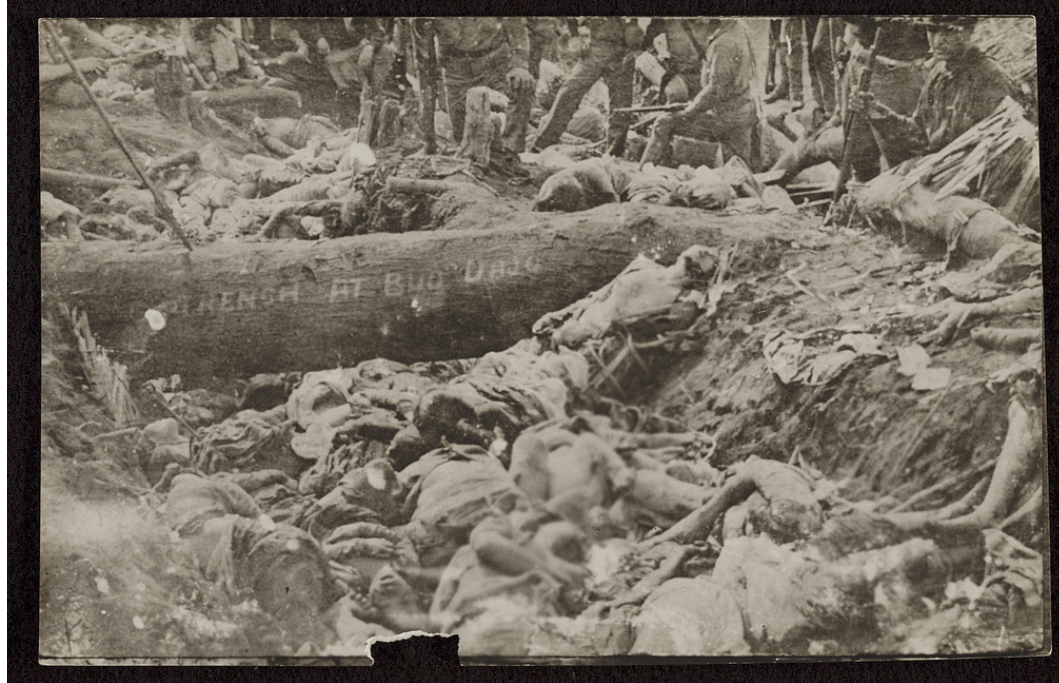
Sources:
Gowing, Peter G. 1983. Mandate in Moroland: The American Government of Muslim Filipinos, 1899-1920. Quezon City: New Day Publishers.
Fulton, Robert A. 2009. Moroland: The History of Uncle Sam and the Moros 1899-1920. Oregon, USA: Tumalo Creek Press.
Hurley, Vic. 1936. Swish of the Kris: The Story of the Moros. New York: E. P. Dutton and Co., Inc.
Tan, Samuel K. 1982. “Panglima Hassan: Profile of a Sulu Leader.” Selected Essays on the Filipino Muslims. Mindanao State University Research Center, p.98-104
Read More
The Pursuit of Datu Ali in Cotabato
1903-1905
The Pursuit of Datu Ali in Cotabato
Datu Ali was the last and most formidable Muslim ruler to oppose American rule in Mindanao. It took almost two years with several US Army formations and Philippine Constabulary to pursue him. He was killed in 1905. Datu Ali from Kudarangan was the son of Datu Utu and the son-in-law of Datu Piang who succeeded Datu Utu. Before the Americans, Datu Ali has fought the Spaniards in his refusal to honor Spanish flag. In 1886, he attacked the town of Lepanto near the Spanish fort of Bugcaon, killing fourteen and looting the place as the campaign ended He refused to...Datu Ali was the last and most formidable Muslim ruler to oppose American rule in Mindanao. It took almost two years with several US Army formations and Philippine Constabulary to pursue him. He was killed in 1905.
Datu Ali from Kudarangan was the son of Datu Utu and the son-in-law of Datu Piang who succeeded Datu Utu. Before the Americans, Datu Ali has fought the Spaniards in his refusal to honor Spanish flag. In 1886, he attacked the town of Lepanto near the Spanish fort of Bugcaon, killing fourteen and looting the place as the campaign ended
He refused to obey the anti-slavery law of the Americans and attempted raise the entire Cotabato Valley to revolt against the Americans. His agents also sought to convince the M’ranaos of Lake Lanao to join him. In early of March 1904, General Leonardo Wood captured Datu Ali’s main cota in Kudaranga. But Datu Ali escaped along with his men. He shifted to a guerrilla warfare against the Americans. In May 1904, his men killed two officers and 17 men when they ambushed a company of the 17th infantry. The wounded were captured and cared of. Later they were sent back to an army post.
His men continued to raid the lower Cotabato valley, keeping the area in turmoil for nearly eight months. Months of previous military operation against him failed until a Muslim guide informed the Americans of his whereabouts. Finally on October 22, 1905, a surprised attacked on his hideout at Malala River killed him and several hundred of his followers.
Sources:
Gowing, Peter G. 1983. Mandate in Moroland: the American government of Muslim Filipinos, 1899-1920. Quezon City: New Day Publishers.
Hurley, Vic. Swish of the Kris. E.P. Dutton and Co., Inc., 1936.
Read More
Protestest Against Americans
1910
Protestest Against Americans
America’s plan to retain Mindanao and Sulu as part of the Philippines was met with strong opposition from Muslim leaders in Sulu, Zamboanga, Maguindanao and Lanao. The American government and the Filipino Christian politicians in Manila knew well that the economic future of the country is linked to Mindanao and Sulu resources. Thus, inclusion of these two Muslims areas is important in establishing a self-sustaining country. But the Muslims preferred to be independent or remain under the United States of America than be handed over to their traditional enemies, the Filipino Christians. In a mass meeting during the visit of...America’s plan to retain Mindanao and Sulu as part of the Philippines was met with strong opposition from Muslim leaders in Sulu, Zamboanga, Maguindanao and Lanao.
The American government and the Filipino Christian politicians in Manila knew well that the economic future of the country is linked to Mindanao and Sulu resources. Thus, inclusion of these two Muslims areas is important in establishing a self-sustaining country. But the Muslims preferred to be independent or remain under the United States of America than be handed over to their traditional enemies, the Filipino Christians.
In a mass meeting during the visit of Secretary of War Jacob M. Dickenson in Zamboanga in August 1910, Datu Mandi, Datu Sakaluran, Datu Nuño, and Ulangkaya Ujaton expressed their unwillingness to be part of the Philippines, instead desiring to have a separate independent state or remain in the hands of the Americans.
Not long after the management of the Bureau of non-Christian Tribes was passed on to Christian Filipinos in 1920, fifty-seven prominent Tausug leaders presented a petition to the president of the United States of America during the visit of Wood-Forbes mission to Sulu in 1921. They were asking that Sulu be governed separately from the rest of the Philippines. The petition also charged Christian Filipino officials with abuse of power. This was again followed by declaration of rights and purposes on February 1924 signed by more than a hundred signatories including the Maguindanao Sultan Mangingin, Abdula Piang, Datu Benito, and the Muslims leaders in Zamboanga. A portion of the declaration states,
“… In the event that the United States grants independence to the Philippine islands without provision for our retention under the American flag, it is our firm intention to resolve to declare an independent constitutional sultanate to be known to the world as Moro Nation. It is the duty of the Congress of the United States to make provision at once for the security and protection promised to us when we surrendered our arms to the United States Army. This promised is just as sacred as any alleged promises you have made to the Christian Filipinos. You have left us defenseless, and it your duty to protect us or return to us the weapons you took from us and which we freely gave you, relying on your promise.”
Meanwhile, some policy makers in America also shared the idea of separation. Two bills were introduced to the US Congress, the 1926 Bacon Bill which proposed the retention of Moro province under American rule while granting independence to Luzon and Visayas, and the Cooper Bill which also proposed the retention of Mindanao, Sulu, and Palawan for eventual federation with the United States.
Later in 1934 when the US Congress passed the Philippine Independence Act which gave a ten-year commonwealth status before the total independence, a mass marching to oppose the inclusion of Moro land into the Philippines was held in Marawi (Lanao). A written letter known as the Dansalan declaration was also sent by more than a hundred Maranao leaders to US President Roosevelt explaining the religious differences between the Muslims and the Filipinos, expressing their disagreement and the negative consequence if the Moro land will be included as part of the Philippines. Instead, they wanted to remain under Americans whom they believed were more religious tolerance and respectful of their way of life compared to the Christianized Filipinos who has been their enemies.
However, all those demands by the Muslims in a series of protests were not granted. The American government instead favored the pressure of the Filipino Christian politicians maintain a unified country.
Sources:
Gowing, Peter G. 1983. Mandate in Moroland: The American Government of Muslim Filipinos, 1899-1920. Quezon City: New Day Publishers.
Jubair, Salah. 1999. Bangsamoro: A Nation Under Endless Tyranny. Kuala Lumpur: IQ Martin.
Abas, Datucan M. 1971. Muslim Secession Movement in the Philippines. M.A. Thesis. Manila: Manuel L. Quezon University.
Photo Sources:
Muslim leaders convened in Zamboanga in 1910 to declare their protest against inclusion in the unification plan. Photo source: Bangsamoro News Facebook page. https://www.facebook.com/photo?fbid=536525953218449&set=pcb.536526363218408
Read MoreCreation of Colonies
1912
Creation of Colonies
The first formal plan to settle Mindanao with the settlers from Luzon and Visayas was started in 1912 during the time of Brigadier General John C. Pershing as governor of the Moro Province. The main reason for the settlement plan was the alleged overpopulation in the northern areas. Other reason given was that the Cotabato Valley needed settlers if it was to produce rice in larger or commercial quatities. In the same year, the first Christian rice colony, consisting of 100 families from Cebu, was relocated in Cotabato. They promised to own land eventually. Pershing emphasized that a well managed...The first formal plan to settle Mindanao with the settlers from Luzon and Visayas was started in 1912 during the time of Brigadier General John C. Pershing as governor of the Moro Province. The main reason for the settlement plan was the alleged overpopulation in the northern areas. Other reason given was that the Cotabato Valley needed settlers if it was to produce rice in larger or commercial quatities.
In the same year, the first Christian rice colony, consisting of 100 families from Cebu, was relocated in Cotabato. They promised to own land eventually. Pershing emphasized that a well managed Filipno colony in the heart of the Moro country
Jubair, Salah . 1999. Bangsamoro: A Nation Under Endless Tyranny (3rd ed., updated and expanded. Kuala Lumpur: IQ Marin Sdn. Bhd.
Read More

Battle of Bud Bagsak
1913
Battle of Bud Bagsak
Another American policy, the disarmament, forced the Tausug in Sulu to organize another armed resistance in Bud Bagsak in 1913. The war lasted five days killing around five hundred Tausug fighters. Peace and order conditions in Sulu and Mindanao greatly improved since the General Wood’s time. However, his successor, General John H. Pershing believed that full respect of the law will not happen in Moro land unless the Muslims were disarmed. On September 08, 1911, he issued Executive Order No. 24 prohibiting the possession and acquisition of a deadly weapon in the entire Moro province. Some opposition in Lanao was...Another American policy, the disarmament, forced the Tausug in Sulu to organize another armed resistance in Bud Bagsak in 1913. The war lasted five days killing around five hundred Tausug fighters.
Peace and order conditions in Sulu and Mindanao greatly improved since the General Wood’s time. However, his successor, General John H. Pershing believed that full respect of the law will not happen in Moro land unless the Muslims were disarmed. On September 08, 1911, he issued Executive Order No. 24 prohibiting the possession and acquisition of a deadly weapon in the entire Moro province. Some opposition in Lanao was suppressed by swift action of the Army and constabulary. In Cotabato, a certain Datu Alameda gave the authorities trouble, but he was eventually driven into the interior.
The strongest resistance to disarmament policy was in Sulu. About 1,300 Tausug fortified again Bud Dahu. But General Pershing’s strategy of cutting them food supplies to starve them led into their gradual dispersal, except for few who fought and were captured. But in Lati, Patikul, Tausug were still opposing the disarmament. They attacked American troops. In January 1913, a combined force of Constabulary and scouts engaged their group led by Naqib Amil and his brother Datu Jami, and Datu Sahipa. Both sides had many casualties. When military reinforcements arrived, they retired to Bud Bagsak with almost the entire population of Lati. After several months of negotiations, most of the women, children, and unarmed came down the mountain. But the three local leaders and their men remained to fight. They had fortified five key positions, including the main fort of the mountain.
On June 10, 1913, American forces, led by Pershing, launched a surprise attack. The American troops were divided into two wings, each tasked with capturing the outlying forts. After intense fighting, several forts fell to the Americans, including Matunkup, where troops had to scale a sheer cliff under heavy fire. Despite fierce counterattacks of the Tausug, American forces steadily advanced, with heavy casualties on both sides.On the third day, the Americans captured the crucial fortress of Bunga, allowing them to position artillery for the final assault on Bud Bagsak. On the fourth day, after hours of intense fighting and a two-hour barrage, the American troops stormed the final defenses. Pershing personally oversaw the final assault, and by the end of the day, the Tausug were defeated. Around 500 Tausug, fighting bravely to the death, were killed. This battle marked the end of organized Muslims resistance against American forces
Muslims “as fighting men,” says an American, Author Vic Hurley, “they take first rank in the pages of martial history. The were responsible for the change in regulations of the United States army, providing for the substitution of a .45 caliber pistol for the .38 caliber weapon formerly carried as a sidearm. The .38 caliber bullet was incapable of stopping the Muslim in time to save the soldier who had fired the shot.
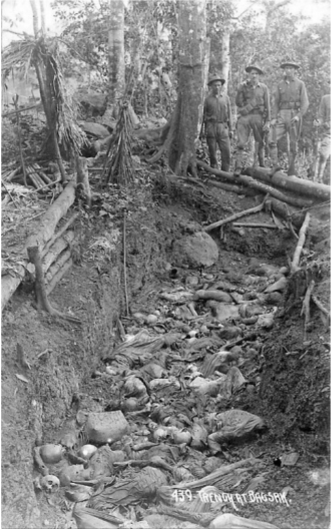
Sources:
Gowing, Peter G. 1983. Mandate in Moroland: The American Government of Muslim Filipinos, 1899-1920. Quezon City: New Day Publishers.
Fulton, Robert A. 2009. Moroland: The History of Uncle Sam and the Moros 1899-1920. Oregon, USA: Tumalo Creek Press.
Hurley, Vic. 1936. Swish of the Kris: The Story of the Moros. New York: E. P. Dutton and Co., Inc.
Photo Source:
U.S. troops of the 8th infantry and Philippine Scouts defeat Moro tribesmen; officer using Colt semi-automatic. Photo credit: Peter Newark Military Pictures / Bridgeman Images. https://www.bridgemanimages.com/en/mcbarron/the-battle-of-bagsak-mountain-jolo-island-philippines-in-june-1913-colour-litho/colour-lithograph/asset/350348?offline=1
Read MoreDEPARTMENT OF MINDANAO SULU
MARCH 13, 1914 - FEBRUARY 5, 1920
The administration of the Department of Mindanao and Sulu was formally started on January 1,1915. In 1916, the legislative power over the Moro country was transferred to the Philippine Legislature as stipulated in the Jones Law. By 1920, the control of Moro Affairs, except for a few positions held by the Americans, was in the hands of the Filipinos. On February 5, 1920, the Department of Mindanao and Sulu was formally abolished by Act No. 2878 of the Philippine Legislature, and its instead, the Bureau of Non-Christian Tribes was organized. Teofisto Guingona Sr., a native Christian, succeeded Frank C. Carpenter...The administration of the Department of Mindanao and Sulu was formally started on January 1,1915. In 1916, the legislative power over the Moro country was transferred to the Philippine Legislature as stipulated in the Jones Law. By 1920, the control of Moro Affairs, except for a few positions held by the Americans, was in the hands of the Filipinos.
On February 5, 1920, the Department of Mindanao and Sulu was formally abolished by Act No. 2878 of the Philippine Legislature, and its instead, the Bureau of Non-Christian Tribes was organized. Teofisto Guingona Sr., a native Christian, succeeded Frank C. Carpenter as director of the new office. In 1936, a further change was effected with the renaming of this office as the Commission on Mindanao and Sulu, with Dansalan, Lanao as its headquarters. The Commission was headed by a Commissioner with the rank of Undersecretary in the Department of Interior and Labor.
However, it should be noted that the Moro defiance and resistant efforts continued in the several decades following 1913, although not as large-scale and organized as the ones in 1902-1913. In 1923, Teofisto Guingona Sr. reported an average of 19 military encounters per year in the 1914-1920 period; and in 1921- 23, there occurred 21 military encounters, with a total of 294 dead and 14 wounded (Muslim, 1994: p. 58).
Muslim, Macapado A. 1994. The Moro Armed Struggle in the Philippines: The Nonviolent Autonomy Alternatives. Marawi City: University Press and Information Office.
See also: “Discurso del Sr. Guingona sobre la situacion de Mindanao y Sulu, November 13, 1923, Box 22. S. 8, Papers of Manuel L. Quezon, National Library Manila.
Read MoreSulu Petition to U.S. Government
1921
Sulu Petition to U.S. Government
When the United States government promised to grant independence to the Philippine Islands, the Bangsamoro leaders registered their strong objection to be part of the Philippine republic. In a petition to the president of the United States dated June 9, 1921, the people of Sulu archipelago said that they would prefer being part of the United States rather than to be included in an independent Philippine nation (Lingga, 2014). Lingga, Abhoud Syed. 2014. “Understanding Bangsamoro Independence a Mode of Self-Determination” (PDF). Mindanao Journal. XXVII: 6. Retrieved; 20 June 2024.When the United States government promised to grant independence to the Philippine Islands, the Bangsamoro leaders registered their strong objection to be part of the Philippine republic. In a petition to the president of the United States dated June 9, 1921, the people of Sulu archipelago said that they would prefer being part of the United States rather than to be included in an independent Philippine nation (Lingga, 2014).
Lingga, Abhoud Syed. 2014. “Understanding Bangsamoro Independence a Mode of Self-Determination” (PDF). Mindanao Journal. XXVII: 6. Retrieved; 20 June 2024.
Read More
The Sultan of Sulu Has His Own Flag
1933
The Sultan of Sulu Has His Own Flag
Read MoreDansalan Declaration
1935
Dansalan Declaration
Jubair (1999) opined that during the height of the deliberations of the Constitutional Convention, Hadji Abdulhamid Bongabong, chief religious leader of Unayan, and 189 Lanao Moros (Meranaws) sent a letter of appeal or a virtual warning — to the United States through the governor general on March 18, 1935. The petition, popularly referred to us the historic Dansalan Declaration, speaks of the undying sentiments and aspiration of the Moros for a separate homeland. Some of the salient points/proofs of the petition are the following: First, with regard to the forthcoming Philippine Independence, we foresee that the condition (of the...Jubair (1999) opined that during the height of the deliberations of the Constitutional Convention, Hadji Abdulhamid Bongabong, chief religious leader of Unayan, and 189 Lanao Moros (Meranaws) sent a letter of appeal or a virtual warning — to the United States through the governor general on March 18, 1935. The petition, popularly referred to us the historic Dansalan Declaration, speaks of the undying sentiments and aspiration of the Moros for a separate homeland. Some of the salient points/proofs of the petition are the following:
First, with regard to the forthcoming Philippine Independence, we foresee that the condition (of the Moro people) will be characterized by unrest, suffering and misery…,
Second, Our Christian associates have for… many years their desire to be the only ones blessed with leadership and well progressive towns and cities. One proof of this is that among us who were capable of participating in managing and administering the government have not been given the chance to demonstrate their ability. Another proof is that Christian Filipinos have taken control of our insular funds in which by right we have equal rights. One more discriminatory act of our Christian associates is shown in the recent constitution of the Philippine Commonwealth. In that constitution, no provision whatsoever is made that would operate for the welfare of the Moros; and
Third, we do not want to be included in the Philippine independence; once an independent Philippine is launched troubles (will erupt) between us and the Christian Filipinos; since time immemorial these two people have not lived harmoniously. It is not proper to have two antagonizing peoples to live together under the Philippine Independence,
Jubair, Salah . 1999. Bangsamoro: A Nation Under Endless Tyranny (3rd ed., updated and expanded. Kuala Lumpur: IQ Marin Sdn. Bhd.
Read More
Japanese Imperial Army Invasion of Mindanao
December 8, 1941
Japanese Imperial Army Invasion of Mindanao
According to Baclagon (1986), when the Japanese Imperial Army invaded Mindanao in 1941, Datu Salipada K. Pendatun organized and led the Bolo Battalion that grown into Muslim-Christian guerilla outfit and expanded later to Cotabato Bukidnon Force (CBF), one of the most active, largest and strongest guerrilla army in Mindanao, a group that included Americans and Christian Filipinos as well as Maguindanaons. In 1942, his fellow guerrilla leaders selected him as their “General”; Six months before the Americans finally returned to the Philippines in late 1944, the Cotabato Bukidnon Force had already driven out the Japanese in their territories in Mindanao,...According to Baclagon (1986), when the Japanese Imperial Army invaded Mindanao in 1941, Datu Salipada K. Pendatun organized and led the Bolo Battalion that grown into Muslim-Christian guerilla outfit and expanded later to Cotabato Bukidnon Force (CBF), one of the most active, largest and strongest guerrilla army in Mindanao, a group that included Americans and Christian Filipinos as well as Maguindanaons. In 1942, his fellow guerrilla leaders selected him as their “General”; Six months before the Americans finally returned to the Philippines in late 1944, the Cotabato Bukidnon Force had already driven out the Japanese in their territories in Mindanao, with the latter preferring to surrender to US servicemen than to the CBF headed by Pendatun for obvious reasons. In the words of Father Edward Haggerty (1964), Major Pendatun is the “small Napoleon” destined to lead his people
Baclagon, Uldarico S. 1986. Chritian-Moslem Guerilla of Mindanao. Manila: Lord Avenue Printing Press. Philippines.
Haggerty, Edward M. 1964. Guerilla Padre in Mindanao. Manila: Book Mark.
Salipada Pendatun (center) with American emissaries, 1943 (Source: The MacArthur Memorial)

Read More

1946 Philippine Independenc: A Separate People in a New Nation
July 04, 1946
1946 Philippine Independenc: A Separate People in a New Nation
On July 04, 1946, the American government illegally annexed Sulu and Mindanao when it granted the Philippine Independence despite the series of protests and warnings of many Muslim leaders. This illegal annexation became the root of contemporary armed struggle that culminated in 1972. With their commitment to maintain the integrity of the Philippine state that had been ceded by Spain in 1898, the American government illegally annexed Sulu and Mindanao when they granted Philippine Independence on July 04, 1946. Despite the protests against inclusion and warnings of future bloodshed by many Muslim leaders, American administrators could not also ignore...On July 04, 1946, the American government illegally annexed Sulu and Mindanao when it granted the Philippine Independence despite the series of protests and warnings of many Muslim leaders. This illegal annexation became the root of contemporary armed struggle that culminated in 1972.
With their commitment to maintain the integrity of the Philippine state that had been ceded by Spain in 1898, the American government illegally annexed Sulu and Mindanao when they granted Philippine Independence on July 04, 1946. Despite the protests against inclusion and warnings of future bloodshed by many Muslim leaders, American administrators could not also ignore the pressure of Manila Christian politicians who were against any plan of reducing the country. Besides, like the Spaniards and their Christianized natives, American administrators view Muslims as backward and unprogressive people who needed association with the more economically developed Christian-dominated Philippine state in order to share the benefits of the modern, more “civilized” world.
Thus, while the Christian Filipinos became independent, the Muslims saw another colonial rule, this time, the Manila Christian Politicians. The freedom they fought to keep for centuries was handed over to their traditional enemies whose ways of thinking reflect much of their colonial masters. Indeed, those Manila Christian Politicians just carried on foreign colonial policies and programs that were not only compatible and sensitive with the values and beliefs of the Muslims, but alienated them in their own homeland.
Sources:
Gowing, Peter G. Muslim Filipino: Heritage and Horizon. Quezon City: New Day Publishers, 1979.
Gross, Max L. A Muslim Archipelago: Islam and Politics in Southeast Asia. Washington, DC: NDIC Press, 2007.
Majul, Cesar Adib. The Contemporary Muslim Movement in the Philippines. Berkeley, CA: Mizan Press, 1985.
New Administration, Same Old Policies
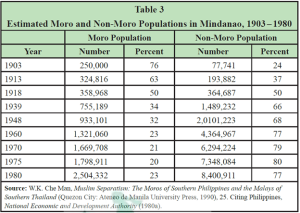
One of the colonial policies that Christian Filipino Politicians pursued was the sending of Christian settlers from Luzon and Visayas which slowly marginalized the Muslims in Mindanao. This policy caused unrest and strife which later forced the Muslims to once again fought the Manila colonial government.
After Sulu and Mindanao were illegally annexed by the American government to the newly established Philippine state in 1946, the welfare of the Muslims were now in the hands of the Manila Christian Politicians. While many Muslim leaders found some political positions both local and national in this new government, most Muslims did not share this sense of national unity.
The implementation of Western Christian based national laws were often in conflict with their Adat (customary) and Islamic laws especially those pertaining to personal and family relations that the Muslims have been accostomed to. Public school system did not differ much with those during the American occupation and Commonwealth government. The same currilum was implemented to all children regardless of religion and cultural differences. Christian Filipino educators still carried the idea of assimilating the Muslims into a larger national community while the Muslims have different history and distinct culture. Thus, Muslim parents thought that this school curriculum was no different from that with the Americans which was to alienate their children from Islam
The continuous influx of Christian settlers slowly outnumbered the Muslims in Mindanao. In 1960, Musllims population was 1,321,060 while the Christians were already 4,364, 967 constituting 77% of the total population. This led many Muslims to conclude that there was a deliberate government scheme either to disperse them or to ensure that they remain a permanent minority in their own territories. They noted with frustration, if not envy, that the areas where the Christians had settled now had better roads and more effective irrigation projects, civic centers, and schools in comparison with their own backward facilities. So they believed that they were the victims of government discrimination and of neglect by their own leaders. In turn, Muslim leaders blamed all the ills on the so-called Christian government in Manila.
While under the Americans, migration had been encouraged to serve the needs of international capital, however, under the independent Philippines government in Manila, liberalization of land ownership restrictions combined with monopolistic laws on commodity exports to allow a number of politically-linked Christian families to accumulate vast plantation holdings. Given the political links and personal biases of their owners, these haciendas tended to employ Christian labourers at the expense of the Muslim. It was to this condition that Kamlun uprising was born.
Sources:
Majul, Cesar Adib. The Contemporary Muslim Movement in the Philippines. Berkeley, CA: Mizan Press, 1985.
Che Man, W K. Muslim Separatism: The Moros of Southern Philippines and the Malays of Southern Thailand. Quezon City : Ateneo de Manila University Press, 1990.
Gutierrez, E and S Borras. The Moro Conflict: Landlessness and Misdirected State Policies. Washington DC : East-West Center, 2004.
Read More
1948 Kamlun Uprising
1948
1948 Kamlun Uprising
In 1948, Kamlun Haji led an uprising against the government due to the continuous marginalization of the Muslim population and the government’s land registration policy. His rebellion, which caused heavy casualties and economic bankruptcy on the side of the government, resulted in the creation of Commission on National Integration (CNI) and the establishment of Mindanao State University (MSU) to provide better education for the Muslims, as ways to accelerate their integration into the larger Philippine society. More Information: Kamlun Haji was a famous local hero among the Tausug in Sulu who fought against the Japanese during Japan’s invasion from...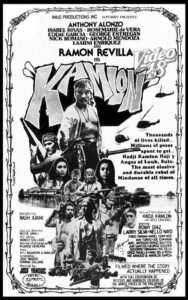
In 1948, Kamlun Haji led an uprising against the government due to the continuous marginalization of the Muslim population and the government’s land registration policy. His rebellion, which caused heavy casualties and economic bankruptcy on the side of the government, resulted in the creation of Commission on National Integration (CNI) and the establishment of Mindanao State University (MSU) to provide better education for the Muslims, as ways to accelerate their integration into the larger Philippine society.
More Information:
Kamlun Haji was a famous local hero among the Tausug in Sulu who fought against the Japanese during Japan’s invasion from 1941-1945. Fueled by agrarian intrigues, socioeconomic issues, political threats, and the growing marginalization of the Muslim population by the Philippine government that favored and extended more benefits to Christians, Kamlun revolted against the government and this lasted eight years. Despite his forces being relatively small, Kamlun’s impact was profound because it dismembered the famous Nenita (Korean War veteran) Unit. His uprising became the second largest threat to the Philippines next to the Hukbalahap, which compelled Ramon Magsaysay, who was then the defense secretary, to negotiate his surrender.
Despite four years of extensive government campaigns involving 5,000 ground troops and substantial financial costs of around 185 million pesos, the government never captured him. In the end, Kamlun’s advancing age led him to finally surrender in 1955, marking the conclusion of one of the most formidable rebellions in Philippine history. He was imprisoned in Muntinlupa only to be given pardon by President Ferdinand Marcos Sr. in 1968 through the mediation of Nur Misuari who became later on the chairman of the Moro National Liberation Front (MNLF). Kamlun’s life was portrayed by Ramon Revilla in a film Kamlun in 1981.
Kamlun’s uprising prompted the government to create a congressional committee in 1954 to study and make recommendations on the Mindanao and Sulu problem. The committee headed by a Muslim congressman (later senator), Domocao Alonto, brought out the issue of land disputes, stated that Muslims did not feel part of the nation, and made various recommendations. However, only the creation of Commission on National Integration (CNI) was fully carried out. And despite its many purposes, such as the acceleration of the Muslims’ progress in terms of the political and economic systems, and their integration into the social system of the country, the commission instead focused on the granting of scholarships to Muslims and other cultural minority groups. In September 1961, the Mindanao State University in Marawi was also established, whose one of the functions is “to help accelerate the program of the integration among the peoples of Southern Philippines, particularly the Muslims and other cultural minorities.”
Still, education and integration remain to be the priority solution of the government in addressing the Muslims’ concern, a solution that did not prove to be appropriate in the succeeding years.
Sources:
Tan, Samuel K. 2007. “Unity and Disunity in the Muslim Struggle.” UP Diliman Asian Studies Journal. Page 4. 92. VOLUME 43:1. https://www.asj.upd.edu.ph/mediabox/archive/ASJ-11-3-1973/tan-unity%20disunity%20muslim%20struggle.pdf
Stern, Tom. 2012. An Authorized Bibliography of Nur Misuari. Anvil Publishing Inc., Manila.
Mawallil, Amir. 2916, “What makes a hero?” ABS-CBN News. August 29, 2016. https://news.abs-cbn.com/opinions/08/29/16/opinion-what-makes-a-hero
“TANKS HUNT FOR FILIPINO; Kamlon, Notorious Bandit, Is Target of All-out Campaign”. The New York Times. 15 July 1952.
Read MoreResettlement - Republic of the Philippines
1949-1954
Resettlement - Republic of the Philippines
1949: Rice and Corn Production Administration (RCPA) created to promote rice and corn production. Opened Buluan in Cotabato and Maramag-Wao in Bukidnon-Lanao border. 1950: Land Settlement Development Corporation (LASEDECO) Opened Tacurong, Isulan, Bagumbayan, Part of Buluan, Sultan sa Barongis, Ampatuan 1951: Economic Development Corps (EDCOR) for captured and surrendered Huks, opened Arevalo in Sapad, Lanao del Norte; Genio in Alamada, Gallego and Barira in Buldon, all in Cotabato, and two others in Isabela and Quezon. 1954: RA 1160 created National Resettlement and Rehabilitation Administration (NARRA)- 1949: Rice and Corn Production Administration (RCPA) created to promote rice and corn production. Opened Buluan in Cotabato and Maramag-Wao in Bukidnon-Lanao border.
- 1950: Land Settlement Development Corporation (LASEDECO) Opened Tacurong, Isulan, Bagumbayan, Part of Buluan, Sultan sa Barongis, Ampatuan
- 1951: Economic Development Corps (EDCOR) for captured and surrendered Huks, opened Arevalo in Sapad, Lanao del Norte; Genio in Alamada, Gallego and Barira in Buldon, all in Cotabato, and two others in Isabela and Quezon.
- 1954: RA 1160 created National Resettlement and Rehabilitation Administration (NARRA)
Read More

Congress Bill for Sulu Independence
1961
Congress Bill for Sulu Independence
In 1961, Sulu Congressman Datu Ombra Amilbangsa introduced House Bill 5862 calling for the granting of Sulu Independence. The bill fell on deaf ears in the House of Congress. More Information: Datu Ombra Amilbangsa was married to Dayang-Dayang Hadji Piandao, the niece of Sulu Sultan Hadji Jamalul Kiram. He was a member of the Philippine National Assembly from 1935 to 1938 representing Sulu and was later appointed governor of Sulu by President Manuel L. Quezon. Then from 1941 to 1946, he was Sulu’s lone congressman in the Philippine Commonwealth’s House of Representative; and the Philippine House of Representative from...In 1961, Sulu Congressman Datu Ombra Amilbangsa introduced House Bill 5862 calling for the granting of Sulu Independence. The bill fell on deaf ears in the House of Congress.
More Information:
Datu Ombra Amilbangsa was married to Dayang-Dayang Hadji Piandao, the niece of Sulu Sultan Hadji Jamalul Kiram. He was a member of the Philippine National Assembly from 1935 to 1938 representing Sulu and was later appointed governor of Sulu by President Manuel L. Quezon. Then from 1941 to 1946, he was Sulu’s lone congressman in the Philippine Commonwealth’s House of Representative; and the Philippine House of Representative from 1946 to 1961.
Following the revolt of Kamlun Haji, he filed a bill in the House of Congress that sought independence for Sulu Province. Although the bill was publicized by the media and drew comments from historians and those interested in Muslim affairs, nothing came out of it in Congress.
Sources:
Majul, Cesar Adib. 1985. The Contemporary Muslim Movement in the Philippines. Berkeley, CA: Mizan Press.
The Sulu Cultural and Historical Society Facebook Page.
https://www.facebook.com/photo/?fbid=2693760987616990&set=a.2346452985681127
Read MoreResettlement - Part of RP Land Reform
1963-1971
Resettlement - Part of RP Land Reform
1963: Land Authority inaugurated land reform, also managed resettlement 1971: RA 6389 created Department of Agrarian Reform (DAR), did resettlement thru the Bureau of Resettlement. Administered 37 settlements all over the country, 18 of them in Mindanao in the ten provinces of Tawi-Tawi (Balimbing-Bongao), Zamboanga del Norte (Liloy, Salug, Sindangan), Bukidnon (Maramag, Pangantukan, Kalilangan), Agusan del Sur (Prosperidad, Talacogon), Davao del Norte (Sto Tomas, Panabo, Asuncion), Lanao del Norte (Sapad, Nunungan, Karomatan), Lanao del Sur (Wao, Lumba-a-Bayabao, Bubong, Butig, Lumbatan, Bayang, Binidayan, Pagayawan, Tubaran), North Cotabato (Carmen, Alamada), Maguindanao (Buldon, Upi-Dinaig) and Sultan Kudarat (Columbio, Tulunan, Isulan, Bagumbayan, Surallah). ...- 1963: Land Authority inaugurated land reform, also managed resettlement
- 1971: RA 6389 created Department of Agrarian Reform (DAR), did resettlement thru the Bureau of Resettlement.
Administered 37 settlements all over the country, 18 of them in Mindanao in the ten provinces of Tawi-Tawi (Balimbing-Bongao), Zamboanga del Norte (Liloy, Salug, Sindangan),
Bukidnon (Maramag, Pangantukan, Kalilangan), Agusan del Sur (Prosperidad, Talacogon), Davao del Norte (Sto Tomas, Panabo, Asuncion), Lanao del Norte (Sapad, Nunungan, Karomatan), Lanao del Sur (Wao, Lumba-a-Bayabao, Bubong, Butig, Lumbatan, Bayang, Binidayan, Pagayawan, Tubaran),
North Cotabato (Carmen, Alamada), Maguindanao (Buldon, Upi-Dinaig) and Sultan Kudarat (Columbio, Tulunan, Isulan, Bagumbayan, Surallah).
Public Land Law and Resettlement
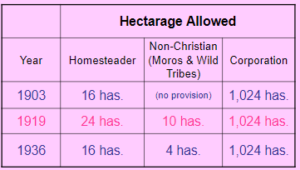
Resettlement: Case of Cotabato 1918 census
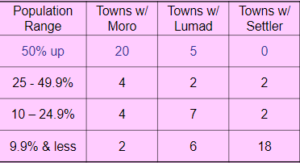
1939 Census

1970 Census

POPULATION CHANGE IN COTABATO 1918-1970

MINDANAO Pop. Census
1903-1918

Read More

The 1968 Mindanao Independence Movement (MIM)
1968
The 1968 Mindanao Independence Movement (MIM)
File photo of the mosque in Manili, Carmen, North Cotabato, where the massacre on June 19, 1971 happened. Photo courtesy of IHARYF SUCOL / UN volunteer, 2003. https://mindanews.com/peace-process/2018/06/the-june-19-1971-manili-massacre-all-i-can-remember-is-that-the-blood-was-so-warm/#gsc.tab=0 Following the March 18, 1968 Jabidah Massacre in Bataan of Muslims who were training to invade Sabah, Malaysia, former Cotabato Governor Datu Udtug Matalam, on May 01, 1968, announced the establishment of the Muslim Independence Movement (MIM). Although short-lived, the movement revived memories of Muslim freedom and independence. It also compelled ambitious Christian politicians and businessmen in Mindanao to form their armed bands to protect themselves. More Information: Muslim-Christian relationship...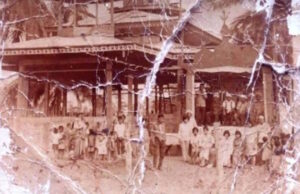
Following the March 18, 1968 Jabidah Massacre in Bataan of Muslims who were training to invade Sabah, Malaysia, former Cotabato Governor Datu Udtug Matalam, on May 01, 1968, announced the establishment of the Muslim Independence Movement (MIM). Although short-lived, the movement revived memories of Muslim freedom and independence. It also compelled ambitious Christian politicians and businessmen in Mindanao to form their armed bands to protect themselves.
More Information:
Muslim-Christian relationship in Mindanao started to become tense when the government’s liberalization of land ownership restrictions, combined with monopolistic laws on commodity export, allowed a number of politically linked Christian families to accumulate vast plantation holdings. Aside from losing their lands to Christian settlers, the Muslims began to be deprived of employment and economic opportunities.
These tensions were accelerated by an incident in Corregidor, Bataan, on March 18, 1968, when 23 Muslims from Sulu who demanded to go home because of their delayed allowances were executed by elements of the Philippine Army who recruited them for military training to allegedly take back Sabah, Malaysia. Driven by this incident, his loss in the political arena, and the continuous marginalization of the Muslims in Mindanao, Datu Udtug Matalam established the Muslim Independence Movement on May 01, 1968. He later changed it to Mindanao Independence Movement to include the Christian settlers since Datu Udtug was a former governor of Cotabato and a proponent of Muslim-Christian harmony in Mindanao. However, the MIM was disbanded when Datu Udtug was appointed by President Marcos Sr. as presidential adviser for Muslim Affairs when they met at Cebu in October 1968.
Despite its brief existence, MIM has attracted many admirers and revived the Muslims’ memory of their past freedom and independence. Anticipating troubles ahead, ambitious Christian politicians and businessmen brought in trained and armed people and began to form a group called Ilaga that would terrorize Muslim communities. In June 1971, they massacred more than 70 Muslims, including women and children, inside the mosque in Manili village, North Cotabato.
Criminal activities of the Ilaga were often tolerated by the Philippine Constabulary (PC). A manifesto to end killings of Muslims in Mindanao which was produced from a meeting of Muslim politicians, businessmen, young scholars, and many others in Manila was not taken seriously by the government. Traditional Muslim politicians in Lanao and Maguindanao formed the Blackshirts and Baracudas to counteract the activities of the Ilaga. Although there was no organized armed resistance against the government during this period, tensions in Mindanao were already escalating. Meanwhile, Nur Misuari and other young scholars were already in Malaysia for their military training.
Sources:
Majul, Cesar Adib. 1985. The Contemporary Muslim Movement in the Philippines. Berkeley, CA: Mizan Press.
Che Man, W K. 1990. Muslim Separatism: The Moros of Southern Philippines and the Malays of Southern Thailand. Quezon City: Ateneo de Manila University Press.
Gutierrez, E and S Borras. 2004. The Moro Conflict: Landlessness and Misdirected Sstate Policies. Washington DC: East-West Center.
Glang, Alunan C. 1971. Muslim Secession or Integration? Manila: Cardinal Book Store.
Luga, Alan R. 2002. “Muslim Insurgency in Mindanao, Philippines.” A Thesis Presented to the Faculty of U.S. Command Army and General Staff College. Fort Leavenworth, Kansas.
Brown, Graham. 2015. The Long and Winding Road: The Peace Process in Mindanao, Philippines. IBIS Discussion Paper No. 6. Institute for British-Irish Studies University College Dublin.
Read More
JABIDAH, MISUARI, AND THE MORO NATIONAL LIBERATION FRONT (MNLF)
1972
JABIDAH, MISUARI, AND THE MORO NATIONAL LIBERATION FRONT (MNLF)
http://barrmv2.virtualeventph.net/wp-content/uploads/2024/08/Fighting-for-Peace-in-the-Philippines_-VICE-News-Interviews-Nur-Misuari.mp4 Nur Misuari was already teaching at the University of the Philippines in Diliman when he joined the protest in front of Malacañang Palace. When justice was not given to those Muslim trainees who have been massacred by the Philippine Army in Corregidor, Bataan on March 18, 1968, he left his teaching career for a military training in Malaysia and got elected chairman of the Moro National Liberation Front (MNLF). More Information: Nur Misuari was born on March 3, 1939, in Tapul, Sulu. After finishing high school, he entered the University of the Philippines in Diliman in 1958...
Nur Misuari was already teaching at the University of the Philippines in Diliman when he joined the protest in front of Malacañang Palace. When justice was not given to those Muslim trainees who have been massacred by the Philippine Army in Corregidor, Bataan on March 18, 1968, he left his teaching career for a military training in Malaysia and got elected chairman of the Moro National Liberation Front (MNLF).
More Information:
Nur Misuari was born on March 3, 1939, in Tapul, Sulu. After finishing high school, he entered the University of the Philippines in Diliman in 1958 through the scholarship of the Commission on National Integration (CNI). At that time, political activism of the left was prominent in the campus. He studied political science and later law and associated with several political organizations. The first one was Bagong Asya which introduced world ideologies in the campus. Later, he became one of the founders of the Kabataang Makabayan whose chairman was Jose Maria (Joma) Sison, founder of the Communist Party of the Philippines. By the time the incident on March 18, 1968 happened, Nur Misuari was already teaching at the University of the Philippines Diliman.
The March 18 incident which became known as the Jabidah Massacre was a military secret operation called Merdeka whose aim was to allegedly take back Sabah from the Malaysian government. More than 200 Muslims from Sulu and Tawi-Tawi were recruited for a military training in Tawi-Tawi and were later transferred to Bataan. Those 23 who were massacred demanded to be sent home when all their promised allowances were delayed. Jibin Arola was wounded and managed to escape. He was saved by fishermen and was brought to the governor of Cavite who at that time was against the Marcos administration. The secret operation was then exposed by the governor’s ally, the late Senator Ninoy Aquino.
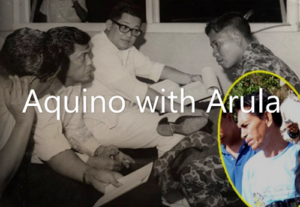
Nur Misuari, along with many young Muslim scholars, held protest outside the Malacañang Palace for several days. They were demanding justice, but the military involved were acquitted despite investigations. It was here that Misuari’s political career began. With the disintegration of the Mindanao Independence Movement (MIM) of Datu Udtug Matalam, the young Misuari left teaching, which was his first love, and joined the first batch of military training, “The 90”, arranged by the Malaysian government and the traditional leaders of Mindanao. When Martial Law was declared by President Marcos Sr., a well-organized Moro National Liberation (MNLF) with Misuari as chairman emerged as a single voice which unified the Muslim tribes and their aspirations under the name Bangsamoro, and began to challenge the government in a wide-scale military confrontation, with the battle cry “Victory or graveyard.”
Sources:
Stern, Tom. 2012. An Authorized Bibliography of Nur Misuari. Anvil Publishing Inc., Manila.
Tan, Samuel K. 1977. The Filipino Muslim Armed Struggle, 1900-1972. Manila: Filipino Foundation Incorporated,
Majul, Cesar A. 1985.The Contemporary Muslim Movement in the Philippines. Berkeley: Mizan Press.
Read More

The Martial Law and All Out War in Mindanao and Sulu
September 24, 1972
The Martial Law and All Out War in Mindanao and Sulu
http://barrmv2.virtualeventph.net/wp-content/uploads/2024/08/Timeline_-Mga-nangyari-noong-Martial-Law-_-NXT.mp4 Source: https://www.youtube.com/watch?v=j00mlRBxlNk On September 24, 1972, President Ferdinand Marcos declared Martial Law in response to the Communist threat in the north and the rebellion in Muslim South. The Moro National Liberation Front (MNLF) responded with armed resistance. More Information; The declaration of Martial Law was immediately followed by an order to confiscate arms in Muslim Areas. This order led to the first military encounters between the MNLF and the Armed Forces of the Philippines (AFP). With their military trainings in Malaysia, the MNLF was confident on its ability to confront the AFP. And it had already been receiving...Source: https://www.youtube.com/watch?v=j00mlRBxlNk
On September 24, 1972, President Ferdinand Marcos declared Martial Law in response to the Communist threat in the north and the rebellion in Muslim South. The Moro National Liberation Front (MNLF) responded with armed resistance.
More Information; The declaration of Martial Law was immediately followed by an order to confiscate arms in Muslim Areas. This order led to the first military encounters between the MNLF and the Armed Forces of the Philippines (AFP). With their military trainings in Malaysia, the MNLF was confident on its ability to confront the AFP. And it had already been receiving arms and other resources from Libya whose President Muammar Gaddafi was convinced that Marcos was conducting genocidal campaign against the Muslims. During the early wars, reports of military victories were notably absent from newspapers, while reports of the increasing Muslim fighters with sophisticated weapons were spreading. President Marcos said, “In the late February to early March 1973, some 6,000 rebels overran much of the Cotabato Provinces. Before that, several thousand other rebels had occupied most of the Basilan Island of Zamboanga del Sur. In the province of Sulu, our troops were hanging on only to towns – the hinterland was lost to the rebels who outnumber them.” The war had cost the lives of about 120,000 people and displaced 300,000 more.
Sources:
Stern, Tom. An Authorized Bibliography of Nur Misuari. Anvil Publishing Inc., Manila. 2012.
Luga, Alan R. Muslim Insurgency in Mindanao, Philippines. A Thesis Presented to the Faculty of U.S. Command Army and General Staff College. Fort Leavenworth, Kansas. 2002.
Castro, Delfin. A Mindanao Story: Troubled Decades in the Eye of the Storm. Delfin Castro, Manila. 2005.
Vitug, Marties D. and Gloria, Glenda M. Under the Crescent Moon: Rebellion in Mindanao. Ateneo Center for Social Policy and Public Affairs. Katipunan, Quezon City and Institute for Popular Democracy. Teachers’ Village, Quezon City. 2000.
Abat, Fortunato U. The Day We Nearly Lost Mindanao: The CEM-CON Story, 3rd ed. Manila: FCA Publishers, 1999.
Read More
Battle of Jolo
February 07, 1974
February 07, 1974, Jolo town was razed to the ground in an encounter between the MNLF and the AFP.
From 1973-1975, President Marcos deployed 70-80% of the AFP to Mindanao and Sulu. The war, however, has put his administration in bad light and started to drain Philippine economy. Iran and Saudi Arabia reduction of oil exports to the Philippines slowed down military’s air operation. Moreover, the government had depleted its military material and was forced to buy these from Taiwan. As supplies dwindled and the cost of war rising exponentially, Marcos had no choice but to negotiate with the MNLF. Fearing to be isolated from the members of the OIC which were now pushing to end the war, the...From 1973-1975, President Marcos deployed 70-80% of the AFP to Mindanao and Sulu. The war, however, has put his administration in bad light and started to drain Philippine economy. Iran and Saudi Arabia reduction of oil exports to the Philippines slowed down military’s air operation. Moreover, the government had depleted its military material and was forced to buy these from Taiwan. As supplies dwindled and the cost of war rising exponentially, Marcos had no choice but to negotiate with the MNLF. Fearing to be isolated from the members of the OIC which were now pushing to end the war, the MNLF also agreed to sign the agreement with Libya as the Mediator.
Sources:
Stern, Tom. An Authorized Bibliography of Nur Misuari. Anvil Publishing Inc., Manila. 2012.
Luga, Alan R. Muslim Insurgency in Mindanao, Philippines. A Thesis Presented to the Faculty of U.S. Command Army and General Staff College. Fort Leavenworth, Kansas. 2002.
Castro, Delfin. A Mindanao Story: Troubled Decades in the Eye of the Storm. Delfin Castro, Manila. 2005.
Vitug, Marties D. and Gloria, Glenda M. Under the Crescent Moon: Rebellion in Mindanao. Ateneo Center for Social Policy and Public Affairs. Katipunan, Quezon City and Institute for Popular Democracy. Teachers’ Village, Quezon City. 2000.
Abat, Fortunato U. The Day We Nearly Lost Mindanao: The CEM-CON Story, 3rd ed. Manila: FCA Publishers, 1999.
Read More
The Tripoli Agreement
December 23, 1976
The Tripoli Agreement
On December 23, 1976, the Moro National Liberation Front (MNLF) and the Government of the Republic of the Philippines (GRP) signed an agreement for autonomy in Tripoli, Libya. MNLF Vice Chairman for Foreign Relations, Ustadz Salamat Hashim left the organization and formed the Moro Islamic Liberation Front (MILF). The Tripoli Agreement granted the MNLF autonomous regional administration over 13 provinces and 4 cities in Mindanao and Sulu that would have Islamic courts aside from the official judicial system, pursue its own economic and educational programs. One provision, however, became a source of conflict. Marcos insisted that Article 6 of the...
On December 23, 1976, the Moro National Liberation Front (MNLF) and the Government of the Republic of the Philippines (GRP) signed an agreement for autonomy in Tripoli, Libya. MNLF Vice Chairman for Foreign Relations, Ustadz Salamat Hashim left the organization and formed the Moro Islamic Liberation Front (MILF).
The Tripoli Agreement granted the MNLF autonomous regional administration over 13 provinces and 4 cities in Mindanao and Sulu that would have Islamic courts aside from the official judicial system, pursue its own economic and educational programs. One provision, however, became a source of conflict. Marcos insisted that Article 6 of the Agreement shall allow “(t)he Philippine government (to) undertake all necessary constitutional processes to implement the entire agreement.” MNLF leaders saw this as a scheme to minimize the regional organization’s territorial jurisdiction, knowing that in most of the provinces that were supposed to come under its control, non-Muslims would not support the autonomous government. furthermore, Marcos unilatery created two autonomous regions (9 and 12) instead of single autonomy. this resulted in the collapse of the Tripoli Agreement. Both the MNLF and the OIC rejected this unilateral decision of splitting the autonomous region. MNLF also boycotted the plebiscite. Unhappy of Misuari’s decision, ideology and leadership style, Ustadz Salamat Hashim who was then the Vice Chairman for Foreign Relations left the organization.
Sources:
Stern, Tom. An Authorized Bibliography of Nur Misuari. Anvil Publishing Inc., Manila. 2012.
Iribani, Abraham. Give Peace a Chance: The Story of the GRP-MNLF Peace Talks. Mandaluyong City: Magbassa Kita Foundation, 2006.
Jubair, Salah. Bangsamoro: A Nation Under Endless Tyranny. Kuala Lumpur: IQ Marin, 1999.
Read More
Ustadz Salamat Hashim and the Moro Islamic Liberation Front (MILF)
1976
Ustadz Salamat Hashim and the Moro Islamic Liberation Front (MILF)
Photo Source: Facebook Page: Life, thoughts of Sheikh Salamat Hashim Allaho Yarhamo. https://www.facebook.com/profile.php?id=100068843875445 After leaving the Moro National Liberation Front (MNLF) during the 1976 Tripoli Agreement, Ustadz Salamat Hashim formed his Moro Islamic Liberation Front (MILF). More Information: Salamat Hashim was born on 7th July 1942 in the Municipality of Pagalungan, Maguindano. At the age of six he started formal education, finishing his elementary education in 1954 with honors and his secondary education in 1958 also with honors. After graduating from high school, he joined a pilgrimage to Makkah (Mecca) and stayed for further study under the care of...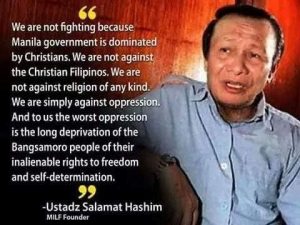
After leaving the Moro National Liberation Front (MNLF) during the 1976 Tripoli Agreement, Ustadz Salamat Hashim formed his Moro Islamic Liberation Front (MILF).
More Information:
Salamat Hashim was born on 7th July 1942 in the Municipality of Pagalungan, Maguindano. At the age of six he started formal education, finishing his elementary education in 1954 with honors and his secondary education in 1958 also with honors.
After graduating from high school, he joined a pilgrimage to Makkah (Mecca) and stayed for further study under the care of a Sheikh Jawawi. A year later, he went to Cairo to study at Al-Azhar University. He also joined a Sufi Tariqa (Islam’s spiritual order). After finishing his undergraduate in 1963, he enrolled in the same university for a master’s program specializing on the Aqidah and Philosophy. Salamat joined the Philippine Muslim Association and was elected president. Apart from this, he was also elected as secretary general of the Organization of Asian Students composed of members coming from various ASEAN countries. Later, he formed his own group composed of Muslim students coming from Southern Philippines whose aim was to organize and mobilize a Muslim revolution in the Philippines. After finishing his MA In 1969, Salamat enrolled in a PhD program in the same university, but never finished his dissertation as he went home to join the MNLF. He was appointed chairman of the Kutawato Revolutionary Committee and was elevated to the Central Committee where he became the MNLF’s Vice Chairman.
As an Alim (religious scholar), Ustadz Salamat anchored his political ideology on Tawhid (Divine Oneness) where Allah is the Supreme Ruler and Absolute Law Giver. He exhorted his followers to conduct all aspects of their lives including political, legal, economic, educational, and social systems under Allah’s Divine Law. The da’wah (propagation) sought to deepen Muslims’ understanding of Islam especially its moral conducts that were derived from the Qur’an and the examples of Prophet Muhammad. He argued that this could only fully happen under a sovereign Bangsamoro state. The Bangsamoro must therefore strive to have their independent state. Salamat’s model of independent Islamic government was federal where the Christians and Iidigenous people in Mindanao would have their own state. It further aimed to reform every home and the community in general into an Islamic home and Islamic community.
After leaving the MNLF, he organized his own group initially known as “The New Leadership.” He moved his new organization to Cairo, Egypt, and then to Lahore, Pakistan in 1980, where it engaged in diplomatic activities and formally established the Moro Islamic Liberation Front (MILF) in 1984.
Sources:
Lingga, Abhoud Syed Mansur. 1995. “The Political Thought of Salamat Hashim.” A Thesis Submitted to the Institute of Islamic Studies University of the Philippines Diliman.
Read More
President Marcos’ Reconstruction and Reforms
February 4, 1977
President Marcos’ Reconstruction and Reforms
While engaging the Moro National Liberation Front with a military campaign, President Marcos also initiated various programs and reforms to accommodate Muslim aspirations. One of these programs was the codification of Muslim Personal Laws where Muslims can adhere to their Islamic law on matters of marriage and other personal laws. MNLF armed resistance forced President Marcos to re-evaluate Muslim grievances in the country. He realized that in order to reconstruct Philippine society, Muslim aspirations and expectations must be accommodated to make them fell part of the larger Filipino society. Through a Presidential Decree No. 264, he created the Philippine...While engaging the Moro National Liberation Front with a military campaign, President Marcos also initiated various programs and reforms to accommodate Muslim aspirations. One of these programs was the codification of Muslim Personal Laws where Muslims can adhere to their Islamic law on matters of marriage and other personal laws.
MNLF armed resistance forced President Marcos to re-evaluate Muslim grievances in the country. He realized that in order to reconstruct Philippine society, Muslim aspirations and expectations must be accommodated to make them fell part of the larger Filipino society. Through a Presidential Decree No. 264, he created the Philippine Amanah Bank with an initial capitalization of 50 Million pesos in 1973 to promote and accelerate the socio-economic growth and development of Mindanao. He also established the Insitute of Islamic Studies in the University of the Philippines Diliman inorder to bridge religious and cultural gap among Filipino Muslims and Christians.
The following year, President Marcos established the Southern Philippine Development Authorization (SPDA) in order to increase economic interaction between Moros and Christian Filipinos at regional borders. He also created the Presidential Task Force for the Reconstruction and Development of Mindanao to rehabilitate devastated areas. Finally in February 1977, President Marcos approved the Code of Muslim Personal Law that deals with Islamic provisions for marriage, divorce, and inheritance applicable for Muslims, and recognized all important Muslim holidays.
Towards the end of his regime, President Marcos continued to initiate programs addressing Muslim aspirations despite the collapse of Tripoli Agreement and the 1977 ceasefire over disagreement on the extent of autonomy. In 1978, he created the Office of Muslim Affairs and Cultural Communities (OMACC) which catered to the needs of both Muslims and non-Muslims.
Then there was the Letter of Instruction dated 1984 addressed to the Prime Minister, Members of the Cabinet, and the Ministry of Education and Culture, in which President Marcos urged these offices to “optimize the development of human resources of the nation and to preserve and enhance the nation’s Islamic heritage.” In line with this letter, the agencies were directed to “formulate and adopt a program for the development of the madrasah schools, strengthen the development of programs in Islamic studies in state institutions of higher learning especially in Mindanao, including the accelerated strengthening of programs in Shariah law, and establish and strengthen programs in the teaching and learning of Arabic language.
All these programs he initiated became the foundation of succeeding administrations’ policies and programs for the Muslims in the country.
Sources:
Majul, Cesar A. The Contemporary Muslim Movement in the Philippines. Berkeley: Mizan Press, 1985
https://amanahbank.gov.ph/about-the-bank/history
http://www.chanrobles.com/legal3oma.htm
https://chanrobles.com/letterofinstructions/letterofinstructionsno1221.html
Read More
The Pat a Pengampong ko Ranaw
1984
The Pat a Pengampong ko Ranaw
Based on the narration of Dumarpa (1984), central to the traditional system of land ownership and possession among the Meranaw is the tradition of the Pat a Pengampong ko Ranao (the four principalities of the lake), namely, Unayan, Bayabao, Masiu and Balo-i. The four pengampongs represent the largest socio-juridical and territorial entity in Meranaw society the tradition of which Meranaw remembrances recite in every important gathering. Ideally, a pongampong is subdivided into suku (district), which in turn is partitioned into several inged (towns), which are in turn classified as pegawidan (supported)/superordinate) and pegawid (supporter/subordinate). The inged is made up of...Based on the narration of Dumarpa (1984), central to the traditional system of land ownership and possession among the Meranaw is the tradition of the Pat a Pengampong ko Ranao (the four principalities of the lake), namely, Unayan, Bayabao, Masiu and Balo-i. The four pengampongs represent the largest socio-juridical and territorial entity in Meranaw society the tradition of which Meranaw remembrances recite in every important gathering. Ideally, a pongampong is subdivided into suku (district), which in turn is partitioned into several inged (towns), which are in turn classified as pegawidan (supported)/superordinate) and pegawid (supporter/subordinate).
The inged is made up of several agama (organized communities roughly equivalent to villages. The agama is also composed of several related bangon (residences). The traditional bangon functions both as residence of a common family and as defense in times of hostilities. Each bangon speaks of its own founding elder which in turn relate this elder to other elders of other bangon in an agama (Tawagon, 1987). This process makes descent and territory mutually interrelated. As Mednick (1965) explains: “… territory has no significance without reference to ancestors and the inheritable rights which they established within that territory; conversely, inheritable rights have no meaning outside the area associated with ancestors….”
Dumarpa,Jaime T. 1984. “How Maranao Possess Land”, Salsilah, Vol. 4, No. 2, pp. 34-42.
Mednick, Melvin. 1965. Encampment of the Lake, The Social Organization of a Moslem Philippine (Moro) People (Chicago: Philippine Studies Program, University of Chicago), Research Series No. 5.).
Tawagon, Manuel R. 1987. The Pengampong: A Historical Study of the Multiple Sultanates in the Philippines. Marawi City: Gowing Memorial Research Center, Dansalan College Foundation.
As bases for their possession of land, the Maranao point to their continuous possession of the land, the taritib and their descent line as giving credence. One of the functions of remembrances is to trace and relate the evolution of ownership and possession of land by related families. Thus, since the land is communally owned, the possessor is only given the usufruct of it (Dumarpa, 1984).
Indices of traditional land practices are evident through acquisition, bases of ownership, measurement used, and boundary indicators. Acquisition of land whether residential, basak (rice farm land) or gilopa (upland farm) was largely through ganat a lokes (inheritance from parents and/or through some form of sale and fictive gift-giving).
Dumarpa,Jaime T. 1984. “How Maranao Possess Land”, Salsilah, Vol. 4, No. 2, pp. 34-42.
While sale of land is allowed in some cases, it should be noted that sanctions exist in keeping with taritib taboos against the selling of land especially to non-kin Meranaw. Rural Meranaw will usually insist on consulting relatives in matters of selling land. In most cases, land is sold only to relatives. As regards fictive gift-giving, as in the case of residential lots, the transfer of the land does not itself constitute ownership, rather it is a grant of usufruct. This type of gift-giving is referred to as a token of sela-sela (to enhance the rank/prestige of both the donor and the recipient) or simply as a token of kindness on the part of the donor (Dumarpa, 1984).
Ibid.
Traditional boundary indicators are determined by the type of land owned. For gata/lomad (paddy) the most common boundaries are tabog (dikes) and kakar (ditches or canals). For upland farms and residential lots, the most common indicator are fruit trees.
Dumarpa, Ibid.
Read More

President Corazon Aquino and the Autonomous Region for Muslim Mindanao
February 25, 1986
President Corazon Aquino and the Autonomous Region for Muslim Mindanao
On February 25, 1986, Corazon Aquino was installed president through a People Power Revolution that ousted President Ferdinand Marcos Sr. Renewal of peace negotiation with the MNLF was one of her priorities as a fulfilment of their agreement with Chairman Misuari abroad. In September 1986, she went to Sulu to discuss the agreement with Misuari. The negotiation, however, failed on the same constitutional process which led to the rise of the Abu Sayyaf Group (ASG). Autonomous Region for Muslim Mindanao (ARMM) was created. More Information: Less than a month after President Marcos fled the country, the MILF held a press...On February 25, 1986, Corazon Aquino was installed president through a People Power Revolution that ousted President Ferdinand Marcos Sr. Renewal of peace negotiation with the MNLF was one of her priorities as a fulfilment of their agreement with Chairman Misuari abroad. In September 1986, she went to Sulu to discuss the agreement with Misuari. The negotiation, however, failed on the same constitutional process which led to the rise of the Abu Sayyaf Group (ASG). Autonomous Region for Muslim Mindanao (ARMM) was created.
More Information:
Less than a month after President Marcos fled the country, the MILF held a press conference and a three-day prayer in Cotabato that was attended by tens of thousands of their members and supporters. It called for the new Aquino government to renew peace negotiations and to implement the Tripoli Agreement. President Aquino, however, went instead to Jolo to meet Chairman Misuari for peace negotiations. This she did despite the objections of her cabinet members. She wanted to fulfil her late husband’s (Senator Ninoy Aquino) promise to Chairman Misuari as he sought his support for the struggle against Marcos while the former was abroad. The MNLF also supported Mrs. Aquino’s candidacy for president during the snap election in February 1986.
Chairman Misuari accepted President Aquino’s offer of autonomy rather than secession but on single autonomy instead of two, which President Marcos Sr. earlier created. The same constitutional process, however, led to the collapse of the peace talks. While Chairman Misuari insisted on the implementation of the Tripoli Agreement without plebiscite, the government instead created an Organic Act for the Autonomous Region in Muslim Mindanao (ARMM), that, in accordance with the new 1987 constitution, calls for a plebiscite in 13 provinces and 9 cities whether to join the ARMM or not, as stipulated in the Tripoli Agreement. Only 4 provinces (Tawi-Tawi, Sulu, Maguindanao, and Lanao del Sur) voted yes. Under Article 2, Section 22 of the 1987 Philippines Constitution “the State recognizes and promotes the rights of indigenous cultural communities within the framework of national unity and development.” Further constitutional provision for Islamic education is effectively guaranteed under Article 14, Section 2.4, which states that “the State shall encourage non-formal, informal and indigenous learning systems as well as self-learning, independent and out of school study programs and particularly those that respond to community needs” […]; and Section 17: “Further, the State shall recognize, respect and protect the rights of indigenous cultural communities to preserve and develop their cultures, traditions and institutions. It shall consider their rights in the formulation of national plans and policies.” These provisions provided windows for government assistance to Islamic education in the succeeding years.
The MNLF boycotted the plebiscite for the second time and rejected the ARMM. But despite the failure of the peace talks, the government had earlier succeeded in getting the MNLF to sign an indefinite ceasefire which caused further split within the MNLF. The MILF also launched a five-day assault on January 1987 as a protest for their exclusion. It was also during this period when the Abu Sayyaf Group was born.
Sources:
Iribani, Abraham. 2006. Give Peace a Chance: The Story of the GRP-MNLF Peace Talks. Mandaluyong City: Magbassa Kita Foundation.
Majul, Cesar A. 1985. The Contemporary Muslim Movement in the Philippines. Berkeley: Mizan Press.
Vitug, Marites D. and Glenda M. Gloria. 2000. Under the Crescent Moon: Rebellion in Mindanao. Ateneo Center for Social Policy and Public Affairs. Teachers’ Village, Quezon City: Katipunan, Quezon City and Institute for Popular Democracy.
The 1987 Constitution. https://lawphil.net/consti/cons1987.html
Read MoreThe Rise of the Abu Sayyaf Group (ASG)
1991
The Rise of the Abu Sayyaf Group (ASG)
Unhappy with the failure of the peace talks and how MNLF and MILF leaders compromised the call for independence, Ustadz Abdurajak Janjalani and other young MNLF leaders established the Abu Sayyaf Group (ASG) and waged Jihad against the government. More Information: Born and raised in Basilan to a Tausug father and a Christian mother from Iloilo, Ustadz Abdurajak Janjalani was a charismatic religious preacher. Without finishing his high school in Claret, a Christian school in Isabela, Basilan, Janjalani went to study Islamic Law at Umm Al-Qurah University in Makkah in 1981. Three years after, he came back and started preaching...Unhappy with the failure of the peace talks and how MNLF and MILF leaders compromised the call for independence, Ustadz Abdurajak Janjalani and other young MNLF leaders established the Abu Sayyaf Group (ASG) and waged Jihad against the government.

More Information:
Born and raised in Basilan to a Tausug father and a Christian mother from Iloilo, Ustadz Abdurajak Janjalani was a charismatic religious preacher. Without finishing his high school in Claret, a Christian school in Isabela, Basilan, Janjalani went to study Islamic Law at Umm Al-Qurah University in Makkah in 1981. Three years after, he came back and started preaching Islam and reform in Basilan. He urged school administrators not to prohibit Muslim women students from wearing hijab (head cover) and not to require them to wear shorts during P.E. classes. In 1987, he entered Da’wa Islamiyyah (Islamic Propagation) in Tripoli, Libya, which was the main base of the MNLF abroad.
From his longing to build an Islamic City at Kapayawan in Isabela, Basilan, Ustadz Janjalani openly preached Jihad. He called for the reform of the MNLF and MILF conduct. In 1990, he released a manifesto primarily addressed to the MNLF, asking the organization not to compromise with the government, pursue the struggle until Islamic state is established, and not to let the Philippine constitution be above the glorious Qur’an. He went around the provinces in the south to preach and also to get the opinion of many leading Ulama and MNLF senior leaders on what to do with the current failing struggle. He delivered sermons in a mosque in Zamboanga and gave lectures at the Western Mindanao State University (WMSU) where he recruited many student leaders and activists in the early ’90s.
In August 1991, a big ship, M/V Doulos, a trans-shipping line owned by a Christian charity organization docked in Zamboanga City carrying Christian missionaries who brought with them literature for sale. The missionary group was on an evangelical tour. Accordingly, in a convocation in Western Mindanao State University before faculty and students, both Christians and Muslims, the missionaries spoke against Islam and called Allah as false God, Muhammad a liar, and the Qur’an a man-made book. Some Muslim students who heard the insult informed Ustadz Janjalani about the supposed blasphemy did by the said missionary group. When there was no action taken by the Muslims, Ustadz Janjalani and his followers bombed the boat, killing two missionaries and wounding thirty-eight others. It was during this time when the name Abu Sayyaf was publicly used by Ustadz Janjalani. He and his group went underground and staged Islamic Jihad against the government. He was joined by some MNLF local leaders, such as Raddulan Sahiron from Sulu. On April 04, 1995, they and some MNLF commanders attacked and burned down the town of Ipil in Zamboanga Sibugay leaving 53 dead and 43 injured.
The threat of Islamic radicalism by the Abu Sayyaf prompted both the MNLF and the government under President Ramos Administration to revive the 1976 Tripoli Agreement.
Sources:
Tan, Samuel K. 2010. Muslims South and Beyond. Quezon City: The University of the Philippines Press.
Absari, Darwin J. “The Bangsamoro Armed Struggle: Dynamics of Split and the Rise of Islamic Radicalism.” Unpublished article funded by the International Alert – Philippines.
Wadi, Julkipli. Trans. 1998. “The Abu Sayyaf: Radical Ideas of Abdurajak Janjalani Abubakar.” Translated into English. Research Study submitted to the Center for Integrative Development Studies, University of the Philippines.
Vitug, Marites D. and Glenda M. Gloria. 2000. Under the Crescent Moon: Rebellion in Mindanao. Ateneo Center for Social Policy and Public Affairs. Teachers’ Village, Quezon City: Katipunan, Quezon City and Institute for Popular Democracy.
Banlaoi, Rommel C. 2019. AL-HARAKATUL AL-ISLAMIYYAH: Essays on the Abu Sayyaf Group Terrorism in the Philippines from Al-Qaeda to ISIS. 4th Edition. Manila: Philippine Institute for Peace, Violence and Terrorism Research.
Read More
The 1996 Final Peace Agreement
September 02, 1996
The 1996 Final Peace Agreement
http://barrmv2.virtualeventph.net/wp-content/uploads/2024/08/PHILIPPINES_-MUSLIMS-MNLF-SIGN-PEACE-AGREEMENT-UPDATE.mp4 On September 02, 1996, President Fidel Ramos and MNLF Chairman Nur Misuari signed the Final Peace Agreement which sought to fully implement the Tripoli Agreement. During this period, Chairman Misuari was elected as ARMM Governor and appointed head of the Southern Philippines Council for Peace and Development (SPCPD). Thousands of MNLF fighters were integrated to both Armed Forces of the Philippines and Philippine National Police. However, the peace agreement ended with a renewed war in Sulu and Zamboanga. Chairman Misuari fled to Malaysia only to be arrested by the Malaysian authority in November 2001. President Ramos’ peace talks with...On September 02, 1996, President Fidel Ramos and MNLF Chairman Nur Misuari signed the Final Peace Agreement which sought to fully implement the Tripoli Agreement. During this period, Chairman Misuari was elected as ARMM Governor and appointed head of the Southern Philippines Council for Peace and Development (SPCPD). Thousands of MNLF fighters were integrated to both Armed Forces of the Philippines and Philippine National Police. However, the peace agreement ended with a renewed war in Sulu and Zamboanga. Chairman Misuari fled to Malaysia only to be arrested by the Malaysian authority in November 2001. President Ramos’ peace talks with the MILF did not also materialize when an all-out war was declared by his successor, President Ejercito ‘Erap’ Estrada.
More Information: After the failed talks with President Aquino, MNLF Chairman Nur Misuari was already losing grip on the MNLF. President Fidel Ramos, on the other hand, wanted to be remembered as peacemaker. Being a retired military, he knew very well the Muslims’ armed resistance, dynamics within the Bangsamoro Fronts as well as the history of peace negotiations. Even before the 1996 Final Peace Agreement was signed, he had already Chairman Misuari accepted the offer of governorship of ARMM despite the opposition of many MNLF senior leaders and some Foreign Muslim diplomats. He also appointed Chairman Misuari as head of the Southern Philippines Council for Peace and Development (SPCPD), an administrative alternative to the provisional government that would ‘improve the living conditions, promote peace, and develop the region in the Southern Philippines.’ This ‘package deal’ as Chairman Misuari asserted, has exposed to him failure and criticism. Indeed, the positions of ARMM governorship and the chairmanship of Southern Philippine Council for Peace Development (SPCPD) offered to him by President Ramos were not fruitful as it was expected to be.
Chairman Misuari accused the government of not fully implementing the agreement, while the government accused him of corruption and mismanagement. It was also during this time that Muslims high regard on him dramatically declined as many MNLF combatants did not benefit the peace dividends, while many have been integrated into the Armed Forces of the Philippines (AFP) and the Philippine National Police (PNP) as part of the agreement. This period also triggered another split of most of his remaining faithful top leaders. They were to become known as the Executive 15 (EC15). One of the EC15 was his Chief of Foreign Affairs, Doctor Parouk Hussin succeeded him as ARMM governor.
Chairman Misuari’s request to President Estrada to extend the term of the SPCPD for another 3 years and postpone the referendum on expanding the ARMM for 3 years was denied. This resulted in the attack of military infantry brigade headquarters in Indanan, Sulu by some of his loyalist members on November 19, 2001. Chairman Misuari fled to Malaysia but was arrested by Malaysian Authority and deported back to the Philippines. A week after, his other loyal members in Cabantangan office, an area allocated to the MNLF in Zamboanga, refused to vacate the complex and fought the military. Airstrike forced them to leave, taking more than a hundred civilian hostages.
Meanwhile, the Moro Islamic Liberation Front (MILF) began to emerge as another formidable force. Just a month after the signing of 1996 Final Peace Agreement, the MILF launched series of attacks in Basilan, Zamboanga del Norte and North Cotabato.
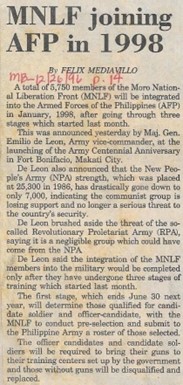


MindaNews photo by Charlies Saceda. https://mindanews.com/photo-of-the-day/2021/05/mindanao-in-pictures-2001-to-2021-part-1-of-10/#gsc.tab=0
Sources:
Jubair, Salah. The Long Road to Peace: Inside the GRP-MILF Peace Process. Davao City: Institute of Bangsamoro Studies, 2007.
Santos, Soliman. Dynamics and Directions of the Peace Negotiations Between the Philippine Government and the Moro Islamic Liberation Front. Davao City: Alternate Forum for Research in Mindanao, 2005.
Vitug, Marties D. and Gloria, Glenda M. Under the Crescent Moon: Rebellion in Mindanao. Ateneo Center for Social Policy and Public Affairs. Katipunan, Quezon City and Institute for Popular Democracy. Teachers’ Village, Quezon City. 2000.
https://www.philstar.com/headlines/2001/11/30/141875/145war-not-yet-over146
https://edition.cnn.com/2001/WORLD/asiapcf/southeast/11/26/phil.hostage/
Read More

Estrada’s All Out War Against MILF
March 21, 2000
Estrada’s All Out War Against MILF
On March 21, 2000, President Ejercito ‘Erap’ Estrada declared an all-out war against the Moro Islamic Liberation Front (MILF). A more than three month-bloody encounter ended with the fall of Camp Abubakar to the military but did not put an end to MILF’s secession movement. And the Abu Sayyaf Group still on a rampage. More Information: The cycle of truce and war led President Ejercito ‘Erap’ Estrada to mistrust the Muslims despite the Moro Islamic Liberation Front (MILF) support for his bid for presidency. Attempts to bring the MILF to a negotiating table failed. President Estrada gave the MILF an...On March 21, 2000, President Ejercito ‘Erap’ Estrada declared an all-out war against the Moro Islamic Liberation Front (MILF). A more than three month-bloody encounter ended with the fall of Camp Abubakar to the military but did not put an end to MILF’s secession movement. And the Abu Sayyaf Group still on a rampage.
More Information: The cycle of truce and war led President Ejercito ‘Erap’ Estrada to mistrust the Muslims despite the Moro Islamic Liberation Front (MILF) support for his bid for presidency. Attempts to bring the MILF to a negotiating table failed. President Estrada gave the MILF an ultimatum to back down while the MILF insisted on their demand for a substate. On March 21, 2000, after the MILF invaded the town of Kauswagan, Lanao del Norte, President Estrada ordered an all-out war against the MILF. The war lasted more than 3 months. On July 9, 2000, after seven days of relentless military attacks, the Armed Forces of the Philippines (AFP) captured MILF’s headquarters, Camp Abubakar. MILF Chairman Ustadz Salamat Hashim had to flee to Malaysia.
The all-out war which cost the government more than a billion pesos displacing thousands of civilians did not however put an end to the MILF secession movement. Meanwhile the Abu Sayyaf Group (ASG) remained a serious threat to the government’s peace efforts in Basilan and Sulu.
After the death of ASG’s founder Ustadz Abdjurajak Janjali in a police encounter in Basilan in 1998, his Islamic jihad died with him. and the group he left split into many factions. Many original members left and lay low, while some resorted into banditry and kidnapping. In the succeeding years, kidnap for ransom became the main activities of the ASG. From 2000-2001, the ASG has conducted 140 kidnap for ransom activities (KRA), the famous of which is the Sipadan kidnapping of 21 tourists in 2000. This idea of KRA however was introduced by Philippine National Police’s (PNP) deep penetrating agent Edwin Angeles, a half Muslim and a half Christian whom the PNP planted to infiltrate the ASG.
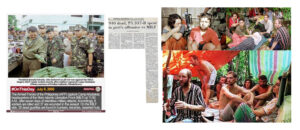
Sources:
Photo:
Some photos of Sipadan Kidnap Victim. Source: https://www.moniquestrydom.co.za/thekidnapping/
Source: https://thesun.my/archive/sipadan-kidnapper-caught-grenade-GTARCH461528
Vitug, Marties D. and Gloria, Glenda M. Under the Crescent Moon: Rebellion in Mindanao. Ateneo Center for Social Policy and Public Affairs. Katipunan, Quezon City and Institute for Popular Democracy. Teachers’ Village, Quezon City. 2000.
Banlaoi, Rommel C. AL-HARAKATUL AL-ISLAMIYYAH: Essays on the Abu Sayyaf Group Terrorism in the Philippines from Al-Qaeda to ISIS. 4th Edition. Manila: Philippine Institute for Peace, Violence and Terrorism Research, 2019.
https://newsinfo.inquirer.net/668386/estrada-stands-by-all-out-war-strategy-vs-milf#ixzz8iClHC1nE
Read More
ARROYO’S ALL OUT PEACE
2001
ARROYO’S ALL OUT PEACE
After being sworn as President in January 2001, Gloria Macapagal Arroyo launched an all-out peace with the Moro Islamic Liberation Front (MILF). But the Memorandum of Agreement on Ancestral Domain (MOA-AD) which she signed in 2008 was declared unconstitutional by the Supreme Court. Umbra Kato broke away and formed the Bangsamoro Islamic Freedom Fighters (BIFF), MNLF Chairman Nur Misuari was about to end his term as ARMM Governor, and the Abu Sayyaf Group (ASG) was still on its Kidnap for Ransom Activities. More Information: Gloria Macapagal Arroyo was Vice President when an all-out war was declared by President Erap Estrada...
After being sworn as President in January 2001, Gloria Macapagal Arroyo launched an all-out peace with the Moro Islamic Liberation Front (MILF). But the Memorandum of Agreement on Ancestral Domain (MOA-AD) which she signed in 2008 was declared unconstitutional by the Supreme Court. Umbra Kato broke away and formed the Bangsamoro Islamic Freedom Fighters (BIFF), MNLF Chairman Nur Misuari was about to end his term as ARMM Governor, and the Abu Sayyaf Group (ASG) was still on its Kidnap for Ransom Activities.
More Information:
Gloria Macapagal Arroyo was Vice President when an all-out war was declared by President Erap Estrada in March 2000. In less than a year, President Estrada was ousted by the Second People Power Revolution which installed Arroyo as President in January 2001. Reversing her predecessor’s policy, she launched all all-out peace with the Moro Islamic Liberation Front (MILF) with Malaysia serving as the third party.
Meanwhile, Chairman Misuari’s previous request to President Estrada to extend the term of the SPCPD for another 3 years and postpone the referendum on expanding the ARMM for 3 years was denied. This resulted in the attack of military infantry brigade headquarters in Indanan, Sulu by some of his loyalist members on November 19, 2001. Chairman Misuari fled to Malaysia but was arrested by Malaysian Authority and deported back to the Philippines. A week after, his other loyal members in Cabantangan office, an area allocated to the MNLF in Zamboanga, refused to vacate the complex and fought the military. Airstrike forced them to leave, taking more than a hundred civilian hostages.
Previously On June 02, 2001, the Abu Sayyaf Group (ASG) led by Abu Sabaya and Khadafi Janjalani entered the town of Lamitan in Basilan with their twenty hostages including three American Nationals which they kidnapped in Dos Palmas Resort in Palawan on May 27, 2001. But despite being surrounded by the military inside St. Peter’s Church and the Jose Torres Memorial Hospital, they managed to escape along with their hostages.
Peace talks with the MILF was also suspended for a year when the Philippine Armed Forces (AFP) launched an operation to capture MILF’s new headquarters in Buliok in the town of Pikit in Cotabato province in 2002. MILF Chairman Ustadz Salamat Hashim declared Jihad (Holy War) and called every Muslim with firearm to fight to death. The same year President Arroyo launched major battle against Abu Sayyaf Group (ASG) in Sulu and Basilan that killed Abu Sabaya, the ASG Basilan faction leader.
It was only in 2008 when President Arroyo announced the Memorandum of Agreement on Ancestral Domain (MOA-AD) with the MILF that aims to establish a substate called Bangsamoro Juridical Entity (BJE). However, the Supreme Court declared it unconstitutional. As a result, Ombra Katu along with his troops broke away from the Moro Islamic Liberation Front (MILF), formed his Bangsamoro Islamic Freedom Fighters (BIFF), and continued the war for independence. Also in Lanao, Abdullah Macapaar known as Kumander Bravo, commander of the northwestern Mindanao, led an attack on Lanao del Norte town of Kauswagan. During this time, Ustadz Salamat already passed away. He died of heart ailment and acute ulcer in 2003, and he was succeeded by his Vice Chairman for Military Affairs, Ahod ‘Murad’ Ebrahim.
Nevertheless, President Arroyo’s term ended with the expansion of the Autonomous Region in Muslim Mindanao (ARMM) which resulted in the inclusion of Basilan and Islamic City of Marawi. Eid al-Fitr (end of Ramdan) and Eid’l Adha (Feast of Sacrifice) were declared national holidays. It was also during her presidency that President Marcos Sr. program on mainstreaming Madrasah Education was realized through the Department of Education (DepEd). Arabic Language and Islamic Values (ALIVE) started to be taught in public schools within ARMM so that Muslim students will no longer go to private Madrasah (Islamic school) during weekend to learn Islam. Private Madrasah can also avail accreditation to get financial assistance, and their graduates can pursue higher learning in public schools. In 2010, she abolished the Office of Muslim Affairs (OMA) and replaced it the National Commission on Muslim Filipinos (NCMF) with more expanded programs such as promotion and development of Philippine Halal Industry to cater the growing needs of all Muslims in the country.
Sources:
Manila Bulletin, June 22, 2002. News Clippings of the UP Diliman Institute of Islamic Studies.
Philippine Daily Inquirer, June 29, 2002. News Clippings of the UP Diliman Institute of Islamic Studies.
Philippine Daily Inquirer, February 23, 2003. News Clippings of the UP Diliman Institute of Islamic Studies.
https://www.philstar.com/headlines/2001/02/23/89858/arroyo-signs-new-armm-organic-act
https://www.philstar.com/headlines/2002/11/14/183916/145eid-al-fitr146-now-national-holiday
https://newsinfo.inquirer.net/100801/ameril-umra-kato-dead-muslim-leader
Read More
President Aquino’s Bangsamoro Basic Law and the Crises of Peace Talks
2011
President Aquino’s Bangsamoro Basic Law and the Crises of Peace Talks
In August 2011, President Benigno ‘Pnoy’ Aquino Jr. flew to Japan to meet Ustadz Salamat Hashim’s successor, Ahod Ebrahim to renew the peace negotiations with the Moro Islamic Liberation Front (MILF). The result was the 2012 Framework Agreement of the Bangsamoro (FAB), 2014 Comprehensive Agreement of the Bangsamoro (CAB), and the 2015 Bangsamoro Basic Law (BBL). These serious efforts to bring lasting peace in Mindanao however were challenged by series of major crisis, the 2013 Sabah Standoff and Zamboanga Siege, and the 2015 Mamasapano incident that finally halted the peace agreement in the House of Congress. More Information: President...In August 2011, President Benigno ‘Pnoy’ Aquino Jr. flew to Japan to meet Ustadz Salamat Hashim’s successor, Ahod Ebrahim to renew the peace negotiations with the Moro Islamic Liberation Front (MILF). The result was the 2012 Framework Agreement of the Bangsamoro (FAB), 2014 Comprehensive Agreement of the Bangsamoro (CAB), and the 2015 Bangsamoro Basic Law (BBL). These serious efforts to bring lasting peace in Mindanao however were challenged by series of major crisis, the 2013 Sabah Standoff and Zamboanga Siege, and the 2015 Mamasapano incident that finally halted the peace agreement in the House of Congress.
More Information:
President Benigno Aquino Jr. was the son of the Late Senator Benigno Aquino Sr. and President Corazon Aquino. After his mother died in 2009, he was pushed to run for president in 2010 election and won. In August 2011, he left for Japan unannounced to meet Ustadz Salamat Hashim’s successor, Ahod ‘Murad’ Ebrahim, to fast-track the peace negotiations with the Moro Islamic Liberation Front (MILF). A year later, both parties signed the Framework Agreement of the Bangsamoro (FAB) on October 18, 2012, which seeks to establish a Bangsamoro entity that would eventually replace the existing Autonomous Region of Muslim Mindanao (ARMM) that according to President Aquino was a failed experiment. Transition Commission was created to draft the Bangsamoro Basic Law (BBL).
In his commitment to peace, President Aquino Jr. brushed aside the urge from some policy makers to declare an all-out war against the MILF following the death of 19 soldiers in an encounter in Basilan. FAB was followed by the Comprehensive Agreement of the Bangsamoro (CAB) in March 2012, The CAB was the consolidation of numerous accords and agreements between the Government and the Moro Islamic Liberation Front (MILF) that will pave the way for establishing the Bangsamoro Autonomous Region for Muslim Mindanao (BARMM). The House of Congress was expected to pass the BBL in 2015.
The success in the continuing peace talks was however disrupted when 80-100 Royal Forces of Sulu Sultan led by Datu Agbimuddin Kiram went to Lahad Datu, North Borneo to assert Sulu’s Territorial of North Borneo in February 2013. This resulted in the bilateral crisis between the Philippines and Malaysia who was serving as the third party in the peace negotiations with the MILF. MNLF Chairman Nur Misuari openly supported the so-called invasion and demanded representation in the ongoing peace negotiations. Both Chairman Misuari and Sulu Sultan were left out in the ongoing peace negotiations with the MILF. The crisis lasted 2 months with Datu Agbimuddin fighting against massive military assaults launched by the Malaysian government despite the appeal for a dialogue by President Aquino.

In August of the same year, while in Sulu, MNLF Chairman Misuari declared independence of the Bangsamoro Republik with him as the Commander-. This was followed a siege in Zamboanga City in September by the MNLF Sulu State Revolutionary Command (SSRC) led by Ustadz Habir Malik. This immediately turned into a national security crisis that lasted twenty-eight days resulting in the displacement of 82,000 residents and the destruction of almost 1,000 buildings.
The biggest tragedy that led to the death of the BBL in congress was the Mamasapano Incident in January 2015. But Ferdinand Martin Romualdez, who was then Representative of Leyte believed the proposed BBL was already doomed even before Congress amended it because it contained several unconstitutional provisions. He said Mamasapano clash may have been “providential” as the 44 SAF troopers’ deaths served as a “wake up call” for the government that time is not yet ripe for the proposed BBL’s passage.
At any rate, President Aquino’s administration left a legacy of Integrated History Act, a bill that lapsed into law mandating the integration of Filipino-Muslim and indigenous people’s history, culture and identity in the study of Philippine History in both basic and higher education. This is a bill previously filled by Lanao del Sur Congressman Pagalian M. Balindong. The first mosque in Simunul, Tawi-Tawi was also declared as National History Landmark. These and other previous positive developments contributed to the bridging of religious and cultural gaps among Filipino Christians and Muslims in the country.
Sources:
Sakili, Abraham P. 2012. The Bangsamoro Framework Agreement and the Mindanao Problem: Foregrounding Historical and Cultural Facts and Concepts for Social Justice and Peace in the Southern Philippines. Asian Studies: Journal of Critical Perspective in Aisa. Volume 48 Numbers 1 & 2.
Heydarian, Richard Javad. 2015. Report on The Quest for Peace: The Aquino Administration’s Peace Negotiations with the MILF and CPP-NPA-NDF. Norwegian Peace Building Resource Centre.
https://www.files.ethz.ch/isn/189990/6a4a521651243abd9d63bafa322d7da9.pdf
https://newsinfo.inquirer.net/36947/aquino-milf-chief-talk-peace-in-tokyo
https://peace.gov.ph/timeline/peace-process-milf/
https://globalnation.inquirer.net/64577/heirs-of-sultan-of-sulu-pursue-sabah-claim-on-their-own
https://www.philstar.com/nation/2013/08/15/1094161/nur-declares-independence-bangsamoro-republik
https://www.rappler.com/philippines/mindanao/zamboanga-city-remembers-2013-siege/
https://issuances-library.senate.gov.ph/subject/integrated-history-act-of-2016
https://jur.ph/law/summary/sheikh-karimul-makhdum-mosque-as-national-historical-landmark
Read More
MAMASAPANO INCIDENT – BBL Died with SAF 44
2015
MAMASAPANO INCIDENT – BBL Died with SAF 44
44 members of the Philippine National Police (PNP) Special Action Force (SAF) died in an encounter with the Bangsamoro Islamic Freedom Fighters (BIFF) in Mamasapano in January 2015. The incident which the media dramatized as massacre prompted the House of Congress to halt the MILF-GRP peace process. This incident led to the rise of Maute Brothers. More Information: Early morning of January 25, 2015, Special Action Force (SAF) of the Philippine National Police (PNP) entered Mamasapano area in Maguindanao to arrest Zulkifli Abdhir known as Marwan who has been hiding in Mindanao with Bangsamoro Islamic Freedom Fighters (BIFF)....44 members of the Philippine National Police (PNP) Special Action Force (SAF) died in an encounter with the Bangsamoro Islamic Freedom Fighters (BIFF) in Mamasapano in January 2015. The incident which the media dramatized as massacre prompted the House of Congress to halt the MILF-GRP peace process. This incident led to the rise of Maute Brothers.
More Information:
Early morning of January 25, 2015, Special Action Force (SAF) of the Philippine National Police (PNP) entered Mamasapano area in Maguindanao to arrest Zulkifli Abdhir known as Marwan who has been hiding in Mindanao with Bangsamoro Islamic Freedom Fighters (BIFF).
Marwan was a bomb maker and most wanted terrorist in the US Federal Bureau of Investigation (FBI) with 5 million US Dollar bounty on his head. He was suspected of leading the Kumpulan Mujahidin Malaysia (KMM), which was part of the central command of the Jemaah Islamiyah (JI), and of involvement in the 2002 Bali bombings in 2002.
The arrest mission called Operation Exodus resulted in an encounter with the BIFF that killed 44 members of the SAF. Mainstream media dramatized the incident as a massacre, but the findings of the Commission on Human Rights (CHR) says that it was a misencounter since both the BIFF and SAF did not intend to fight. The House of Congress on February 02, 2015, went on to halt the passage of the Bangsamoro Basic Law (BBL) that jeopardized the GRP-MILF peace process. This led to the rise of the Maute Brothers.
Two years later, on January 01, 2017, President Rodrigo Duterte in his speech at Malacañang Palace addressed to the families of Fallen SAF 44 exposed the CIA involvement in the operation. He further said that the arrest mission without coordinating with MILF was a violation of MILF-GRP peace agreement since there was the existence of the ceasefire agreement signed in Basilan on November 10, 2008 which created the Coordinating Committee on the Cessation of Hostilities (CCCH) and Ad Hoc Joint Action Group (AHJAG).

Sources:
https://discover.hubpages.com/politics/SAF-44-Mamasapano-Clash-in-the-Philippines
https://manilastandard.net/?p=169810
https://peace.gov.ph/2022/11/govt-milf-sign-ceasefire-agreement-in-basilan/
Read More
President Duterte’s War and Peace Efforts
2016
President Duterte’s War and Peace Efforts
Knowing well the complexities of the Muslims’ armed struggle and the dynamics within the Bangsamoro armed groups, President Rodrigo Duterte laid down a more inclusive peace deal with both the Moro National Liberation Front (MNLF) and the Moro Islamic Liberation Front (MILF). But he has yet to confront the consequences of the failure of previous peace talks, the Abu Sayyaf and Maute Groups. More Information: Before he became president, Rodrigo Duterte has been mayor of Davao City in Mindanao for quite long. His acquaintance with many Muslim leaders including MNLF Chairman Nur Misuari and MILF Chairman Ahod Ebrahim made him...Knowing well the complexities of the Muslims’ armed struggle and the dynamics within the Bangsamoro armed groups, President Rodrigo Duterte laid down a more inclusive peace deal with both the Moro National Liberation Front (MNLF) and the Moro Islamic Liberation Front (MILF). But he has yet to confront the consequences of the failure of previous peace talks, the Abu Sayyaf and Maute Groups.
More Information:
Before he became president, Rodrigo Duterte has been mayor of Davao City in Mindanao for quite long. His acquaintance with many Muslim leaders including MNLF Chairman Nur Misuari and MILF Chairman Ahod Ebrahim made him familiar with the long history of the Muslims’ armed resistance and the dynamics within the Bangsamoro armed groups.
Immediately after his victory as president in the May 2016 elections, President Duterte sought to meet the MILF leaders including former MNLF Vice Chairman of the Central Committee Abulkhayr Alonto in his home city in Davao. Two months after, he approved a roadmap on the Bangsamoro peace process involving the implementation and consolidation of all signed peace agreements and pertinent legislation which was part of his six-point peace and development agenda. Then on November 07, 2016, he signed Executive Order (EO) No. 8 reconstituting the Bangsamoro Transition Commission (BTC). This EO sought to establish a broader BTC, which would be responsible for drafting a law that would lay the legal groundwork for the future Bangsamoro government in Mindanao. The EO also aimed to ensure that all stakeholders, including local government units (LGUs), women, youth, and other sectoral groups, were involved in the law’s creation, addressing concerns about the exclusion of certain groups during the drafting of the previous BBL. Additionally, the expanded BTC members from 15 to 21 included representatives from the MNLF breakaway group led by Muslimin Sema, who were allocated three seats on the commission by the government. This was a few days after the president had granted MNLF Chairman Nur Misuari a temporary freedom from the case of his alleged involvement in the 2013 Zamboanga Siege. A separate talk with MNLF Chairman Misuari in his hometown where President Duterte housed him was also pursued.
Meanwhile, he deployed at least 7,000 troops to launch a massive military campaign against the Abu Sayyaf Group (ASG) in Sulu a week after a bomb exploded on September 02, 2016, that killed 14 people and injured more than 60 in a night market in Davao City. But while he was able to neutralize the ASG in Sulu, a new group, The Maute-ASG Basilan Alliance Group, attacked Marawi City in May 2017 which compelled him to declare Martial Law in Mindanao.
Sources:
https://peace.gov.ph/2016/11/pres-duterte-to-sign-eo-btc/
https://peace.gov.ph/2016/11/eo-activates-enhanced-btc-seeks-inclusivity-bangsamoro-peace-process/
https://www.philstar.com/headlines/2016/11/08/1640544/rody-expands-membership-bangsamoro-transition-commission
https://www.aljazeera.com/news/2016/9/10/philippines-duterte-warns-more-bombings-likely
https://edition.cnn.com/2017/05/23/asia/philippines-mindanao-clashes-martial-law/index.html

The Birth of Maute-ASG Alliance and the 2017 Marawi Siege
2017
The Birth of Maute-ASG Alliance and the 2017 Marawi Siege
The death of the Bangsamoro Basic Law (BBL) in the House of Congress in February 2015 caused widespread frustration within the Moro Islamic Liberation Front (MILF). It was at this point that the Maute brothers started to openly criticize the government and pushed for an Independent Islamic State. Their combined forces with Isnilon Hapilon, Abu Sayyaf Group leader in Basilan, finally attacked Marawi City in May 2017 that destroyed almost the entire city. More Description: Like the Abu Sayyaf, Omar and Abdullah Maute, known as the Maute Brothers, were born out of the compromised struggle and failure of peace negotiations...The death of the Bangsamoro Basic Law (BBL) in the House of Congress in February 2015 caused widespread frustration within the Moro Islamic Liberation Front (MILF). It was at this point that the Maute brothers started to openly criticize the government and pushed for an Independent Islamic State. Their combined forces with Isnilon Hapilon, Abu Sayyaf Group leader in Basilan, finally attacked Marawi City in May 2017 that destroyed almost the entire city.
More Description: Like the Abu Sayyaf, Omar and Abdullah Maute, known as the Maute Brothers, were born out of the compromised struggle and failure of peace negotiations between the government and the Moro Islamic Liberation Front (MILF). When the Bangsamoro Basic Law (BBL) was halted in the House of Congress in February 2015, Many MILF leaders and members were frustrated. One of them was Engr. Cayamura, father of the Maute Brothers, Omar and Abdullah.
Engr. Cayamura was a visionary and reformist. Before his sons attacked Marawi City, he was the president of Insan Islamic Assembly (ISA), a local Islamic organization founded in the 70s. When many secular organizations such as fraternities were established in MSU’s main campus in Marawi, ISA recruited many M’ranao students. Engr. Cayamura wanted to save students from those secular organizations by promoting Islamic values to the young Muslims. This reform he wanted to do was carried on by his sons when they came back from abroad.
Omar who wanted to become a peace maker when he graduated from high school from Dansalan College (the only Christian college in Marawi) came home with radical Islamic ideology. He studied Islamic theology in Egypt while his brother Abdullah in Jordan. It was not certain whether their schooling abroad was part of their father’s future plan of reforming their areas. It was not also certain where abroad Omar became radical. His classmates in Egypt recalled no signs of radical thoughts when he was there. But his Indonesian father-in-law accordingly sent him home after learning that he was teaching Islamic radical ideas in his school in Indonesia where he let Omar taught.
When the Maute brothers came home, they started to organize and introduce reform in Marawi by imposing the wearing of hijab (head cover) for Muslim women including those students in MSU Marawi. They prohibited karaoke, the selling of liquor, and started killing drug dealers.
When the Bangsamoro Basic Law (BBL) was killed in the House of Congress in 2015, the Maute Brothers openly pushed for Islamic State previously advocated by Ustadz Janjalani. In 2016, the same year Hapilon attacked the military in Tipo-Tipo, Basilan, they attacked the military in Butig. It was here that they became known.
Isnilon Hapilon was a student of the founder of the Abu Sayyaf Group, Ustadz Abdujarak Janjalani. After the death of Khadafy and Aldam Tilao (Abu Sabaya) in 2002, he took care of the Abu Sayyaf Basilan faction. To revive the Islamic ideology that his mentor, Ustadz Abdurajak has advocated, in 2014, he swore allegiance to Abu Bakr al-Baghdadi, the ISIS leader in 2014. While he was able to get the recognition of the ISIS when he was designated Amir (leader) of Southeast Asia, he failed to get the support of the local people due to the questionable credibility and authenticity of the ISIS call for Islamic Caliphate. It was in Marawi City where he found a strong ally. A heavy military campaign response against his attack in 2016 forced him to escape to Marawi City where joined the Maute Brothers. In May 2017, their combined forces and attacked Marawi City.
In a video uploaded in YouTube during the war, Abdullah called all M’ranaos to fight with them because he said, the death of BBL in Congress shows how the government continuously betrayed the Muslims and that they should wage Jihad to establish an independent Islamic State. Omar and Isnilon, along with many of their followers, were killed in the war that lasted nearly six months displacing 98 percent of the total population of the city that was almost destroyed.
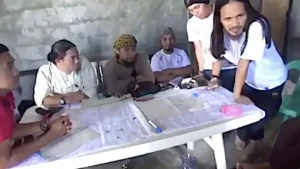
Sources:
Absari, Darwin J. The Bangsamoro Armed Struggle: Dynamics of Split and the Rise of Islamic Radicalism. Unpublished article.
https://www.unhcr.org/ph/marawi-crisis
Read More

President Duterte and the Bangsamoro Autonomous Region for Muslim Mindanao (BARMM)
July 26, 2018
President Duterte and the Bangsamoro Autonomous Region for Muslim Mindanao (BARMM)
Description: On July 26, 2018, just three days after he delivered his third State of the Nation Address (SONA), President Duterte signed the Bangsamoro Organic Law. The long history of peace negotiations with the Moro Islamic Liberation Front (MILF) finally came to fruition. The Bangsamoro Autonomous Region for Muslim Mindanao (BARMM) was established with the MILF Chairman Ahod “Murad” Ebrahim as its interim chief minister. More Information: The Marawi siege that occurred in May 2017 did not stop president Duterte in pursuing peace in Mindanao. Barely two months after, the first draft of the Bangsamoro Basic Law (BBL) was submitted...Description: On July 26, 2018, just three days after he delivered his third State of the Nation Address (SONA), President Duterte signed the Bangsamoro Organic Law. The long history of peace negotiations with the Moro Islamic Liberation Front (MILF) finally came to fruition. The Bangsamoro Autonomous Region for Muslim Mindanao (BARMM) was established with the MILF Chairman Ahod “Murad” Ebrahim as its interim chief minister.
More Information: The Marawi siege that occurred in May 2017 did not stop president Duterte in pursuing peace in Mindanao. Barely two months after, the first draft of the Bangsamoro Basic Law (BBL) was submitted to him on July 17, 2017.
After the first public consultation in Mindanao from May 30-31, 2018, led by Senators Zubiri, Angara, Ejercito, and Hontiveros in Cotabato, the House of Representatives unanimously passed the BBL on its third and final reading. This bill, which aims to replace the ARMM, was certified as urgent by President Rodrigo Duterte and passed with 227 votes in favor, 11 against, and 2 abstentions. The final version of the BBL, which was renamed the Organic Law for the Bangsamoro Autonomous Region in Muslim Mindanao, or the Bangsamoro Organic Law (BOL), also known as Republic Act No. 11054 was approved by the 29-member bicameral committee on July 18, 2018, after six days of late-night discussions and multiple challenges. On July 23, 2018, the House of Representatives and the Senate ratified the proposed Bangsamoro Organic Law. Finally on July 27, 2018, President Rodrigo Duterte signed Republic Act No. 11054, known as the Bangsamoro Organic Law, three days after delivering his third State of the Nation Address and following the law’s ratification by both the Senate and the House of Representatives.
Challenge to peace, however, continued when Jolo Cathedral was bombed by an alleged foreign terrorist. At least 20 people, military and civilians, were killed and 111 injured. The bombing took place a few days after the plebiscite for the BBL that would create the Bangsamoro Autonomous Region for Muslim Mindanao (BBL). Sulu also voted to be excluded in the said BARMM. Still this incident did not hamper President Duterte’s commitment to peace. Finally on March 09, 2019, the Bangsamoro Transition Authority that would govern the BARMM was inaugurated with MILF chairman as the interim chief minister. Kumander Bravo was also appointed BTA member. the BTA is composed of 80 members, 41 will be appointed by MILF while the remaining 39 will come from the government side.
The BARMM consists of 5 provinces, 3 cities, 116 municipalities, 2,590 barangays and 1 special geographic area (SGA) with assured funding of an annual block grant which is 5% share of the national internal revenue or some 59 billion pesos. Before his term ended, President Duterte approved the extension of the BTA until 2025.
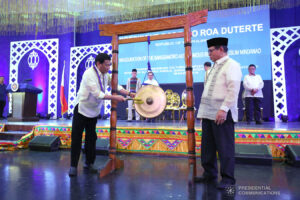
Sources:
https://newsinfo.inquirer.net/995859/house-approves-bbl-on-third-and-final-reading
https://www.pna.gov.ph/articles/1036976
https://newsinfo.inquirer.net/1011517/bicam-approves-bangsamoro-organic-law
https://legacy.senate.gov.ph/press_release/2018/0724_prib4.asp
https://newsinfo.inquirer.net/1014757/duterte-signs-bangsamoro-organic-law
https://peace.gov.ph/2018/07/prrd-signs-bangsamoro-organic-law/
https://newsinfo.inquirer.net/1078076/jolo-sulu-blast-bombing-death-toll-injured-news
https://www.rappler.com/philippines/208331-document-bangsamoro-organic-law/
Read More

BBM UNITY
September 15, 2022
BBM UNITY
Description: President Ferdinand Marcos Jr.’s call for national unity led the two major Bangsamoro fronts, the MILF and MNLF to finally unite and work for MILF’s Moral Governance in the Bangsamoro Autonomous Region for Muslim Mindanao (BARMM). More Information: “Unity,” this was the call of President Ferdinand Marcos Jr. during the campaign period for the May 2022 elections. Despite MILF’s support for his opponent, the former Vice President Leni Robredo, President Marcos Jr. supported the BARMM in a more inclusive way by appointing the son and daughter of MNLF Chairman Nur Misuari. Another two sons of MNLF leaders belonging...Description: President Ferdinand Marcos Jr.’s call for national unity led the two major Bangsamoro fronts, the MILF and MNLF to finally unite and work for MILF’s Moral Governance in the Bangsamoro Autonomous Region for Muslim Mindanao (BARMM).
More Information:
“Unity,” this was the call of President Ferdinand Marcos Jr. during the campaign period for the May 2022 elections. Despite MILF’s support for his opponent, the former Vice President Leni Robredo, President Marcos Jr. supported the BARMM in a more inclusive way by appointing the son and daughter of MNLF Chairman Nur Misuari. Another two sons of MNLF leaders belonging to the Executive 15 (EC15), another breakaway group, Muslimin Sema and Yusop Jikiri, became members of the Bangsamoro Transition Authority (BTA) This initiative was welcomed by MILF Chairman Ahod ‘Murad’ Ebrahim. On September 15, 2022, MNLF Chairman Misuari and MILF Chairman Ebrahim were joined on stage by President Marcos Jr. during the opening ceremony of the BTA in Cotabato City.
The first attempt to unite both the MNLF and MILF was initiated by the Organization of Islamic Conference (OIC) from the time MILF founder Ustadz Salamat left the organization. It was repeated during the time of President Corazon Aquino and continued until the Ramos Administration. MNLF Chairman Misuari visited Ustadz Salamat in Camp Abubakar in 1997. The visit was accordingly to invite the Ustadz to rejoin the MNLF in the implementation of the final peace agreement. But MILF Chairman Ustadz Salamat decided to observe the situation first. It was only during the time of President Marcos Jr. when unity among the Bangsamoro fronts was achieved, at least for now. He also signed the law creating three additional Shari’a Judicial Districts and 12 Shari’a circuit courts nationwide.
Another milestone for Muslims’ history was when President Marcos Jr. signed Administrative Order No. 10 on Nov. 7, 2023, creating the steering committee tasked to facilitate the planning and implementation of programs, projects, and activities for the 650th anniversary celebration of Philippine Muslim History and Heritage. This and the Integrated History Act will facilitate the bridging of religious and cultural gaps between the Muslims and their Christian brethren towards a harmonious relationship that is necessary to build a unified and strong nation where the Muslims can actively participate.

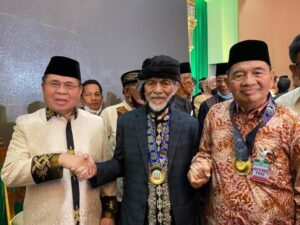
Sources:
https://ptvnews.ph/marcos-joins-misuari-ebrahim-during-bta-parliament-inauguration/
https://www.pna.gov.ph/articles/1213315
https://newsinfo.inquirer.net/1973079/law-creating-more-sharia-court-judicial-districts
Read More
